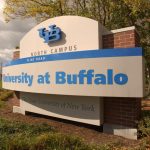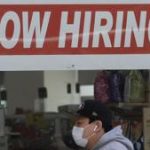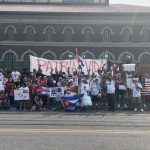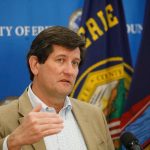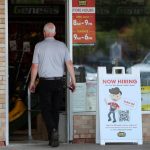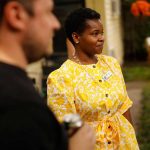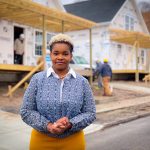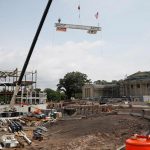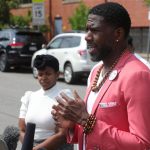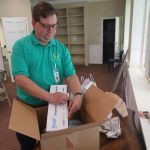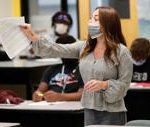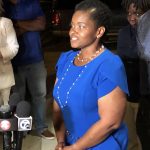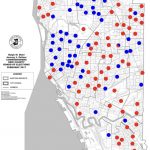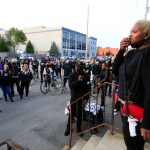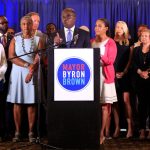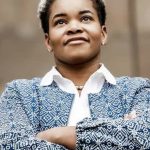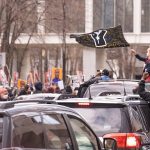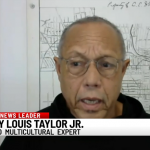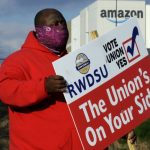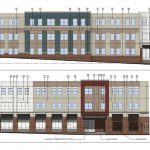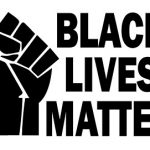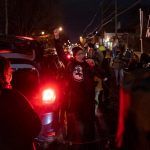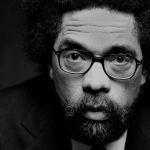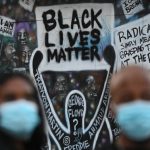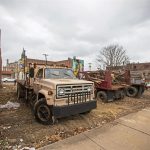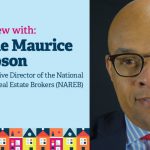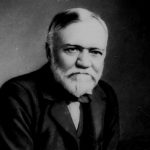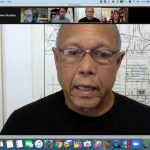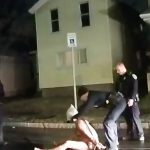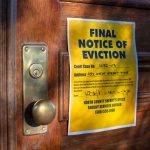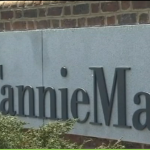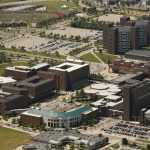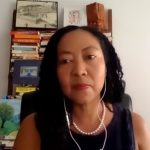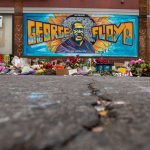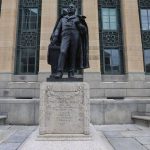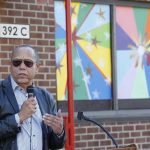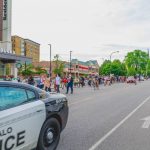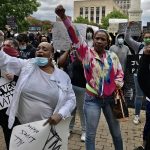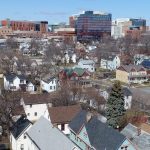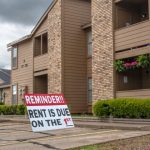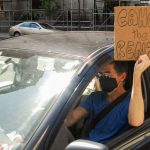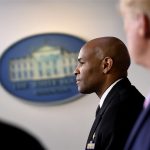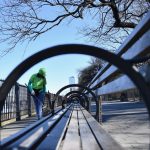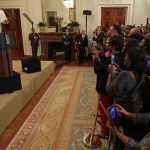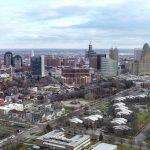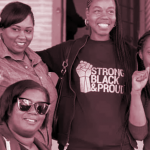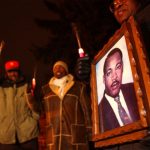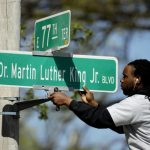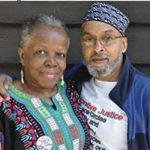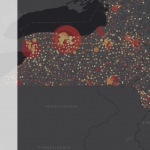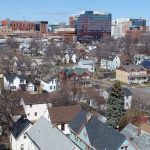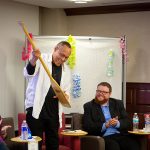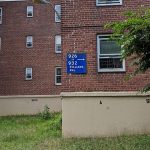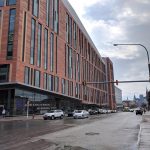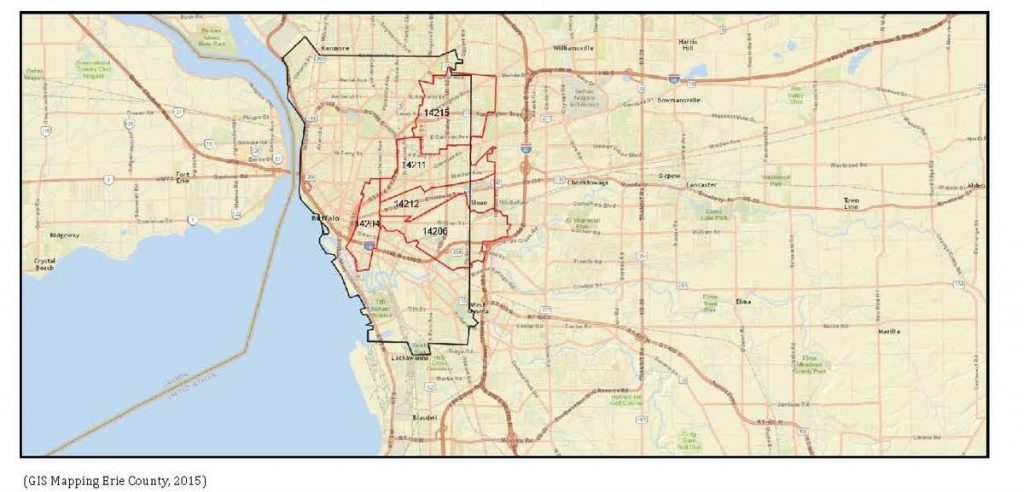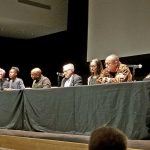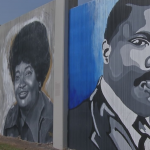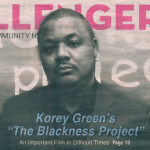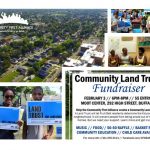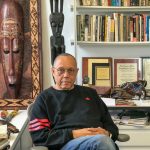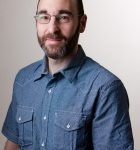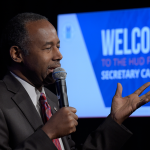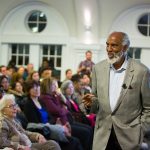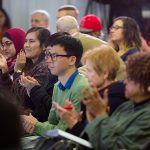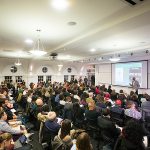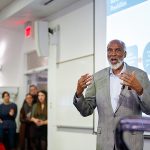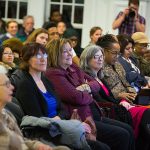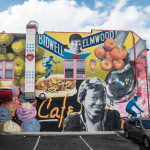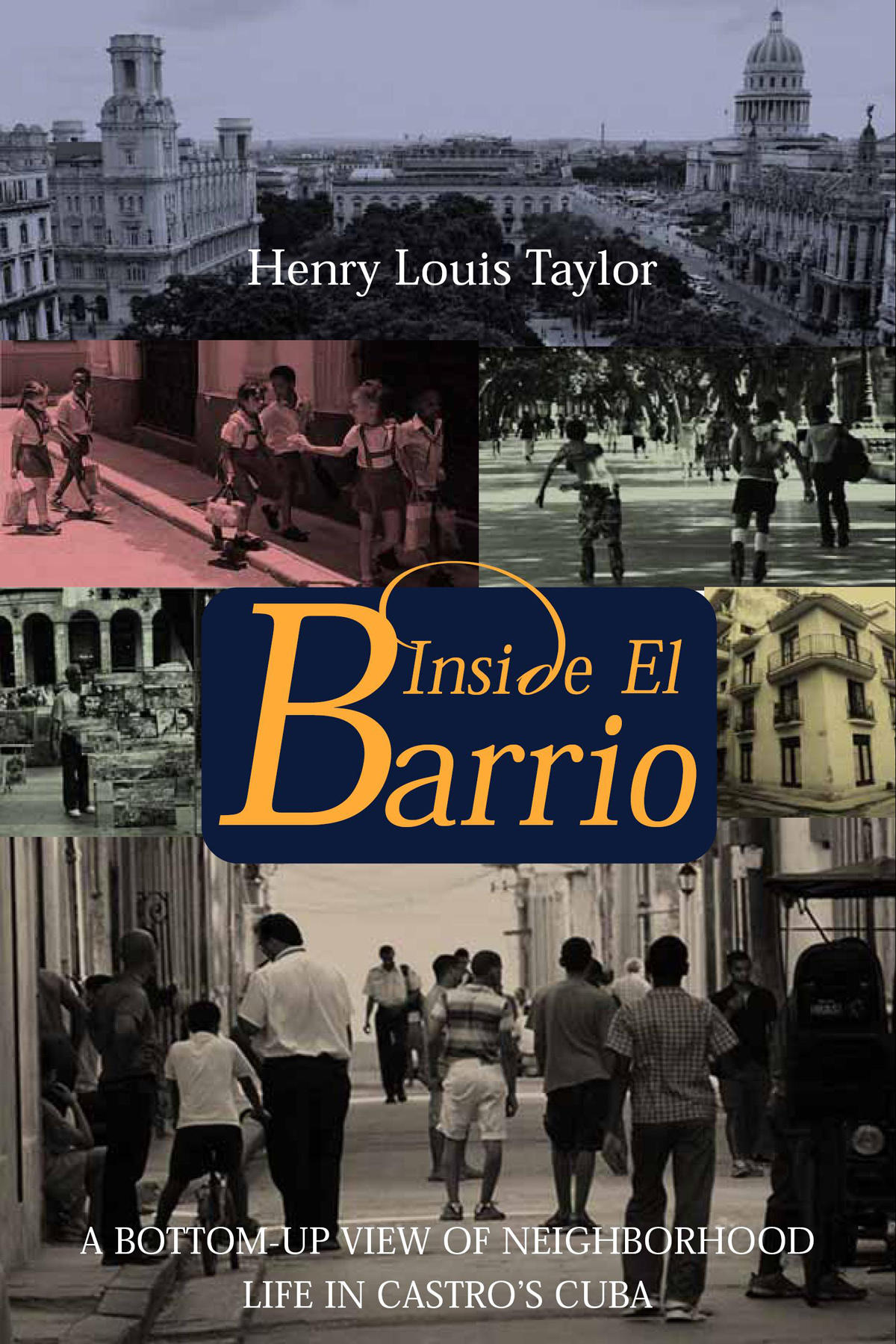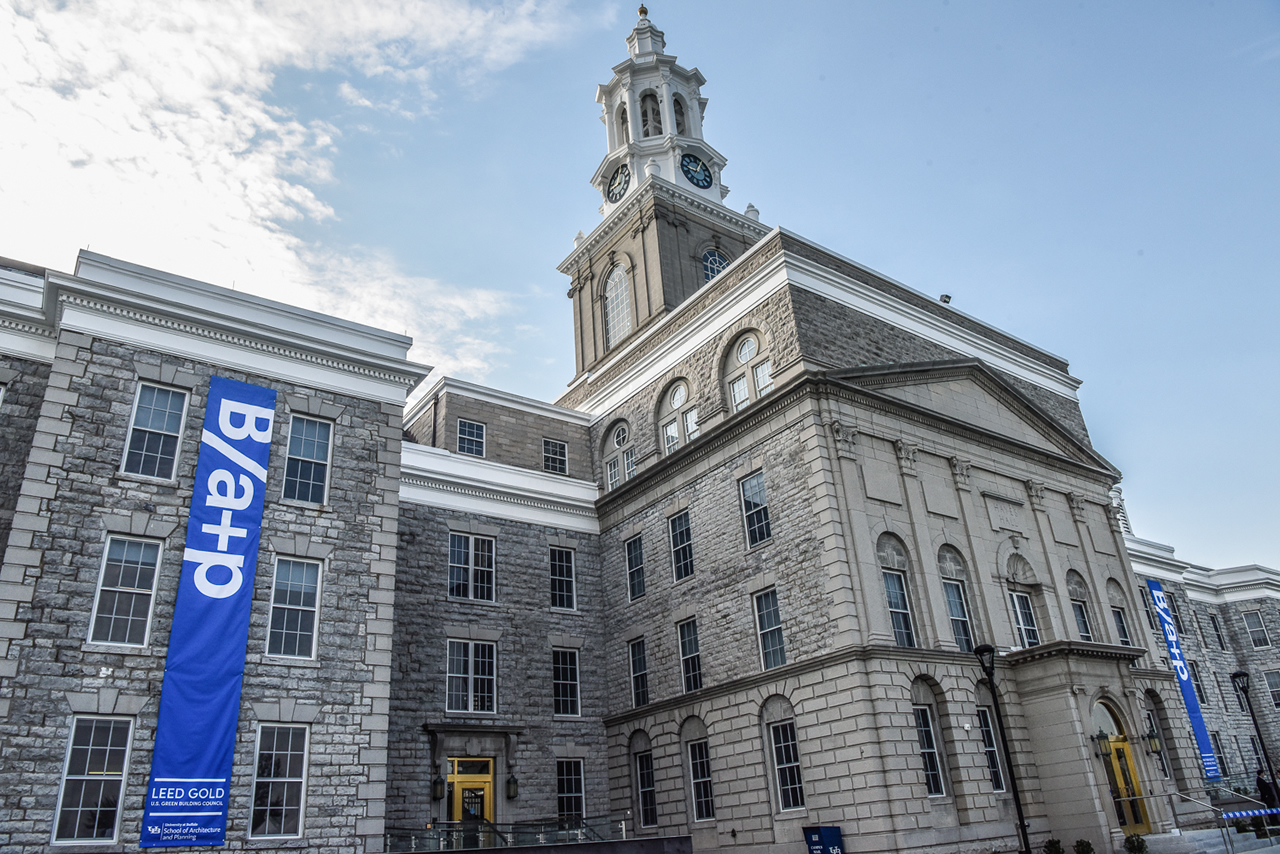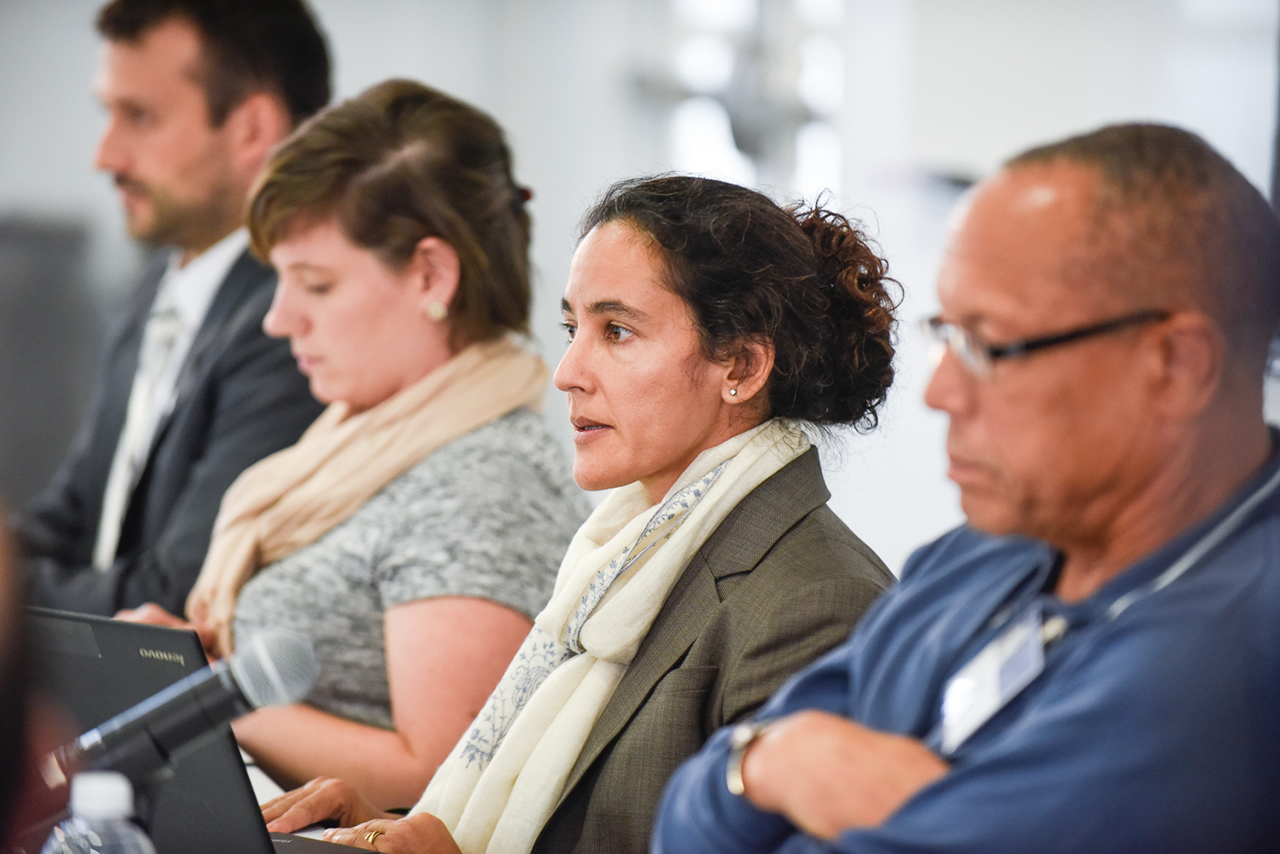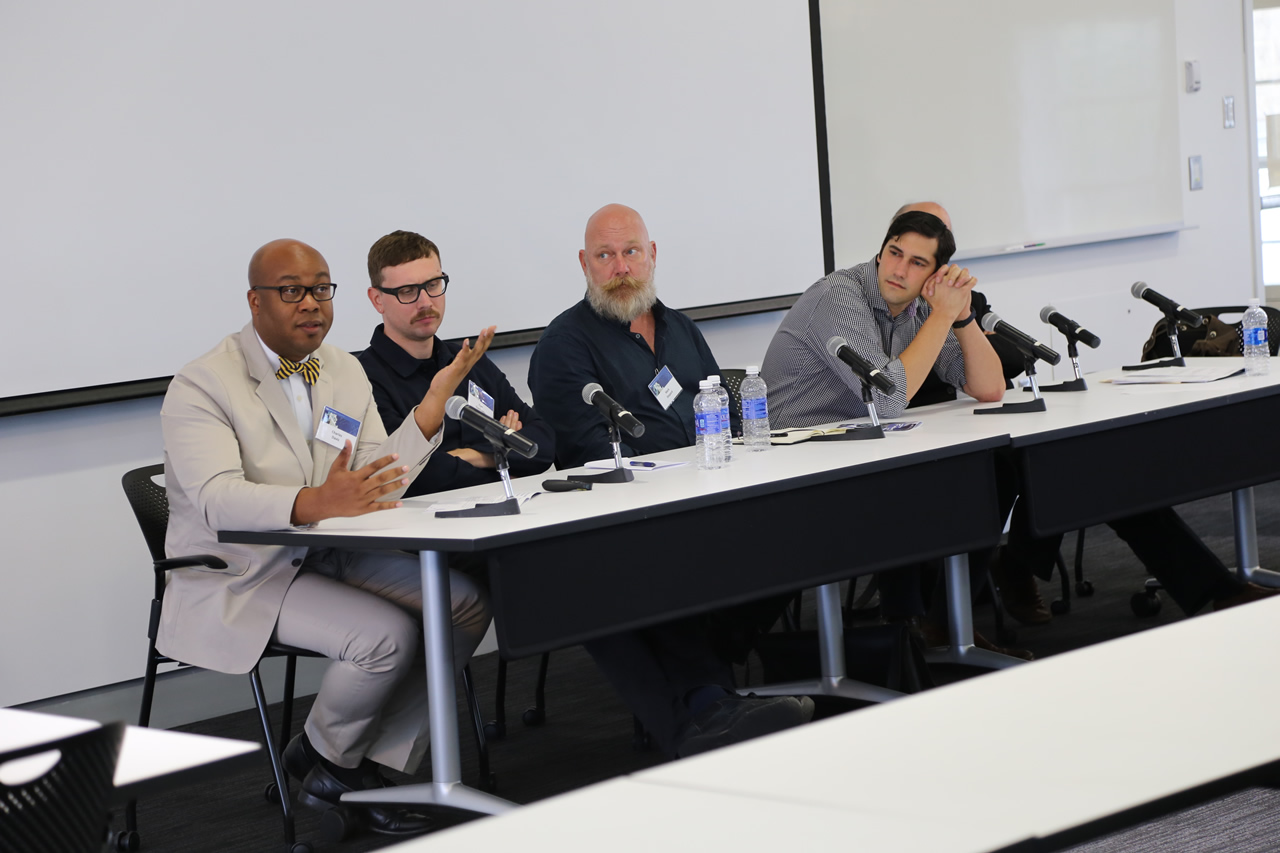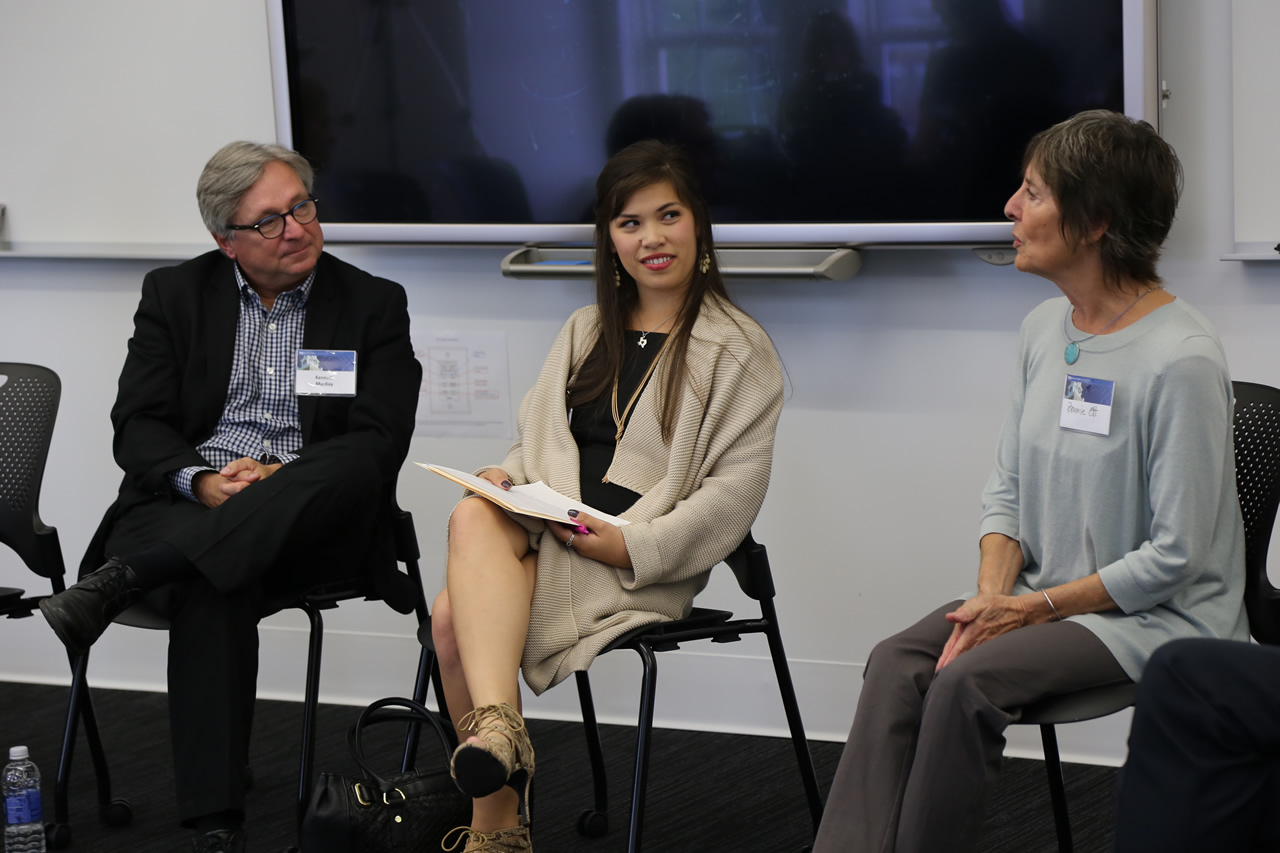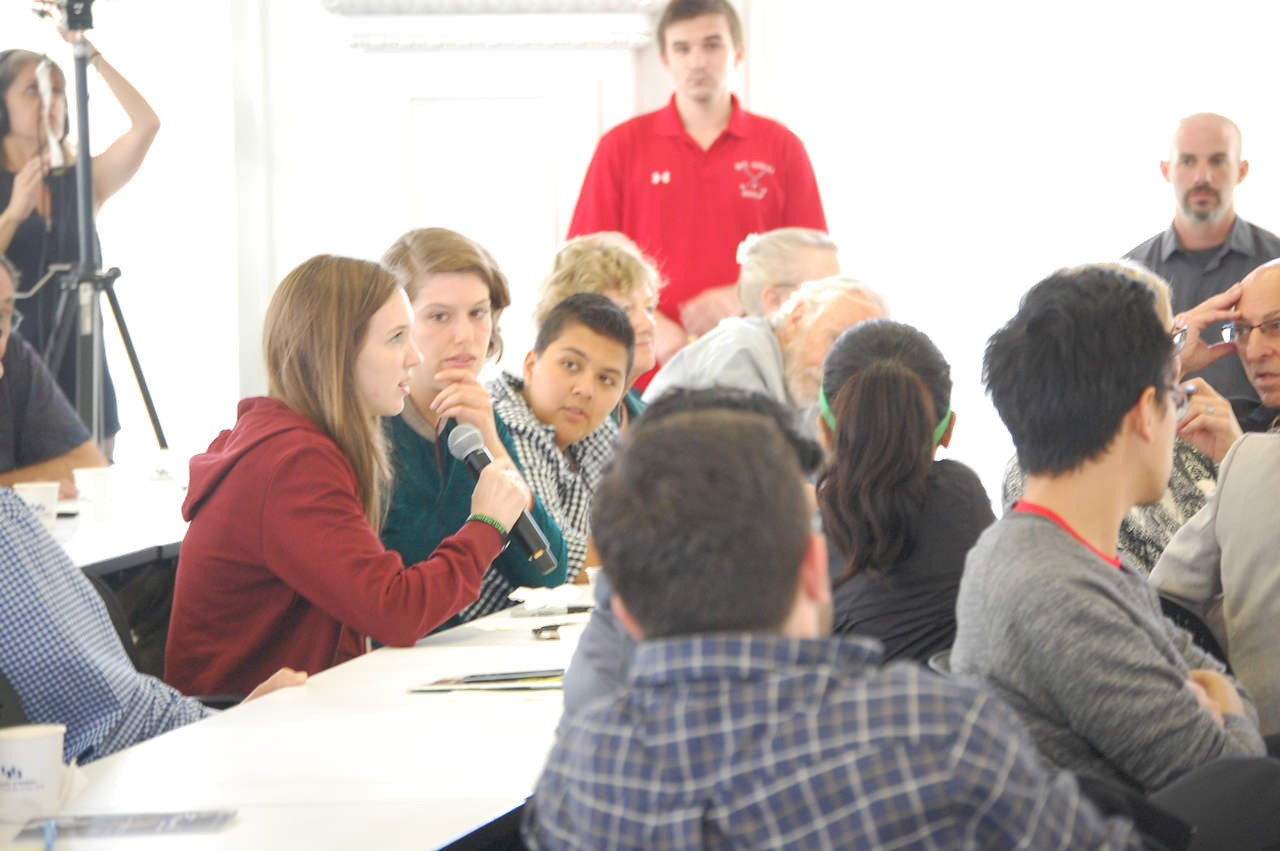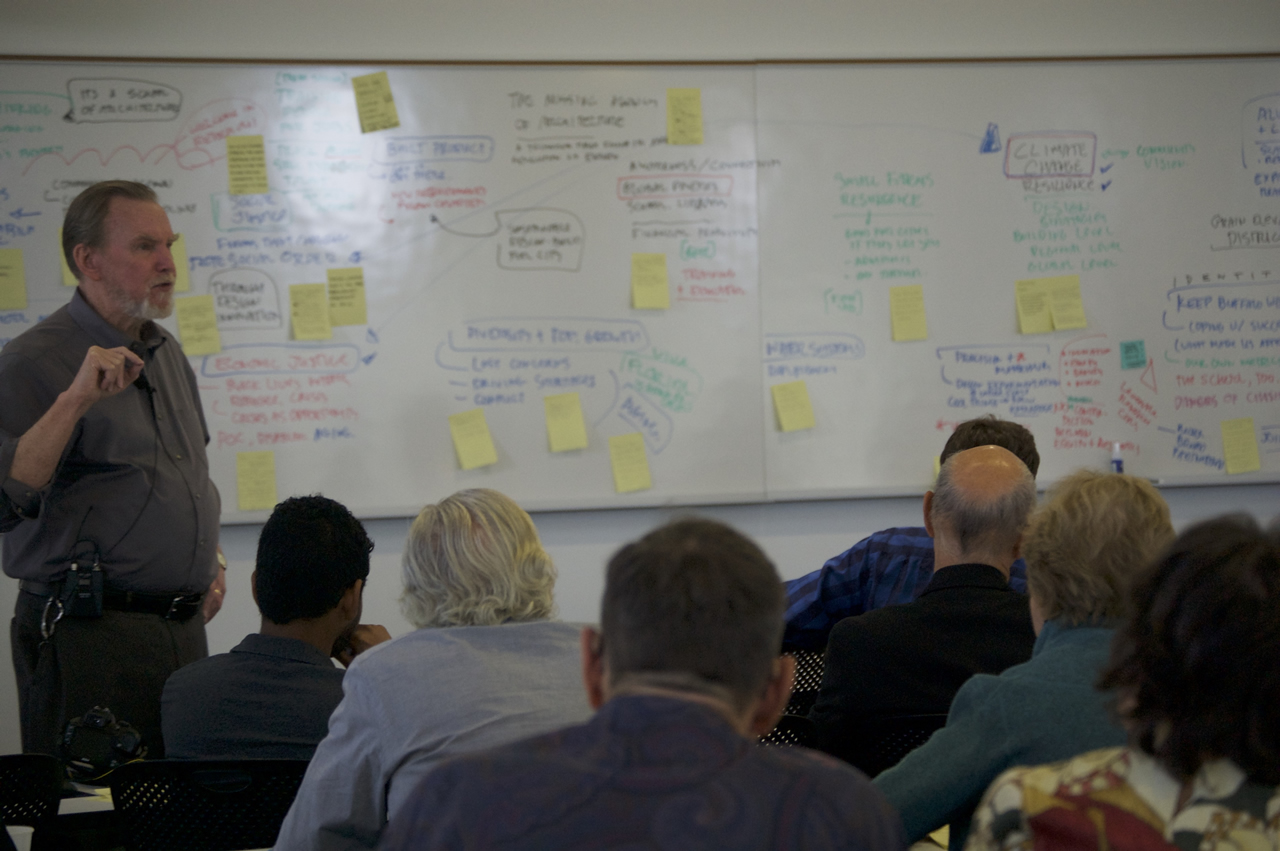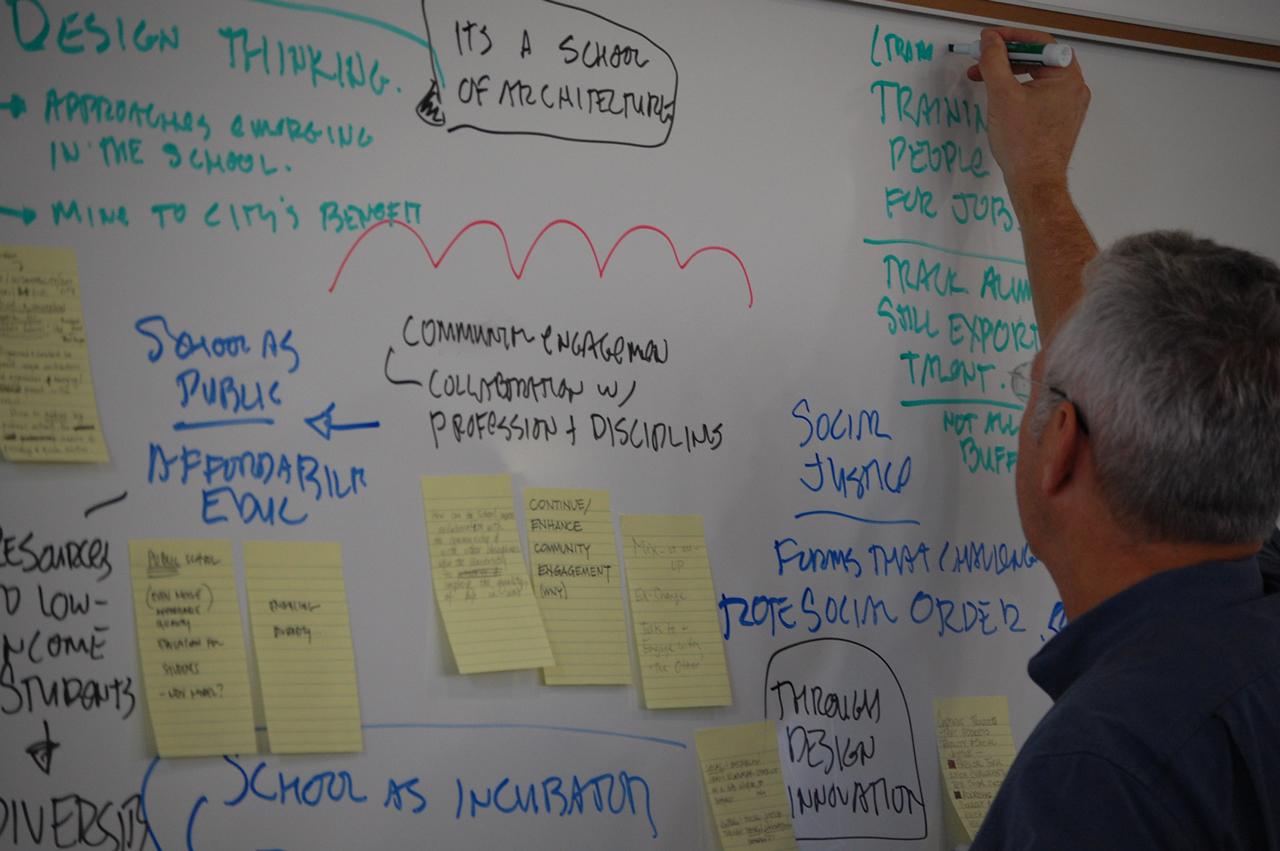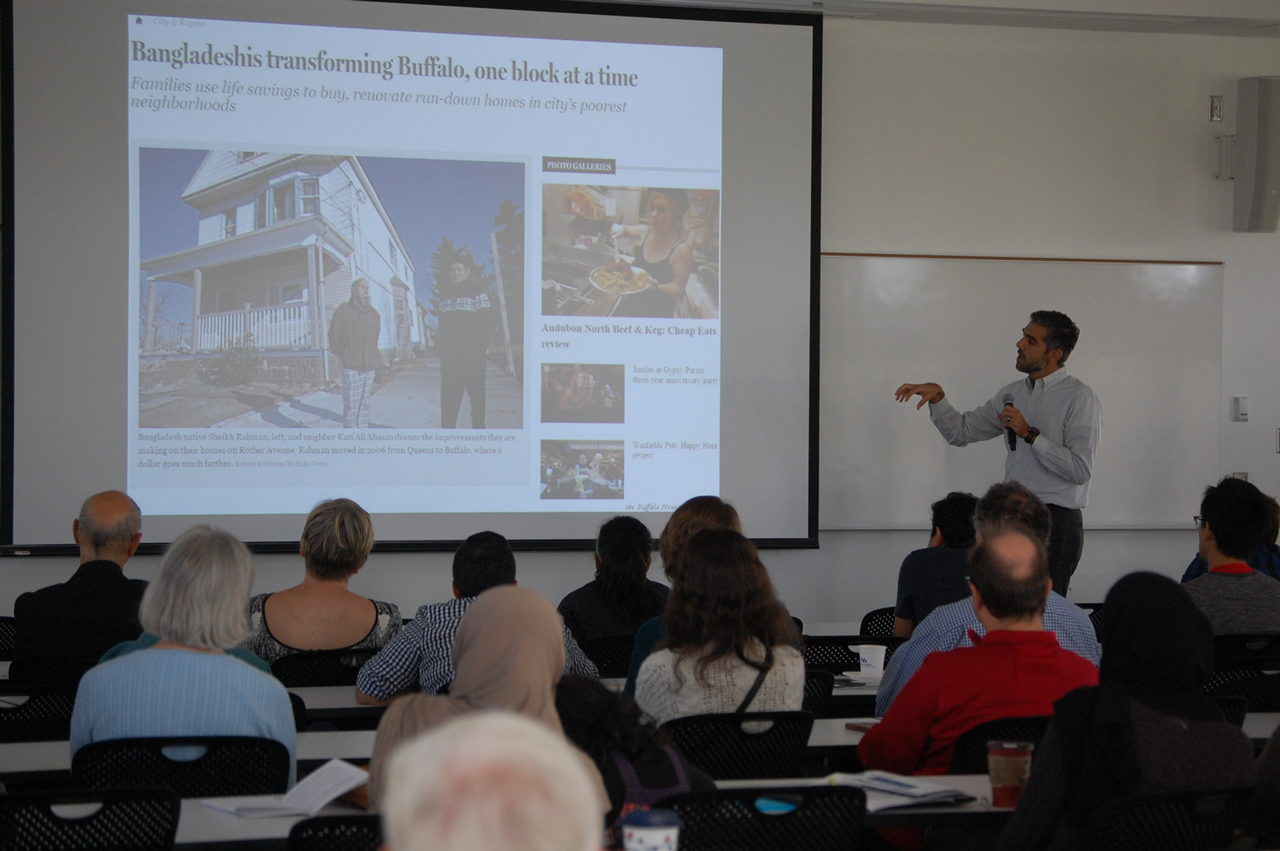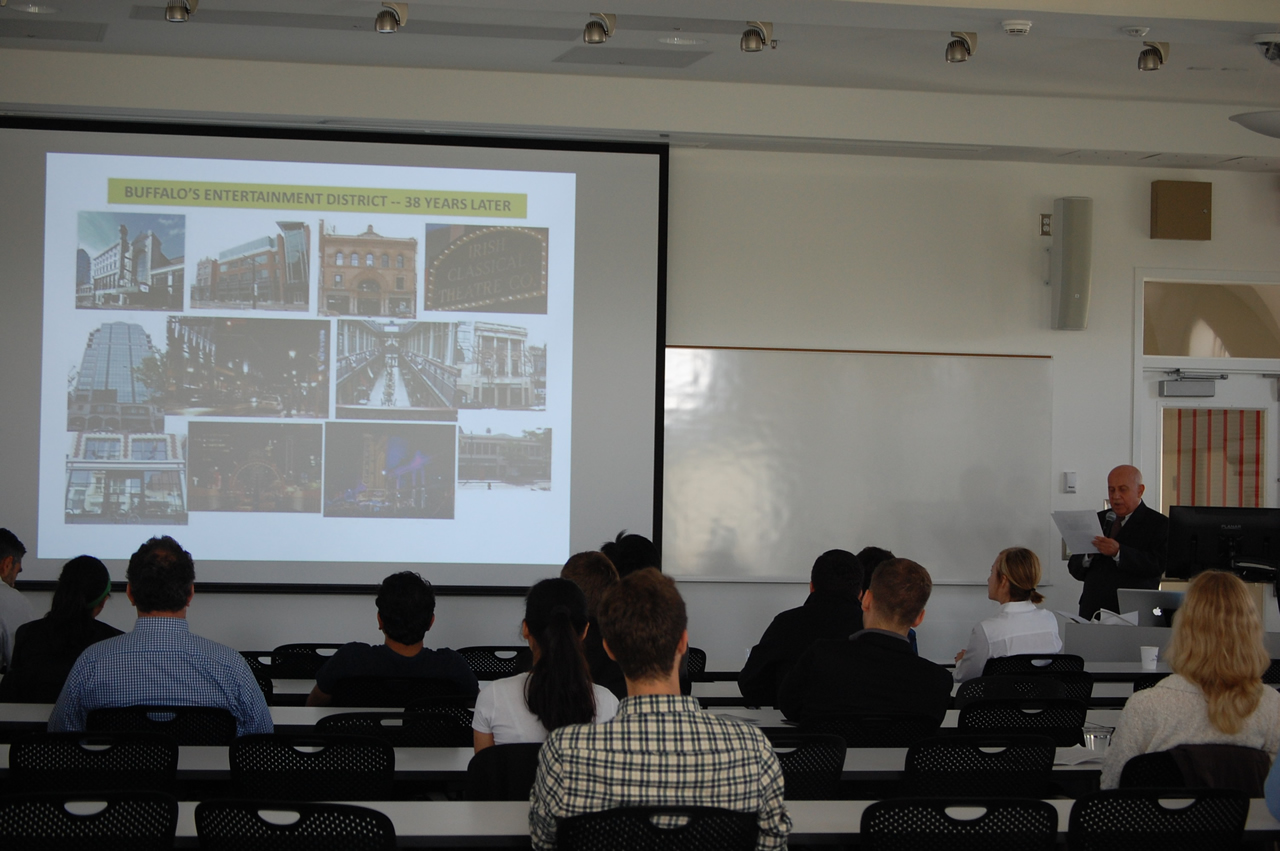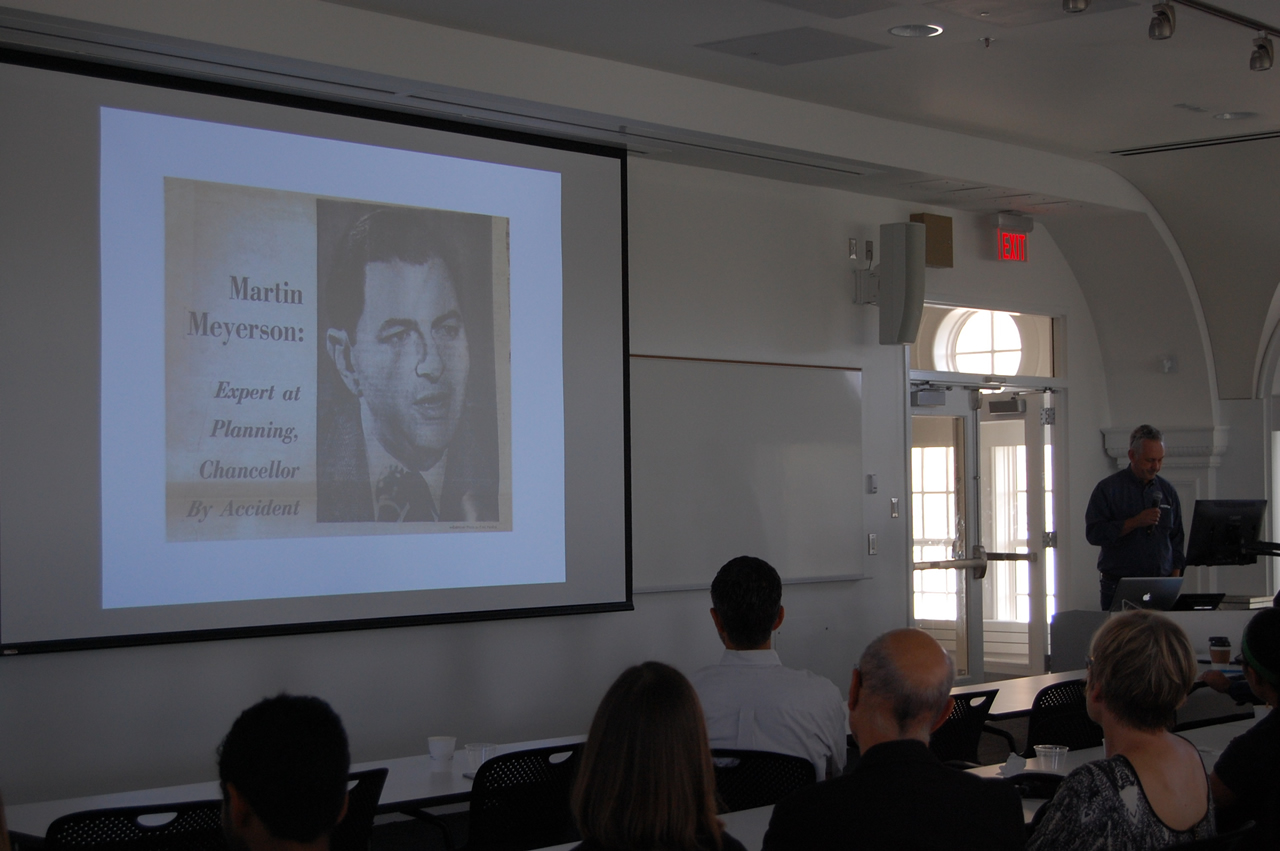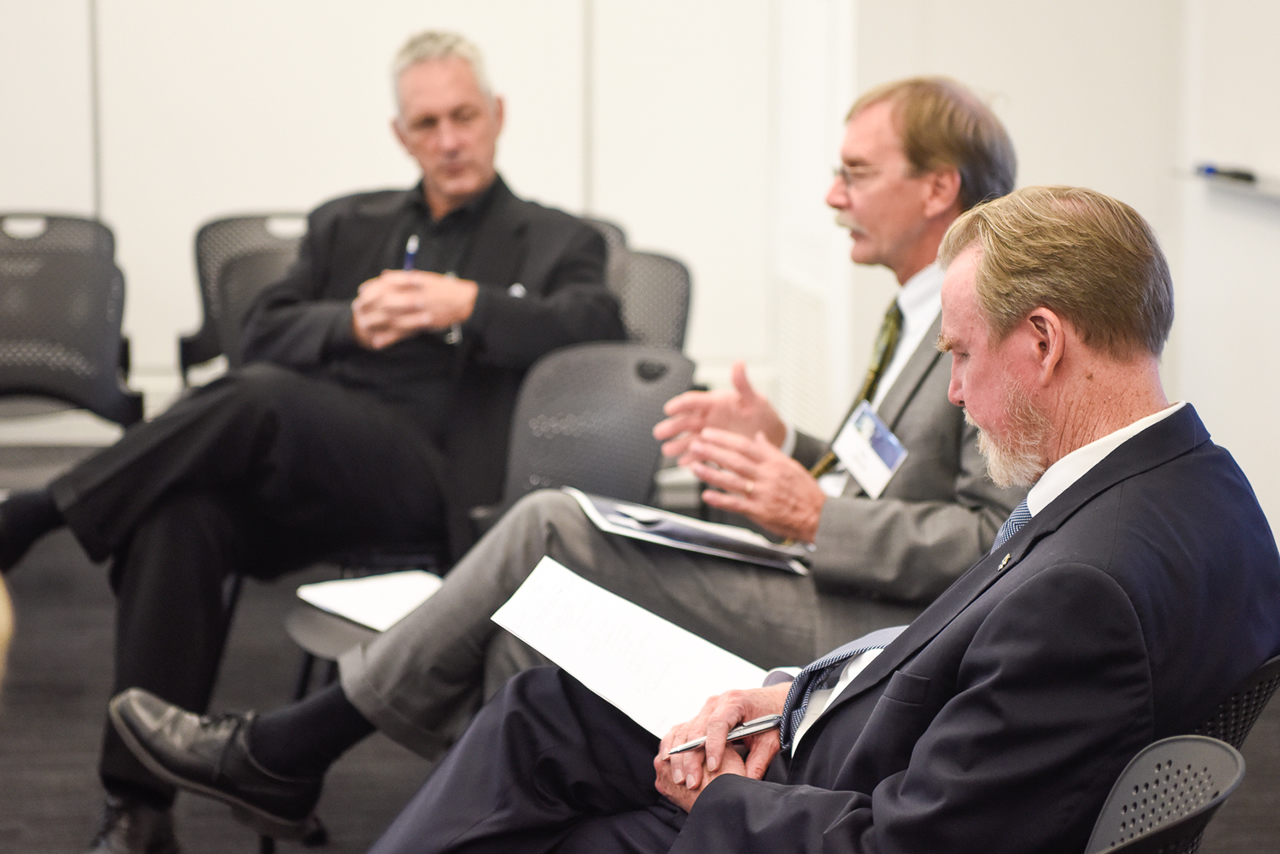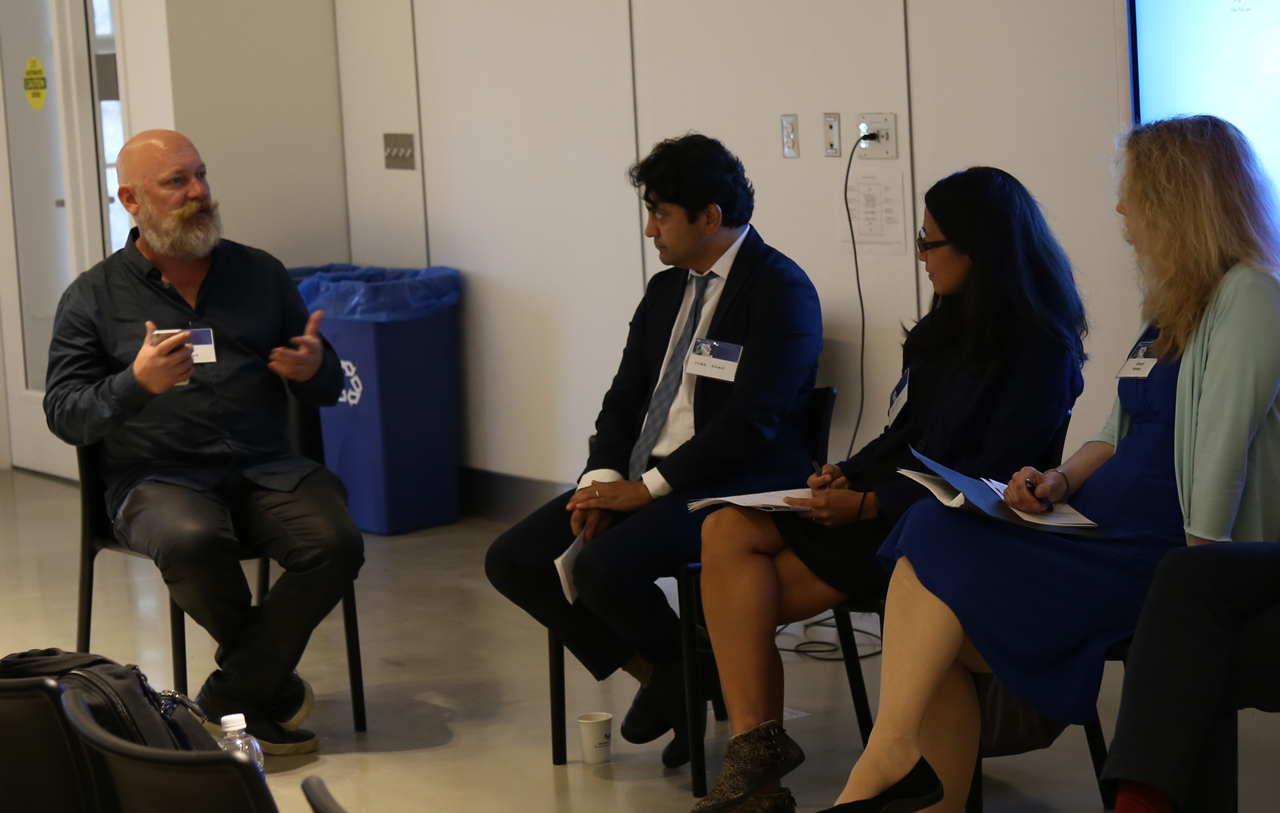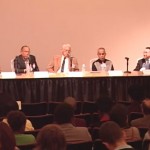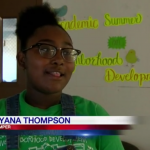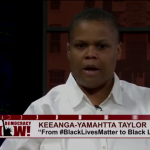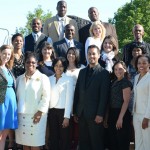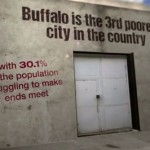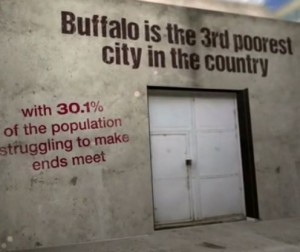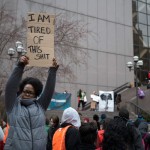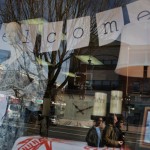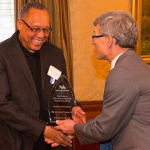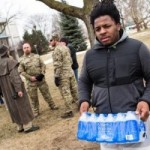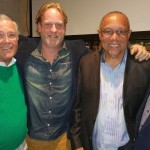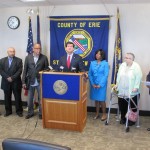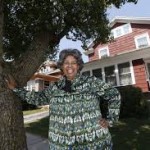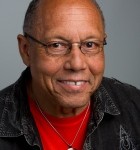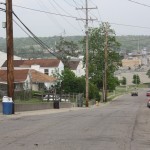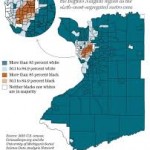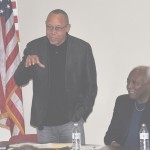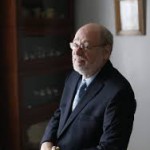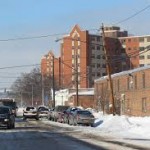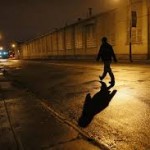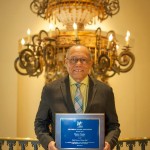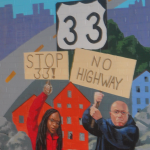From the ground up: Addressing Buffalo’s health disparities
Watch the YouTube video, here.
A formal connection between the Center for Urban Studies and the Community Health Equity Research Institute at UB is sharpening the focus on Buffalo’s built environment and its impact on the city’s social determinants of health.
To effect transformational change in Buffalo, UB’s Center for Urban Studies is joining the Community Health Equity Research Institute
Read the full article from University at Buffalo, here.
BUFFALO, N.Y. – To more powerfully address and reverse Buffalo’s entrenched health disparities, a University at Buffalo center dedicated to regenerating underdeveloped neighborhoods is joining the Community Health Equity Research Institute at UB.
“The Harder We Run” Panel Discussion
In case you missed the panel discussion for the Center’s most recent report, “The Harder We Run”, here is a zoom recording of the panel discussion: https://us02web.zoom.us/rec/share/0ZTy_hrHh_hqxZVMIgkWB4uNQ_l8ui_1B_l8cLEebdag-hszVI4a_4gvWQH8l-w0.HAXa-XGMiYa3CkDX
Mark Scheer interviews researcher Henry-Louis Taylor on new report
Reporter Mark Scheer interviews Henry-Louis Taylor, director of the Center for Urban Studies, on “The Harder We Run: The State of Black Buffalo in 1990 and the Present,” a 2021 report to the Buffalo Center for Health Equity.
The Harder We Run: The State of Black Buffalo in 1990 and the Present
By Henry-Louis Taylor, Jr., Jin-Kyu Jung, and Evan Dash
The U.B. Center for Urban Studies is releasing its study, The Harder We Run: The State of Black Buffalo in 1990 and the Present, by Henry-Louis Taylor, Jr., Jin-Kyu Jung, and Evan Dash. Thirty-one years ago, in 1990, the U.B. Center released its study, African Americans and the Rise of Buffalo’s Post-Industrial City, 1940 to Present. This investigation was the most comprehensive study ever conducted on Black Buffalo. This past summer, the Buffalo Health Equity Center asked the U.B. Center to use the 1990 Black Buffalo Study and answer the question, “Has Black Buffalo progressed since 1990?” The U.B. Center took on the project but did not request any funding. The report, The Harder We Run, answers the question, “Has Black Buffalo progressed since 1990?” The report tells us what happened to Black Buffalo over the past thirty-one years, why it happened, and what we can do about it.
TaylorHL The Harder We Run
Another Voice: News editorial glosses over racist history of Route 33
Read the full article from Buffalo News here.
There’s an important petition up at change.org started by University of Arizona Assistant Professor Erika Gault, who grew up in Buffalo. It concerns Mayor Byron Brown’s reluctance to publicly say the name of mayoral candidate India Walton, and the recent replay in Buffalo of historically racist tropes concerning Black women.
I, too, would like to recognize the elision of proper names, albeit in a somewhat adjacent sphere: The Buffalo News editorial board’s opinion regarding the renewed energy around doing away with the Kensington Expressway (“Push to bury Route 33,”May 23).
UB reinstitutes indoor mask mandate effective Tuesday
Read the full article from Buffalo News here.
The University at Buffalo will reinstate its indoor mask mandate beginning Tuesday for all employees and students regardless of their vaccination status, the school said Monday.
The mask rule is expected to remain in place when students return en masse later this month.
Vaccine update: 9 charts that show how New York is handling the spread of COVID-19
Read the full article from Buffalo News here.
How have case numbers changed over time? How many people have been vaccinated? Find out with these charts and maps, updated weekly.
Economy update: 6 charts that show how the economy is performing in Buffalo and New York
Read the full article from Buffalo News here.
See how unemployment has changed over time, plus how small businesses are doing in our community, and more economic indicators with these regularly updated charts and graphs.
UB to celebrate 2020 graduates in fall commencement ceremony
Read the full article from Buffalo News here.
UB President Satish K. Tripathi on Friday announced that the university will host in-person commencement exercises for members of the Class of 2020 in the fall, nearly a year and a half after they were supposed to be feted.
Buffalo’s 14215 ZIP code among those Cuomo targets for vaccine push
Read the full article from Buffalo News here.
With roughly one in four New Yorkers still unvaccinated against Covid-19, Gov. Andrew Cuomo on Monday said the state will attempt to boost the vaccination rate by targeting 117 ZIP codes that have both low vaccination rates and a high spread of Covid with outreach efforts by community-based organizations.
Twenty-five of those ZIP codes are outside New York City and Long Island and include two in Western New York: 14215 in Buffalo and Cheektowaga and 14770 along the Pennsylvania border in Cattaraugus County.
Can Erie County office close the health equity gap?
Read the full article from Buffalo News here.
Erie County Executive Mark Poloncarz plans to spend $300,000 in federal stimulus money to attack the racial disparity in health outcomes. It’s a good start. The challenge for Poloncarz: Ensure the spending actually narrows the gap.
In Erie County, African American children are more than twice as likely to die within a year after birth, according to the County Health Rankings report, and twice as likely to die before they turn 18. African American girls are 2 1/2 times more likely than whites to give birth in their late teens.
Underlying all of that is poverty. Nearly half of African American children in Erie County are living in poverty – five times the rate among white children.
Lottery for $500 monthly checks part of proposal for Buffalo’s stimulus spending
Read the full article from Buffalo News here.
“That’s a joke: $500 for 1,600 families that are probably making about $15,000 or $16,000 dollars a year?” Taylor said.
Some 68% of African-American residents in the city are renters, along with about 78% of the Latino population and 62% of the Asian-American community, he said, citing census figures.
“These families are faced with two issues: They’re paying 40, 50, 60% of their income on housing, and … many of these families, especially those who don’t own a car, have almost no money left over to do anything with,” Taylor said.
Lynne Dixon’s 25-point plan launches county comptroller contest
Read the full article from Buffalo News here.
The 25-point proposal, to be released today, revolves around “helping senior citizens, small businesses, and taxpayers,” her campaign said. Her “signature item,” she added, is allowing senior citizens on a fixed income and small business owners to pay property taxes monthly, instead of annually.
Buffalo police community outreach
Read the full article from Buffalo News here.
The Buffalo Police Department held a community outreach called Taking It to the Streets at New Hope Baptist Church, across from Schiller Park, Tuesday, July 20, 2021. It provided a chance for the police to interact with the public. Police officials and various officers were on hand as well as community groups and services. They plan on doing similar events around the city throughout the rest of the summer.
Buffalo Residents Protest in Solidarity with Cubans
Read the full article from WKBW Buffalo here.
Thousands took the streets in Cuba last week to protest against the government. In Buffalo on Sunday around 50 residents took to the streets to march in solidarity.
Erie County looks at new way to tackle old problem: serious health disparities
Read the full article from Buffalo News here.
While Covid-19 drew renewed attention to the local health disparities issue, the nature of the disparity has been known for a long time. Erie County fares worse on many state and national averages when it comes to premature deaths, lack of preventative care and childhood poverty among African American residents.
David Robinson: Buffalo Niagara worker shortage slows the Covid-19 recovery
Read the full article from Buffalo News here.
That’s worrisome because it’s a sign that the low-hanging fruit in the recovery has been pretty much picked. And we’re still down about 30,000 jobs from where we were in June 2019, so the recovery is far from over.
Now that the economy is operating without many Covid-19-related restrictions, it is the more difficult structural issues that are holding back the recovery.
Buffalo’s last school zone speed camera shut off
Read the full article from Buffalo News here.
After at least two lawsuits, accusations of a money grab by the city and more than a year of conflict between the Common Council and Mayor Byron W. Brown, the last school zone speed camera in Buffalo has been turned off.
The move followed what Brown described as a “passionate plea” from University Council Member Rasheed N.C. Wyatt in a Facebook post Thursday.
Brown commits to mayoral debate co-sponsored by The Buffalo News
Read the full article from Buffalo News here.
Buffalo Mayor Byron W. Brown has committed to participating in a debate against his opponent in the mayoral race, Democratic Party nominee India B. Walton, in an event being sponsored by The Buffalo News, WGRZ and Buffalo Toronto Public Media.
Walton, who defeated Brown in the Democratic primary, was out of town, and her campaign has not yet committed to participating in the 7 p.m. Oct. 12 debate.
Citizen panel questions Buffalo police chief on white supremacy in policing
Read the full article from Buffalo News here.
Noting a series of alarming incidents around the country, members of a citizens police oversight panel that reports to the Buffalo Common Council on Wednesday questioned Police Commissioner Byron C. Lockwood on the steps being taken to prevent a white supremacist from infiltrating the department’s ranks.
Council sets meeting for public to weigh in on federal stimulus spending
Read the full article from Buffalo News here.
Buffalo is slated to receive $331 million in federal stimulus funding. Half of the windfall arrived last month. The second payment is expected to come next year. All of the funds must be spent within the next four years. The Common Council will hold a public meeting for the community to weigh in on the spending.
‘Supply is not the issue’: Why rural places like Allegany County lag in vaccinations
Read the full article from Buffalo News here.
The vaccination campaign is running up against the independence prized in rural areas, vaccine hesitancy, lingering animosity over the governor’s public health restrictions and the continuing spread of misinformation about Covid-19. Those and other factors have contributed to the low vaccination rate in Allegany and elsewhere, experts say.
Professionals from city’s wealthier areas powered India Walton to victory
Read the full article from Buffalo News here.
Walton grew up poor in one of the city’s poorest neighborhoods, but she beat Buffalo’s four-term mayor, Byron W. Brown, with votes – and a lot of campaign help – from professionals in the city’s wealthier enclaves. And now Walton and her supporters are working to defeat Brown’s write-in bid in November and create a progressive city administration led by a self-proclaimed democratic socialist.
Six Takeaways From India Walton’s Historic Victory in Buffalo
Read the full article from Jacobin here.
As clichéd as it sounds, Buffalo’s historic June 2021 primary, in which democratic socialist India Walton won a major upset over four-term incumbent Byron Brown, is something of a tale of two cities. And it’s the same tale that Buffalonians have discussed for generations: the “East-West divide” carved by Main Street through the heart of the city.
At Albright-Knox, steel frame for expansion is in place: ‘This is a remarkable moment’
Read the full article from Buffalo News here.
The expanded museum, at a cost of $168 million, is expected to reopen in fall 2022, three years since the museum closed in November 2019. When it reopens, the museum will become known as the Buffalo AKG Art Museum. AKG stands for the museum’s major contributors: John J. Albright, Seymour H. Knox Jr. and Jeffrey E. Gundlach.
Masks no longer required in summer school
Read the full article from Buffalo News here.
The state Health Department updated the guidance because of the “current low rates of Covid-19 transmission,” it said in an email to school districts.
Schools and districts may implement the masking policies for child care, day camp and overnight camp programs, the state said. That guidance says that unvaccinated children “are strongly encouraged but not required to wear face coverings indoors as feasible.”
India Walton’s mayoral campaign reinforces progressive police proposals
Read the full article from Buffalo News here.
Walton cruised to victory last month by emphasizing new ways to solve old problems, especially in policing. She reiterated on Wednesday her plan to reallocate $7.5 million of the Police Department budget to programs that link usual subjects of police attention to mental health services. Her Wednesday event also marked the first of many in which she is expected to highlight her proposals, backed by high-profile figures like Williams. Others with similar socialist philosophies – such as Rep. Alexandria Ocasio-Cortez of the Bronx and Sen. Bernie Sanders of Vermont – are mentioned as other potential campaign allies.
Erie County legislators expect ugly fight before vote on how to spend stimulus money
Read the full article from Buffalo News here.
The Democratic majority of the Erie County Legislature stands poised to approve County Executive Mark Poloncarz’s $123.7 million spending plan Thursday, which would take one of the biggest windfalls in decades and use it to boost a variety of infrastructure and community improvement projects, as well as county payroll.
But the Republican-supported minority caucus is gearing up to wage a battle on the Legislature floor. They will push to sidetrack the county executive’s spending plan and replace it with a different plan that they say offers more public input.
Buffalo offering aid for those behind on water bills
Read the full article from WKBW Buffalo here.
The City of Buffalo and the Buffalo Sewer Authority are providing relief to the more than 30,000 households that fell behind on water and sewer bills during the past 16 months. Of the $361 million the city received through the American Rescue Plan, $13 million of it will be used to wash away debt for low-income families who faced financial hardships as a result of the pandemic.
Over 1,100 vaccinated at home, but Erie County program hits snags
Read the full article from Buffalo News here.
Erie County Executive Mark Poloncarz first announced on May 11 that the county had contracted with Buffalo Homecare and the Visiting Nursing Association of Western New York to deliver and administer the vaccine to the homes of eligible residents who request it, regardless of whether they are homebound.
After a year of pandemic learning, a more expansive approach to summer school
Read the full article from Buffalo News here.
At least 20% of federal American Rescue Plan money must be used in the next three years to deal with learning loss by students due to the Covid-19 pandemic. That amounts to $63 million in Erie and Niagara counties, and for many school districts, summer school will be one of their tools.
As the fall campaign begins, India Walton confronts questions over her past
Read the full article from Buffalo News here.
A self-proclaimed democratic socialist who vows to “put people first,” she said her life – growing up poor on the East Side, being a single mother of four boys, being a nurse and a community organizer and having firsthand experience being arrested by Buffalo police – has prepared her for this moment as she faces a write-in campaign from an emboldened Brown in the general election on Nov. 2.
What the primary vote tells us
Read the full article from Investigate Post here.
Ken Kruly is a political analyst for WGRZ-TV, publisher of Politics and Other Stuff and author of Money In Politics for Investigative Post. In an analysis for Investigative Post, Kruly compared Brown’s performance this year to the results of his previous four mayoral campaigns. He found Brown’s share of the vote dropped in six of the nine Common Council districts compared to four years ago.
How India Walton would revamp policing in Buffalo
Read the full article from Buffalo News here.
“She will prioritize addressing the root causes of crime such as concentrated poverty and lack of living-wage jobs,” according to her platform on her campaign website, and she would emphasize “harm reduction and restorative justice programs rather than punitive measures.”
How Did a Socialist Triumph in Buffalo?
Read the full article from The New York Times here.
That danger is real. Polls reveal that both Black and white voters reject the slogan “Defund the police.” Yet Walton has shown that even in a city where shootings have surged a staggering 116 percent so far this year, a socialist promising police reform can win.
Byron Brown launches write-in campaign for mayor as others eye the race
Read the full article here.
Gone was the aloof incumbent seemingly self-assured of an unprecedented fifth term leading Buffalo. Instead, Brown launched a “do over” candidacy, passionately announcing in the Statler Terrace Room a write-in campaign for the Nov. 2 general election to reclaim the office he preliminarily lost to newcomer India B. Walton on June 22.
Walton’s campaign outworked Brown
Read the full aricle here.
She’d beaten Brown by 1,507 votes, according to the unofficial tally by the Erie County Board of Elections. That’s more than the absentee ballots left to be counted. She won almost 52 percent of the vote to Brown’s 45 percent. Le’Candice Durham, a City Hall employee whose campaign seemed designed to siphon votes from Walton to benefit Brown, got 650 votes, or just over 3 percent.
Council seeks judge’s opinion on legislation to eliminate school speed zone cameras
Read the full article from Buffalo News, here.
Buffalo Mayor Byron W. Brown has said he will not sign expedited legislation approved by the Common Council to eliminate school zone speed cameras because council members did not follow the proper process.
Mayor Brown didn’t budget money for speed zone cameras – but he’s not giving up on them
Read the full article from Buffalo News, here.
Buffalo Mayor Byron W. Brown did not include any revenue from school zone speed cameras in his 2021-22 budget proposal.
State AG says Buffalo can establish a civilian review board
Read the full article from The Buffalo News here.
“Buffalo can take steps now to establish a civilian review board to investigate allegations of police misconduct, according to the New York State Attorney General’s Office. Such a board should hold final disciplinary authority over officers and subpoena power, and it should have a substantial budget and a qualified professional staff to carry out its duties, according to a letter from the office’s Civil Rights Bureau to Mayor Byron W. Brown.”
Faculty weigh in on Chauvin verdict, fight for equality
Read the full article from UBNow here.
“This victory reflected the people’s power. It was made possible by the millions who drew a line in the sand and said ‘enough.’ But history teaches us, the retrogressive forces in this country will resist. Even as they say, ‘justice was served, and this is the beginning of a new beginning,’ they will block efforts to defund the police and recreate policing as we know it. These same forces will fight reforms to improve the quality of neighborhood life among Blacks, Indigenous and people of color. They will work tirelessly to maintain the status quo. And the fightback will continue. The people will build on this ‘shining moment.’ The people will continue to the quest for that day when BIPOC will cry ‘free at last, free at last.’ This victory will cause them to keep the faith and raise the battle cry, ‘Remember George Floyd. Power to the People.’”
Sheriff’s candidate: Party chairman said she’s ‘not what a sheriff looks like’
Read the full article from The Buffalo News here.
“Kimberly L. Beaty has more than 30 years in law enforcement and believes she has credentials to make a strong push for the Erie County sheriff’s seat as former deputy commissioner for the Buffalo Police Department. But according to her recount of conversations with the Erie County Democratic Party chairman, there was one thing Beaty didn’t have. The right look. ‘He said, “You’re not what a sheriff looks like, and what people are used to,” ‘ she recalled.”
Buffalo’s school zone speed cameras are on a path to being removed
Read the full article from The Buffalo News here.
“Six out of nine city lawmakers voted Tuesday to get rid of Buffalo’s school zone speed cameras by September, but it is not a done deal. Their patience is running out.…According to the City Charter, Mayor Byron W. Brown has 10 days to sign the legislation or veto it. If he vetoes it, the legislation goes back to the Council, which then has 30 days to vote to override the veto. If Brown does not act then, the legislation becomes law.”
New UB website aims to help reverse health inequities in Buffalo
Read the full article from UBNow here.
“‘The partnership between the task force and the Community Health Equity Research Institute was instrumental in partially mitigating the deadly impact of the pandemic in communities of color in Buffalo,’ Murphy says. The vision of the website was guided chiefly by contributions from three members of the institute’s Steering Committee: Henry Louis Taylor Jr., professor of urban and regional planning, School of Architecture and Planning, and associate director of the institute; Kelly Wofford, community engagement coordinator in UB’s Center for Nursing Research in the School of Nursing; and Christopher St. Vil, assistant professor in the School of Social Work.”
Marijuana legalization in NY to lead to automatic expungement of some drug convictions
Read the full article from Democrat and Chronicle here.
“Henry Louis Taylor Jr., director of the University at Buffalo Center for Urban Studies,said expungement ‘begins to close the road from the neighborhood to the jail.’ But to create substantive change, he said, the funding set aside in the legislation must include connecting people who were incarcerated to job opportunities and other resources, as well as repairing harms done to communities by marijuana prohibition.The changes, he said, that need to come from funding have to be transformative and may include items such as housing subsidies for communities and cooperatives.Importantly,he said, the community should have a say in how the money is spent.”
Race and multicultural experts and area residents weigh-in on Rob Lederman’s use of a racial slur
Read the full story from WIVB here.
“Experts say the racial slur is meant to describe people who are mixed race and it dates back to slavery and the practice of raping female slaves. ‘Rape was institutionalized, and it meant that women were the plaything of the plantation owner to be taken whenever he chose to. As I always say, when I look in the mirror I see the color of rape,’ said Henry Louis Taylor Jr., UB director of the university’s Center for urban studies. ‘It’s a reminder of a time when African American women had no control over their bodies.'”
Brown calls for a more focused citizens’ rights commission to improve policing
Read the full article from The Buffalo News here.
“The report calls for the city’s Commission on Citizens’ Rights and Community Relations to undergo a community planning process with residents from all neighborhoods to improve interactions with the police. The plan also calls on the commission to provide a survey on its website for residents to complete any time they interact with police officers.”
New Buffalo program seeks to replace dilapidated houses with new homes
Read the full article from The Buffalo News here.
“Buffalo kicked off a pilot program Tuesday with the demolition of a dilapidated house in the Hamlin Park neighborhood to make way for a new house to be built within 12 months…The program seeks to replace vacant, blighted structures with affordable houses for new homeowners. The city’s Division of Real Estate identifies a community housing partner for construction of a new home within 12 months from the date of demolition.”
State sues Sheriff Howard over handling of sexual misconduct allegations in county jails
Read the full story from The Buffalo News here.
“‘The Erie County Sheriff’s Office has an abysmal track record of complying with the requirement to notify the commission of incidents that jeopardize the safety and well-being of individuals in custody, facility staff and the community,’ Commission of Correction Chairman Allen Riley said in the written statement.
Probe faults mayor, former police chief for keeping Prude death secret
Read the full article from NBCBLK here.
“An investigation into the official response to Daniel Prude’s police suffocation death last year in Rochester, New York, is faulting the city’s mayor and former police chief for keeping critical details of the case secret for months and lying to the public about what they knew. The report, commissioned by Rochester’s city council and made public Friday, said Mayor Lovely Warren lied at a September press conference when she said it wasn’t until August that she learned officers had physically restrained Prude during the March 23, 2020, arrest that led to his death.”
Black Lives Matter backs Amazon union push in Alabama
Read the full article from AP News here.
“‘Black workers have historically been the backbone of this country, its institutions, and innovations,’ said Patrisse Cullors, the executive director of Black Lives Matter Global Network Foundation, in a statement. ‘Therefore, it is fully within our rights and dignity that we be treated and compensated fairly. Just as we have the right to live, we also have the right to work.'”
Dynamic student + committed med school = real progress on equity
Read the full article from The Buffalo News here.
“Collier credits the medical school’s interdisciplinary Health in the Neighborhood course taught by instructors including Henry L. Taylor Jr., director of UB’s Center for Urban Studies, and the Rev. Kinzer M. Pointer of the African American Health Equity Task Force…She ticked off a number of such social and economic issues that can impact health: redlining, older homes with lead paint, transportation inequities that make it hard to seek care, living in a food desert or a neighborhood that makes it impractical to exercise. ‘You can’t say to a person, “Go run outside” if they don’t have sidewalks,’ Collier said.”
Racial disparities plague vaccine rollout in WNY and across U.S.
Read the full article from The Buffalo News here.
“In New York, white residents have received a disproportionate share of vaccines in each of the state’s 10 regions and in all five counties of Western New York. That disparity is especially dramatic in Erie County: While white residents make up just over 81% of the population, they account for almost 91% of the newly vaccinated. Black residents, on the other hand, represent 5.7% of all vaccinated people (compared to 13.1% of the population), while Asian residents make up 2.5% of those vaccinated (3.6% of the population) and Hispanic residents make up 2.2% (4.5% of the population).”
Fruit Belt housing project delayed to allow community talks
Read the full article from The Buffalo News here.
“The nonprofit developers proposing 50 units of affordable housing in Buffalo’s Fruit Belt neighborhood asked the Buffalo Planning Board to delay consideration of the project for another month, as they reach out to the community to resolve concerns and resistance. Dunkirk-based Southern Tier Environments for Living and the Fruit Belt Community Land Trust want to construct a 33-unit apartment building at 326 High St., at the corner of Peach Street, along with five three-bedroom duplexes, one two-bedroom duplex and five single-family homes on scattered sites.”
Will the Current Focus on Black Lives Matter Lead To Lasting Change?
Read the full article from Diverse Issues in Education here.
“Every sphere — academe, government, business, sports, religion, legal, etcetera — ‘must commit to changing the way they look and function,’ Dr. Lori Martin, interim director of Louisiana State University’s African and African American Studies Program, told Diverse via email. ‘They must be prepared to disrupt and dismantle the policies and practices that perpetuate anti-Black sentiments and demonstrate a commitment that is lifelong.'”
Henry Taylor is a tireless advocate for racial justice through urban planning
Read the full article on the UB School of Architecture and Planning website here.
“As an advocate for centering the work of black heterogeneous communities, [Taylor] urges planners to delve into the mundane, the day-to-day realities of a single mother raising two children, and the varying challenges of multi-generational Black households. In the context of the pandemic and the fight against health disparities he plays a pivotal role as associate director of The Community Health Equity Research Institute, which brings UB faculty members and community leaders in Buffalo to address the disproportionate impacts of COVID-19 on communities of color.”
Daniel Prude’s Death Leads to No Charges for Police
Read the full article from The New York Times here.
“‘The criminal justice system has demonstrated an unwillingness to hold law enforcement officers accountable in the unjustified killing of unarmed African-Americans,’ [Attorney General] James said, her voice growing emotional at a news conference at Aenon Missionary Baptist Church in Rochester. ‘What binds these cases is the tragic loss of life in circumstances in which the death could be avoided.'”
Rachel Lindsay Discusses Chris Harrison’s Apology and ‘Explicit’ Versus ‘Implicit’ Racism
Read the full article from Parade here.
Being aware that implicit racism exists is crucial, Dr. Taylor says. But, he adds, it’s also important for people to “engage in a lot of self-education.” “I think every white person should have a book on Blacks and Latinx that they read,” Dr. Taylor says. He specifically cites the book, Black Power: The Politics of Liberation, as a good option. Dr. Taylor also urges businesses and schools to host workshops on the issues of racism and bias. “The level of awareness about these kinds of issues is terrible,” he says.
Opponents: School zone speed cameras target ‘Buffalo’s most impoverished residents’
Read the full article from Buffalo News here.
“‘We can find no evidence that these speed zone cameras are saving people’s lives, making life safer and making the world better for the children anywhere, not just here in Buffalo. There’s no data to support that. But what there is data to support … revenue generation,’ Taylor said. ‘It’s nothing more than a revenue grabbing scheme … designed to bilk the African American community from resources.'”
Surgery launches anti-racism, health care equity initiative with West lecture
Read the full article from UBNow here.
“Cornel West, Harvard University professor, bestselling author, political activist and public intellectual, will speak via Zoom at “Beyond the Knife,” the initiative’s first public event, from 4-5 p.m. on Feb. 18. This event is free and open to the public. Register and submit questions for the question-and-answer session online.”
Buffalo-made ‘The Blackness Project,’ now on Amazon Prime, keeps dialogue open on race relations
Read the full article from Buffalo News here.
“University at Buffalo professor Henry Louis Taylor Jr., who narrates the film, contributes considerably to the documentary. Taylor rivetingly condemns Americans’ fateful choice after the Civil War to support ex-Confederates’ interests rather than build up Black Americans’ opportunities, and provides a poignant concluding call to pursue social justice.”
Black Lives Matter movement nominated for Nobel peace prize
Read the full article from The Guardian here.
“The Black Lives Matter movement has been nominated for the 2021 Nobel peace prize for the way its call for systemic change has spread around the world. In his nomination papers, the Norwegian MP Petter Eide said the movement had forced countries outside the US to grapple with racism within their own societies. ‘I find that one of the key challenges we have seen in America, but also in Europe and Asia, is the kind of increasing conflict based on inequality,’ Eide said. ‘Black Lives Matter has become a very important worldwide movement to fight racial injustice.’”
Crumbling Investments: Effort by city to revitalize Homewood has resulted in lingering neglect and frustration
Read the full article from Pittsburgh-Post Gazette here.
“‘In this case, I would argue that the city is a slumlord that is consciously participating in the underdevelopment of the community,’ said Henry Louis Taylor Jr., a professor in the Department of Urban and Regional Planning and associate director of the Community Health Equity Research Institute at the University of Buffalo.”
Antoine Thompson Q&A: Promoting Housing in Democracy with the National Association of Real Estate Brokers
Read the full article from MGIC Connects here.
“‘Looking back, who served as role models to you, and what did you learn from them?‘ ‘One of my role models is Dr. Henry Taylor, director of the UB Center of Urban Studies, because of his strong commitment to urban policy and his advocacy for building civic capacity to effect community change. Another is R. Donahue Peebles, who inspires me because of his success in real estate and his understanding of the role of politics in development and building wealth.'”
A snapshot of Homewood history
Read the full article from Pittsburgh Post-Gazette here.
“Henry Louis Taylor, Jr., whose research at the University of Buffalo focuses on distressed urban neighborhoods and the health of those who live there, said the trajectory of Homewood follows a familiar pattern. ‘In American cities and suburbs, the way you increase residential land value under the current system in the country [is] as whiteness and social-class exclusivity increases, values go up. As Blackness and people of color increase and social inclusivity increases, values go down,’ he said.”
Cuomo: Black hospital workers shunning vaccine at greater rate than whites, Latinos
Read the full article from Buffalo News here.
“The governor said there’s ‘understandable’ cynicism and distrust of the health care system in the Black community because of previous injustices. But the governor said such distrust isn’t justified when it comes to the Covid-19 vaccine. He said he has been calling pastors and other leaders in African American communities around the state about it, and the state plans to roll out an advertising campaign aimed at building trust in the vaccine among Black New Yorkers.”
Rochester Police Pepper-Sprayed 9-Year-Old Girl, Footage Shows
Read the full article from The New York Times here.
“The police department in Rochester, N.Y., released body-camera footage on Sunday that showed a 9-year-old girl being handcuffed and pepper-sprayed by police officers who had responded to a family disturbance call. During the incident, which occurred Friday afternoon, officers restrained the girl, pushing her into the snow in order to handcuff her, while she screamed repeatedly for her father, the footage showed. At one point, an officer said, ‘You’re acting like a child.’ She responded, ‘I am a child.'”
UB experts believe there’s a fundamental flaw with current polling
Read the full article from WBEN here.
BUFFALO (WBEN) – “The one thing we can say for sure in this is that the big loser last night was the pollsters,” said Professor Jim Campbell, as a group of University at Buffalo experts held a virtual meeting to discuss Election Night and the election process as a whole.
“This was not supposed to be as close as it turned out to be in many states,” he continued.
Wisconsin turned out to be a very thin margin, as election officials continues to tally votes in a state where Democratic Nominee Joe Biden holds a lead. Prior to Tuesday night, it was anticipated that Biden would run away with Wisconsin, holding nearly a double-digit lead in some polls.
UB Professors Discuss Divisions Amid Presidential Election
Watch the video and read the full article from Spectrum News here.
“This is a deeply, deeply divided country along ideological lines,” said Henry Louis Taylor, professor of urban planning.
“This was in some ways a referendum on President Trump and indicates how sharply polarized we are as a nation,” said James Campbell, professor of political science.
President Trump has threatened lawsuits to come over the voting process and collecting and counting of ballots in some states.
Election law expert James Gardner expects to see recounts and court cases to resolve this, but also wondered about the how the federal courts, including the United States Supreme Court, would handle the situation with objectivity.
Is Erie County turning red?
Watch the video and read the full article from WKBW here.
“Call it a ‘post game breakdown’ of the 2020 election in Western New York by professors at the University at Buffalo.
The question – is traditionally blue Erie County becoming republican country?…
Professor Taylor says the Trump administration has caused a deep divide and that reveals far reaching racism.
‘This is Donald Trump’s America,’ Taylor stated.
Taylor also stated that he believes democrats have ‘no vision that excites people.'”
Confronting the Causes of Residential and School Segregation
Read the full article from Housing Matters here.
“Evidence shows that government housing policies and individual practices created and sustain segregation between white and Black people and that segregation exacerbates racial wealth inequality, racial achievement gaps, and racial profiling. This 2017 study applies a “white racial frame” to explain the persistence of residential and school segregation, synthesizing more than 60 articles from the fields of sociology, economics, critical theory, and law. The authors’ frame reflects the theory that white people who hold power in the US purposefully maintain their dominance and perpetuate socioeconomic inequities based on race and ethnicity. By applying this frame, the authors shift focus from disparate outcomes by race and ethnicity to the (often white) lenders, police, educators, and politicians who shape structures of opportunity.”
UB-community partnership reducing COVID-19 deaths among African Americans
Read the full article from WGRZ, here.
“The fact that this community-university partnership was able to mitigate the high mortality among African Americans in the first wave puts us in a position to build on that achievement during this coming flu season and a possible second wave,” said Tim Murphy, MD, SUNY Distinguished Professor in the Jacobs School of Medicine and Biomedical Sciences at UB and director of the Community Health Equity Research Institute and UB’s Clinical and Translational Science Institute “And it’s something that can be replicated in other communities.”
Black Man Died of Suffocation After Officers Put Hood on Him
Read the full article from The New York Times, here.
“A Black man died of suffocation in Rochester, N.Y., after police officers who were taking him into custody put a hood over his head and then pressed his face into the pavement for two minutes, according to video and records released by his family and local activists on Wednesday. The man, Daniel Prude, 41, died on March 30, seven days after his encounter with the police, after being removed from life support, his family said.”
Experts say Trump’s eviction moratorium is hard to access and will be of limited help
Read the full article from Salon, here.
“‘Without rent forgiveness, tenants will ultimately have to pay back rent along with any late-fees and penalties, or face eviction when the moratorium is lifted,’ Silverman explained. ‘It is ultimately up to landlords to decide if they are going to pursue eviction, but at some point in the future, we can anticipate that there will be a spike in evictions across the country. It could be very destabilizing to the economy at the very time that the COVID crisis ends. For renters, it will also have ripple effects on their credit history and ability to find replacement housing.'”
St. Louis couple who aimed guns at protesters makes false convention claim about Joe Biden, suburbs
Read the full article from PolitiFact, here.
“A Republican National Convention speaker falsely claimed that the Democratic Party under Joe Biden would ‘abolish the suburbs altogether by ending single-family zoning.’ That’s not true. The claim came from Patricia McCloskey, a St. Louis lawyer who, along with her husband, Mark, is facing felony charges for pointing guns at protesters marching outside their home…’This is a red herring, pure and simple,’ said Robert Silverman, a professor or urban and regional planning at the University of Buffalo. ‘Zoning is a local function in the United States, and the suggestions made in the McCloskeys’ speech are patently false.'”
Black Americans Still Face Obstacles In Obtaining Credit, Mortgage Loans
Read the full article from International Business Times, here.
“Black Americans are denied access to credit far more than their white counterparts, according to a recent report from LendingTree (TREE), the online lending marketplace. Specifically, regardless of income levels, in 2019, Black adults were denied credit – including credit cards, higher credit card limits, mortgages, refinancing, student loans, personal loans – 44% of the time (versus 19% for whites). Put another way, Blacks were denied or approved for less than the amount requested 57% of the time versus 24% for whites.”
Black Workers in Buffalo Face Bigger Share of Coronavirus Impact
Read the full article from Wall Street Journal, here.
“The coronavirus pandemic risks widening the financial gap in Buffalo, N.Y., between white and Black workers, who entered this year’s economic downturn with less financial security and are disproportionately employed in sectors more vulnerable to layoffs and exposure to Covid-19. Over the last half-century, Black people in Buffalo were more likely to trade relatively stable manufacturing jobs for lower-wage work in the service sector, live in poorer neighborhoods and face higher levels of unemployment, according to researchers…”
UB strips Fillmore, Putnam, Porter names from buildings, facilities
Read the full article from Buffalo News, here.
“Advocates for racial justice celebrated a decision by the University at Buffalo to strip the names of three historic figures from university buildings, facilities and roads because they supported slavery or promoted racist policies and values. ‘I think it’s a good move, and I think symbolism is important,’ said Henry Louis Taylor, a professor at UB’s Department of Urban and Regional Planning. ‘For the nation to deal with the issues of race in this country, we have to be honest about our history.'”
MFSA holds virtual discussion on race, racism at UB
Read the full article from UBNow, here.
Henry Louis Taylor Jr., professor in the Department of Urban and Regional Planning and director of the Center for Urban Studies, outlined UB’s history in addressing racism on campus and in the community. From the late 1960s to the mid-1990s, UB built an infrastructure, including launching educational programs and hiring faculty members of color, to link UB to the Black community, he said.
But that infrastructure dwindled over the past two decades, a result of declining government support for public education, as well as flawed university efforts to address these issues, Taylor said. He called upon UB leadership to reinvest in these programs, and tackle race and racism in a more direct manner.
“I theorize that whenever race is not explicitly stated, whiteness becomes the default group, and people of color are pushed to the margins,” he said.
Those who were unable to attend the live event can watch it online.
Trump boasts of pushing low-income housing out of suburbs
Read the full article from Politico, here.
President Donald Trump is pining for support in the suburbs, and pushing out low-income housing is playing a part in his bid to get it.
In a set of tweets and in remarks in Texas on Wednesday, Trump bragged about his administration’s rescinding an Obama-era fair housing rule that was meant to combat housing discrimination. He characterized low-income housing as a detriment to the suburbs and claimed that Democrats were out to uproot and destroy suburbia — a cultural sphere that he equated to the American dream.
“You know the suburbs, people fight all of their lives to get into the suburbs and have a beautiful home,” Trump said during a talk in Midland, Texas. “There will be no more low-income housing forced into the suburbs. … It’s been going on for years. I’ve seen conflict for years. It’s been hell for suburbia.”
Urban planning as a tool of white supremacy – the other lesson from Minneapolis
Read the full article from The Conversation, here.
The legacy of structural racism in Minneapolis was laid bare to the world at the intersection of Chicago Avenue and East 38th Street, the location where George Floyd’s neck was pinned to the ground by a police officer’s knee. But it is also imprinted in streets, parks and neighborhoods across the city – the result of urban planning that utilized segregation as a tool of white supremacy.
Today, Minneapolis is seen to be one of the most liberal cities in the U.S. But if you scratch away the progressive veneer of the U.S.‘s most cyclable city, the city with the best park system and sixth-highest quality of life, you find what Kirsten Delegard, a Minneapolis historian, describes as “darker truths about the city.”
A reckoning: Reconsidering Millard Fillmore’s legacy
Read the full article from Buffalo News, here.
Millard Fillmore gets little love from presidential historians, but he’s enjoyed favorite son status in Buffalo for more than 150 years.
That’s beginning to change.
The 13th president lived here for years before and after his term in the White House. His fingerprints are on many educational and cultural institutions, from the University at Buffalo to Buffalo General Medical Center, and his name and image are sprinkled throughout greater Buffalo.
Now, Fillmore’s signing of the Compromise of 1850 – which included the loathsome Fugitive Slave Act – and his unsuccessful presidential run as a member of the anti-immigrant, anti-Catholic Know Nothing Party are raising questions about his lofty local status.
With faculty nudge, can UB lead on social justice?
Read the full article from Buffalo News, here.
A few years ago, University at Buffalo President Satish Tripathi used his annual address to trumpet the UB 2020 strategic plan as laying the groundwork for propelling Buffalo Niagara in everything from health care and the arts to business and industry.
But with that target year now here and bringing a whole new set of issues – or, rather, an acknowledgement of issues that Blacks have long tried to raise – UB’s faculty is pushing one of the region’s major institutions to take on something else: systemic racism.
In an overwhelming vote a couple of weeks ago, United University Professions – which represents most faculty – passed a resolution condemning “police violence against African American, Indigenous and Latino/Latina residents,” opposing “the militarization of police and its impact on communities of color and on peaceful protests,” and supporting “reallocation of Buffalo resources from policing toward investment in Buffalo’s low-income communities of color.”
Black applicants are more likely to be denied mortgages, study finds
Read the full article Marketplace, here.
Traditional measures of risk like debt-to-income ratios disproportionately hurt Black borrowers, said Henry Louis Taylor Jr., a professor of urban and regional planning at the University of Buffalo.
“They’re not going to do well on that because of the low incomes that they have traditionally and because of the debts that they acquire just trying to make ends meet,” he said.
‘UB Black faculty are disappointed with UB response to BLM movement’
Read the full article from The Spectrum, here.
UB Professor Henry Louis Taylor, Jr., who has spent decades studying and writing about inequality, called the UB responses “just short of pathetic.”
Taylor, a professor in the department of Urban and Regional Planning, believes Foster’s letter was “right on target.” He and Foster are both executive members of the SUNY Black faculty group.
“I think it shows absolutely no understanding of the challenges that we face at this moment in time and they just oughta stop and give this to somebody that knows what they’re doing or talk to somebody that knows what they’re doing because it’s been pathetic,” Taylor said. “You know, this university has been backsliding in a lot of areas as it relates to race and class.”
Buffalo’s Police Brutality Didn’t Start With Martin Gugino
Read the full article from The Nation, here.
According to activists circulating a petition demanding his immediate resignation, [Mayor] Brown has never demonstrated an inclination to change the way police operate.
In fact, those activists say, the opposite is true. Under three police commissioners named by Brown in his 14 years as mayor, the department has instituted policies embodying the specific brand of racism that fuels protests across the country.
Some examples:
§ Setting up police checkpoints in poor, mostly black and Latino neighborhoods, which were discontinued after their constitutionality was challenged in a lawsuit.
§ Raising revenue for Brown’s cash-strapped administration by targeting motorists in those same neighborhoods for minor infractions—busted headlights, expired registrations or insurance cards, rolling stops.
§ Creating special units with a reputation for brutality and disregard for the Fourth Amendment.
‘It was never just about Floyd’: Protests reflect anger over inequality, neglect
Read the full article from Buffalo News, here.
“Taylor, of the Center for Urban Studies, said he does see hope for structural change this time, of the type that Buffalo’s black community didn’t get in 1967. A broad, diverse coalition of activists has mobilized around Buffalo’s inequities, he said: not only in the criminal justice system, but in neighborhood development, housing and education.”
“How Do We Get More Power?”
Read the full article from Open Society Foundations, here.
India Walton signed the lease: $1,200 a month for a modest, gut-renovated one-bedroom, $200 less than the listed price because she had her own appliances. Still, says Walton, “in this neighborhood? $1,200 was unheard of.”
At least it used to be. After decades of disinvestment and neglect, the Fruit Belt was beginning to boom.
The catalyst was right next door: a rapidly expanding medical complex, staffed by a growing number of doctors, nurses, and technicians looking for a nearby place to live.
In many ways, it was a familiar story: an African American neighborhood, long neglected by the city, suddenly deemed “desirable” and, in turn, overrun by new, more expensive development. But the story of the Fruit Belt, so named for the orchards planted there in the 1800s [PDF], went in an unexpected direction. As the medical campus grew, the small, sloping neighborhood sitting in its shadow—whose black population boomed following World War II—decided that its fate had not yet been sealed.
Mass Evictions Predicted as Short-Term Economic Relief Runs Out
Read the full article from Planetizen, here.
Henry Louis Taylor, Jr., a professor of urban and regional planning at the University of Buffalo, is featured in an ABC News article about the ongoing risk of mass evictions as the country’s millions of renters collides with tens of millions of new unemployment claims across the country.
Taylor said that “federal and statewide eviction moratoriums are based on COVID-19 timetables that are ‘too short’ and don’t consider predictions from medical experts that the pandemic could persist into the fall and beyond, as public health officials have suggested,” according to the article, written by Deena Zaru.
‘Mass evictions’ on the horizon as US confronts coronavirus housing crisis: Advocates
Read the full article from ABC News, here.
The first of the month is daunting for many low and middle-income Americans who will be struggling to pay their rent for the second time since the coronavirus pandemic essentially shut down the U.S. economy.
More than 30 million Americans have filed for unemployment insurance since the COVID-19 crisis hit the U.S. in March, and despite a range of temporary federal and state eviction moratoriums, some Americans are still being served eviction notices amid a public health crisis that requires many people to stay at home.
Henry Louis Taylor, Jr., a professor of urban and regional planning at the University of Buffalo, said that federal and statewide eviction moratoriums are based on COVID-19 timetables that are “too short” and don’t consider predictions from medical experts that the pandemic could persist into the fall and beyond, as public health officials have suggested.
NYC slashes program funding in ‘cautious’ FY21 budget
Read the full article from Smartcities Drive, here.
Dive Brief:
- New York City Mayor Bill de Blasio announced the city’s budget for fiscal year 2021 (FY21), which previewed “cautious planning” and deep cuts across multiple sectors to address constraints amid the novel coronavirus pandemic. At $89.3 billion, the budget is $3.4 billion smaller than the one for fiscal year 2020 (FY20) to account for a potential $7.4 billion tax revenue loss across both years.
- The sanitation department, for instance, saw its e-waste and community composting subsidy programs temporarily disappear, amounting to cost savings of $3.4 million and $3.5 million, respectively in FY21 and beyond. The city also curtailed funding for its Summer Youth Employment Program; Vision Zero program; tree pruning and tree stump removal efforts; and educational district-charter partnerships program, among other adjustments.
- The budget aims to keep safety, health, shelter and access to food top of mind, but “Washington must also step up” to get New Yorkers through the pandemic, De Blasio said.
$8M will fund fight against Covid-19 in Buffalo’s most ‘vulnerable communities’
Read the full article from Buffalo News, here.
The plan comes after weeks of growing evidence that coronavirus has hit communities of color particularly hard, as well as vocal calls for governments and health care systems to step up more targeted interventions. Five of the seven Erie County ZIP codes with the highest concentration of Covid-19 are predominantly African American, according to an analysis by Alan Lesse, an associate dean at the University at Buffalo Jacobs School of Medicine and Biomedical Sciences.
Health department data also show black patients account for a disproportionate share of Erie County’s Covid-19 deaths.
“Black and brown people are scared. They’re staying home,” said Dr. Raul Vazquez, a physician and health care executive whose affiliated organizations serve thousands of low-income patients in Buffalo. “But the community will benefit from this. That’s very important.”
Black health experts say surgeon general’s comments reflect lack of awareness of black community
Read the full article from NBC News, here.
For Dr. Henry Louis Taylor, Jr., a University of Buffalo professor and researcher, there isn’t much of a controversy. The surgeon general missed the mark. And it’s not what he said, but what he did not say.
“It is irresponsible to talk about the elimination of drugs and alcohol without talking about eliminating the neighborhood-based social determinants that produce drug and alcohol abuse,” Taylor told NBC News.
The ‘step-up’ question does not reflect the realities of black America. It suggests that African Americans themselves are responsible for their plight.
“The Adams statement is, at best, irresponsible and, at worst, reflective of systemic structural racism,” Taylor added. “Black people live under enormous stress in places that are service deserts that lack gyms and are not suitable for jogging or even walking. At the same time, alcohol and tobacco companies target these communities. The ‘step-up’ question does not reflect the realities of black America. It suggests that African Americans themselves are responsible for their plight.”
Black Businesses Left Behind in Covid-19 Relief
Read the full article from CityLab, here.
Social distancing is not new to black communities. “Social distancing” in the form of anti-black segregation and discrimination was U.S. law throughout the 19th and 20th centuries. This created racial wealth disparities that have lingered, negatively impacting black people’s capacity to start and maintain businesses. The remnants of federally backed redlining practices, which financially isolated black people throughout the 20th century, throttled the amount of wealth black people could create from homeownership. Most entrepreneurs start businesses with the equity they’ve accrued in their homes. Consequently, black people, who’ve been over-burdened by American economic policies, require a different kind of stimulus in this coronavirus scourge era.
The Coronavirus Aid, Relief, and Economic Security Act (Cares) package is an attempt to offset an impending recession caused by mandated and voluntary social distancing, which will last until at least April 30. Congress should also pass a relief package for people who’ve suffered from the de jure and de facto social distancing of racial segregation, which still sets African Americans apart from white people today on both a spatial and economic basis.
A Green Stimulus Plan for a Post-Coronavirus Economy
Read the full article from CityLab, here.
If we’re going to recover from the coronavirus pandemic, then let’s do it in a way that shakes up the status quo. This is the message that a group of U.S. economists, professors, and veterans of the last financial crisis sent in a letter to Congress yesterday asking for “green stimulus” legislation to jump-start the economy in a way that controls for climate change and poverty.
They are asking for a $2 trillion commitment for programs that will create living-wage jobs, amped-up public health and housing sectors, and a pivot away from a fossil-fuels-based energy frame. Under their plan, the stimulus would automatically renew every year at 4 percent of GDP, or $850 billion annually, as well as give the public more of a voice in whether — and how — large-scale corporations would get bailouts. For now, the coalition recognizes that the focus should be on stopping the spread of coronavirus and mitigating all related health risks.
How Coronavirus Affects Black People: Civil Rights Groups Call Out Racial Health Disparities
Read the full article from Newsone, here.
The president of Color Of Change, Rashad Robinson, explained:
“This pandemic reveals a terrifying reality — many Americans don’t even know if they are infected with COVID-19 because they are scared to go to the hospital and receive free tests and treatment that may saddle them with debt that could take years to pay off. After years of Republicans, big pharma and major corporations fighting against paid sick leave legislation and medicare for all we are left with a crisis where disproportionately Black low wage workers are continuing to support the public without the health insurance or paid time off that would make us all safer.”
According to the Bureau of Labor Statistics (BLS), about 29 percent of the workforce was able to work from home. Ninety percent of higher-wage workers received paid sick leave compared to lower-income workers, according to BLS. Just 31 percent of workers with salaries in the bottom 10% were allowed paid sick leave.
Among the working poor, Black workers will witness an even greater impact.
A Golden Opportunity for a Green Stimulus
Read the full article from The New Republic, here.
Providing both Democratic and Republican talking points—about government waste and excess, for instance—Data for Progress found at least 60 percent of respondents supported the idea of green industrial policy to boost a number of concrete technologies: smart grids, electric buses, renewable energy, battery technology, and building retrofits with a focus on low-income housing. Investments toward underground high-voltage transmission lines and electric minivans and pickup trucks also polled well. The only technology for which poll respondents seemed to dislike the idea of federal backing was meat alternatives like Beyond Meat. Report authors Daniel Aldana Cohen, Thea Riofrancos, Billy Fleming, and Jason Ganz also found strong support for federal funding of graduate programs in fields linked to green technology, such as engineering.
“Americans seem fine with a mixed economy. If anything, they’re excited about it,” said brief co-author Aldana Cohen, a sociologist at the University of Pennsylvania. “The Republican Party and the mainstream media will tell you that Americans want markets to be the leaders. Respondents were excited for the government to support things that feel even minimally like a public good, even when they’re told the private sector would do a better job.” Riofrancos, a Providence College political scientist, argued that the results show an appetite for the state to be something more than a “handmaiden to capital.”
Rising home values: As investors cheer, low-income owners despair
Read the full article from Buffalo News, here.
Like hundreds of other low- and fixed-income homeowners in fast-appreciating neighborhoods, the Howells fear they can’t keep pace with the speed or the scale of the reassessment. The project, which concluded in September and will hit city tax bills next July, logged steady growth in most neighborhoods, though some parts of the city saw no real appreciation, and others experienced staggering spikes.
Average assessments spiked most dramatically on the West Side, a Buffalo News analysis of more than 60,000 preliminary assessment records shows. They increased by as much as 272% on the blocks south and west of Symphony Circle, raising property tax bills by hundreds and even thousands of dollars.
Residents of a number of traditionally working-class and mixed-income neighborhoods, including Allentown, the Fruit Belt and Elmwood-Bryant, also saw assessments jump far above the citywide norm, hiking tax bills, escrowed mortgages and rents. Citywide real estate values grew at four times the rate officials predicted in 2015, according to The News’ analysis.
Fighting gentrification and displacement: Emerging best practices
Read the full article from The Next System Project, here.
California’s Bay Area is home to one of the country’s worst housing crises, where despite soaring rents there are still far more empty homes than unhoused people. In late January 2020, a group of unhoused mothers—organizing under the name “Moms 4 Housing”—took matters into their own hands, occupying a home in West Oakland that had been vacant for two years. Despite their violent police eviction, the moms had overwhelming community support and media attention. Their occupation and organizing resulted in a historic win not only for the right to housing but also for a burgeoning strategy that communities are using to combat decades of racist housing policies, displacement, and gentrification.
The property’s absentee landowners, Wedgewood Properties, agreed to sell the home to the Oakland Community Land Trust, a nonprofit that buys land to maintain permanent affordable housing for low-income communities.
Though there is sometimes disagreement about how to define and measure displacement and gentrification (with some pompous claims that it’s not even a bad thing), the public and private strategies of disinvestment—which have long incubated the concentrated poverty experienced by communities of color—are undeniable: redlining, exploitative financial practices, white flight, tenant harassment, and predatory housing courts have resulted in the structural racism that undergirds our nation’s housing crisis.
Beneath Amherst’s Audubon Golf Course, a long-forgotten mass grave
Read the full post from Buffalo News, here.
It was a secret to all but a few people with long memories in the Town of Amherst.
In 1964, crews working to build a new roadway on the University at Buffalo’s Main Street campus dug up several graves. What was all but forgotten was where the remains were unceremoniously reburied.
In two locations on and near Amherst’s Audubon Golf Course.
Now, the town is figuring out what to do to give the dead a proper final resting place.
“This is what it is. We have what we have. Now, what do we do, and how do we do it in the right way?” Amherst Supervisor Brian J. Kulpa said.
As nation honors King, some local governments ignore the holiday
Read the full article from Buffalo News, here.
“It’s a battle over symbolic messages,” said Henry Louis Taylor Jr., a University at Buffalo professor who studies race and class issues and urban affairs. “The holiday is a symbol and a message that is connected to it. Resistance to that holiday is opposition to that message and everything that it is about.”
The effort to make King’s birthday a national holiday began days after the iconic African American civil rights leader was assassinated in 1968, according to an account from the History channel.
Will Buffalo Become a Climate Change Haven?
Read the full article from CityLab, here.
“Say Buffalo becomes this magnet that’s attracting everybody that’s looking for a good place to live. It will become the East Coast version of San Francisco,” said Henry Louis Taylor Jr., director of the Center for Urban Studies at the University at Buffalo School of Architecture and Planning. “Will we essentially recreate what I call the ‘White City’? The White City is a city for white people and other groups who can manage to afford to live there.”
Keenan, the Harvard climate adaptation expert, said Buffalo could become another example of climate gentrification, a phenomenon already underway in Miami, for example, where property values are rising faster in high-elevation, low-income neighborhoods that are better protected against sea-level rise. Keenan said that climate gentrification exists on both the small and large scale.
Taylor said that parts of downtown Buffalo with new offices and apartments have already seen an exodus of black residents. He believes that, rather than focusing on luring developers to build loft apartments and boutique office buildings, what he referred to as “the San Francisco model,” the city needs to be willing to preserve affordable housing.
“The San Francisco, the Chicago model, the Washington, D.C., model, the New York City model — that’s the model that they’re using here. And they are caught between this idea that there is either this model that they’re using, or death,” Taylor said. “They’re frustrated because they can’t figure out how to get this square peg called ‘equity, equality, justice’ into this round hole called ‘the market.’”
Letter: Buffalo should have an MLK Boulevard
Read the full article from Buffalo News, here.
On Nov. 5, in a shameful move, voters in Kansas City chose to remove Martin Luther King Jr.’s name from one of its main thoroughfares. I found this disheartening. What were they thinking? Voters in Buffalo wouldn’t do something like this. Then, I realized that Buffalo is one of the only major cities in the country without a thoroughfare named Martin Luther King Jr. Boulevard. There are more than 900 streets named after MLK in the country, but there is no major street honoring MLK in Western New York.
Granted, in many places MLK Boulevard is found in the poorest section of a city. This is one instance where Buffalo’s late arrival to the party can be informed by mistakes made in other places and turned into an opportunity to do better.
Main Street in Buffalo is known as the dividing line between the predominantly white West Side of the city and the predominantly black East Side. It is time to change this image, erase this dividing line, and transform it into a symbol of unity. Buffalo can do better than places like Kansas City. Buffalo can send a message to the rest of the county that its central corridor is no longer a dividing line, but a place where the entire city comes together.
It is time for the Mayor’s Office and Common Council to come together and formally put a referendum on the 2020 ballot to change the name of Main Street to Martin Luther King Jr. Boulevard. Why not?
Exhibit highlights those working for better health
Read the full article from UBNow, here.
“The Future of Health in the City,” a new exhibition presented by the UB Art Galleries that highlights individuals working together to bring better health and healing to the Buffalo community, will open on Oct. 8 in the Connect Gallery at the Conventus building with a public reception from 5-7 p.m.
The UB Art Galleries is presenting the exhibition of portraits by artist Charmaine Wheatley in partnership with the University of Rochester Medical Center and in collaboration with the Buffalo Niagara Medical Campus Innovation Center, the UB Center for Medical Humanities and Restoration Society Inc.
“These portraits are about hope; they show a dreamscape of social change,” said Henry Louis Taylor Jr. director of the Center for Urban Studies in UB’s School of Architecture and Planning and another of Wheatley’s subjects. “They are about the possibility of building a future city where well-being and wholeness reign.”
Arts beat: Innovative art, Mark Twain and a Musical Feast
Read the full article from the Buffalo News, here.
The Great Moments histories are the creation of Buffalo-based artist Caitlin Cass, whose work also has appeared in The New Yorker, The Lily and The Nib. For this exhibition, Cass has added original art and, with handwritten sidebars, says, “I will analyze my own canon in all of its messy, brazen eagerness.”
In a press release, Cass explains that she created the Great Moments comics in an effort “to make a history that prioritized failure instead of victory … the anticlimactic fizzling out instead of the path to progress.”
…
In describing the images, Henry Louis Taylor Jr. of UB’s Center for Urban Studies said, “These portrait are about hope; they show a dreamscape of social change. They are about the possibility of building a future city where well-being and wholeness reign.”
Apple Commits $2.5 Billion to Ease California Housing Crunch
Read the full article from The New York Times, here.
Apple on Monday announced a $2.5 billion plan to address the housing crisis in California, becoming the latest big tech company to devote money to a problem that local lawmakers and economists believe it helped create.
The iPhone maker’s plan includes a $1 billion investment fund for affordable housing and another $1 billion to buy mortgages. Apple also intends to make a 40-acre, $300 million property it owns in San Jose, Calif., available for new affordable housing.
Apple’s housing plan is a response to the increasing pressure Silicon Valley’s tech giants are under to play a more active role in the region’s housing crisis. As local tech companies big and small have boomed, they have flooded the region with hundreds of thousands of highly paid employees.
The Futures Garden
Read the full article from Buffalo Rising, here.
Just when you think that gardens couldn’t be any greater in Buffalo, comes along The Futures Garden. This Grassroots Garden is located directly across from the Marva J Daniel Futures Preparatory School #37 (Futures Phoenix), which is just down Carlton Street from The Medical Campus. On my way to visit a friend who lives a few doors away from the garden, I made a pitstop to inspect the sustainable grounds in all of their glory.
This garden has it all – giant rain barrels, composting, raised beds, beautiful signage, places to sit and ponder, solar power, hand painted garbage cans, flowers, veggies, and even a mini library. To me, this garden is about as inspirational as it gets.
Daring Imagination: Growth in Buffalo and Utica
Read the full article from The Houghton College Blog, here.
Houghton’s extension programs are intended to serve students who would not otherwise be able to access a Christian liberal arts education, and who would be highly unlikely to come to Houghton’s residential campus. The focus on tutoring, language development, mentoring, community support and accountability has resulted in impressively high completion rates (over 80% in both Symphony Circle and Houghton College Utica).
Pierre Michel, a member of the Class of 2011, recently assumed the leadership of the oldest of Houghton’s extension sites—Houghton College Buffalo: Symphony Circle. The son of Haitian immigrants, Pierre brings his own life experience to the Symphony Circle site, along with his previous work in leadership roles at two other educational institutions. Thus far, the program has primarily served refugees on the west side of Buffalo.
Erie County Corrections Advisory Board expected to be approved next week
Read the full article from WBFO, here.
The Erie County Legislature held a public hearing Thursday evening, but not a single speaker showed up. That was unexpected, because the hearing revolved around the plan for a Corrections Advisory Board, which has been controversial.
Earlier in the day, Erie County Sheriff Tim Howard told the Legislature’s Public Safety Committee he would go along with the creation. That was unexpected as well, as he has been unhappy about recreating a board that fell out of existence six years ago.
The sheriff told the committee he wanted “an open-minded, honorable advisory board,” not one “to advance a political agenda,” and that its work might benefit his department. That was such a breakthrough that hours later, no one showed for the evening hearing.
Prisoners Are People Too Announce Regional Conference
Read the full article from Challenger Community News, here.
Prisoners Are People Too is hosting a Regional Conference in collaboration with the Alliance of Families for Justice on Friday, May 3, from 5:30-8 p.m. and Saturday, May 4 from 8:30a.m.-3:30p.m. at Mt. Olive Baptist Church, 701 East Delavan Avenue . The conference, whose theme is “Changing Criminal Injustice,” will highlight the strategies that we can use to improve the lives of the incarcerated, the formerly incarcerated, and the victims.
Activist-scholar Dr. Henry Louis Taylor, Jr. will be the keynote speaker on Saturday, May 4. Dr. Taylor is the Founding Director of the Center for Urban Studies at the University at Buffalo School of Architecture and Planning. His research, focusing on issues of race and class has made him an expert in assessing systemic factors, fueled by racism, that frequently lead to criminal convictions.
The cost of suspending driver’s licenses
Read the full article from Investigative Post, here.
The laws are making criminals out of tens of thousands of residents and straining court systems; yet in the case of debt-related suspensions, several experts said they provide little to no public safety benefit.
“We are taking people who are already on the economic edge, we are criminalizing them and increasing the burdens and hardships on their lives,” said Henry Louis Taylor Jr., a professor who studies race and class issues at the University at Buffalo.
Each year, a torrent of people with suspended license charges wind up in Buffalo City Court, clogging up judges’ dockets and bogging down public defenders.
Another Voice: Scammer isn’t the real source of blight on Buffalo’s East Side
Read the full article from Buffalo News, here.
A 2017 housing opportunity strategy study commissioned by the city found that most East Side housing units are moderately to severely distressed and located in underdeveloped neighborhoods with low market demand.
HouHou should be punished for his racketeering, but more important, Buffalo’s prime blighters should be exposed. The real predatory profiteers are the rental property owners who make hyper-profits by charging high rents for poorly maintained and distressed rental housing units, and the land speculators who purchase properties and hold onto them without making any improvements until more profitable opportunities can be found.
The City of Buffalo is also complicit in the East Side neighborhood blight. The city poorly maintains sidewalks, streets and vacant lots in those neighborhoods. And, their shamefully weak rental registration process makes possible the existence of a prosperous low-income rental market that exploits the poor and those on the economic margin.
Henry Louis Taylor Jr., Ph.D., is director of the UB Center for Urban Studies.
San Diego Housing Commission Sued Over Housing Voucher Program
Read the full article from KPBS Public Media, here.
Last year, the San Diego Housing Commission decided not to use a federal program aimed at desegregating its neighborhoods. Now, the housing commission is being sued for that decision.
The bulk of people in San Diego who use housing vouchers to help pay their rent are segregated into lower income neighborhoods. At the start of 2018, the city had an opportunity to join a federal program aimed at fixing that — it would help people who want to live in more expensive areas by increasing the number of their vouchers, which would give them access to safer neighborhoods, more grocery stores and better schools.
Another Voice: New York medical schools benefit from diversity
Read the full article from Buffalo News, here.
Twenty-five years ago I got the opportunity of a lifetime: a chance to go to medical school and become a doctor. I have been fortunate enough to serve the Buffalo community I grew up in ever since.
Like many young African-American men back then, I lacked the resources, the guidance and the preparation it took to get into medical school.
Today there are as few African-American men in medical schools across the country as there were 25 – and even 50 – years ago. We need to do more to help more young black men and women fulfill that dream.
Dr. Jonathan Daniels is a pediatrician at Main Pediatrics and associate director of admissions, Jacobs School of Medicine and Biomedical Sciences at UB.
Fruit Belt fights for its name over fears big tech is erasing it
Read the full article from The Buffalo News, here.
It seems a small thing, at first: a few words on a map. But Veronica Hemphill-Nichols still remembers the day in 2008 when she bought her first smartphone, opened Google Maps, and saw that her neighborhood, the Fruit Belt, was labeled “Medical Park” instead.
First, Hemphill-Nichols convened a meeting with city planners, who said they hadn’t requested the change. Then she complained to Buffalo Niagara Medical Campus officials, who said they hadn’t done it either. In the 11 years since, Fruit Belt residents and activists have waged a battle against a mysterious digital renaming they see as a potent symbol of gentrification.
How a Buffalo teen turned a lip balm obsession into a $500K skin care company
Read the full article from Buffalo News, here.
Zandra Cunningham graduated from the University at Buffalo’s Minority and Women’s Emerging Entrepreneur program in the School of Management. The Center for Urban Studies was founded in partnership with the Center for Entrepreneurial Leadership.
The story goes like this: Zandra Cunningham was obsessed with lip balm. When her dad stopped bankrolling her habit, the 9-year-old had to learn to make her own.
Nine years later, that’s turned into a $500,000 skin care company with products sold nationwide in such stores as Costco and Target.
Davis speaks on King’s legacy, current social justice landscape
Read the full article from UBNow, here.

“Everyone has the potential to become an agent of change,” Davis said. “Let us not look up to Dr. King as a man who towered so far above us that we cannot imagine achieving his heights; he was who he was because there were many standing with him who organized the movement while he served as its public face.
“(Dr. King’s) greatness resided precisely in his capacity to recognize the contributions of masses of people.”
Davis also spoke of her upbringing in Birmingham, Alabama, and her efforts as a leading figure in the civil rights movement. At one point, she painted a picture of her childhood by telling how she resisted with her friends from the Dynamite Hill neighborhood on Center Street, which was racially segregated on each side.
Faculty argue for survival at Life Raft Debate
Read the full article from UBNow, here.
Henry Louis Taylor Jr. won the student vote and shows off his prize: a rowing oar. Taylor’s name will be added to the oar, joining those of the previous winners of the Life Raft Debate.
Imagine a worst-case parallel universe where climate change has taken an irreversible toll on the Earth. Instead of the typical weather that Buffalo has to offer, the city now suffers from 200-degree swings in temperature, forcing a small group of surviving UB students and faculty to start a new society elsewhere.
…
Taylor, a professor in the Department of Urban and Regional Planning, said he could help in the creation of an all-inclusive and perfect society, especially after learning from what had derailed the old one. He acknowledged that it could be a pipe dream, but said humans should strive for that, regardless.
“The survivors can and must do better, but this will require imagining a different, but possible world: a society that is more just, equitable and inclusive than the old one. It will require having the capacity and the tools to design, plan and build that ultimate world,” he said.
“Urban planning is not only essential; it is indispensable” he added. “My discipline is pre-eminently positioned to play a leading role in building such a just society.”
The Evolution of US.-Cuba Relations
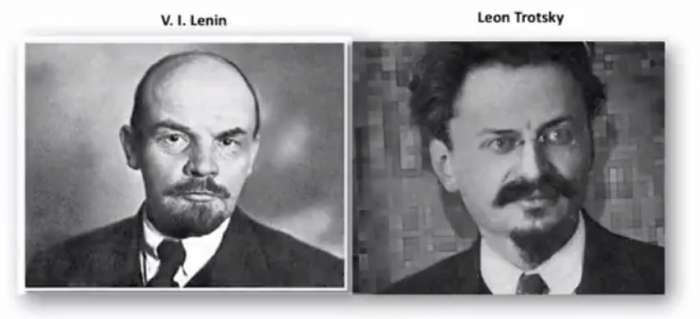
On Tuesday May 23 Dr. Henry Louis Taylor Jr. visited the TR Site to continue our lecture series with his talk “The Evolution of U.S. Cuban Relations”. His discussion of Cuba is particularly relevant to the Site as, for better or worse, Theodore Roosevelt was as significant in the history of Cuba as Cuba was in the rise of Theodore Roosevelt.
Dr. Taylor began his talk by setting the stage for the audience. He said that much of the U.S relationship with Cuba was complicated by the Cold War narrative. He defined this as the perspective, even to this day, of Cuba as opposed to the United States in the battle between “good capitalist, and evil socialist.” He went on to say that, despite the policies of detente, the U.S. still views the Cuban government as one “that needs to be toppled, because it oppresses its own people.”
This was an important point, as he claimed that the Cold War narrative would continue to muddle any dealings we had with Cuba. It also helped to create the context for the question he spent a great deal of time on: “What is Cuba?” Dr. Taylor answered this in part by discussing Lenin and Trotsky’s thoughts on how a socialist country would fare in a world dominated by capitalism.
One very important point, was that, despite any success, Cuba would always be threatened by capitalist restoration for three reasons: (1) necessary market reforms, (2) the threat that those market reforms would generate internally, and (3) intrigue from capitalist countries. According to Dr. Taylor, Cuba is defined by this struggle as well as its multi-ethnic nature.
Dr. Taylor also explained the evolving relationship between these two neighbors including the recent “thaw”. From his perspective, the easing of tensions is a noticeable improvement, but Dr. Taylor cautioned the audience to “have absolutely no illusions as to what this detente means for the United States and Cuba.” He asserts that tensions will continue “as long as the United States continues to use a Cold War lens” to view Cuba and their relationship between the two nations.
**Follow this link to watch Dr. Taylor’s presentation on YouTube.**
Tim Hortons planned for Buffalo’s East Side sparks concern
Read the full article from WBFO, here.
“It’s definitely a sign of progress, when you talk about even, a few blocks away from the proposed Tim Hortons supposed to be a grocery store in downtown Buffalo, close to the east side,” Pridgen said. “So we are seeing some businesses come to the east side that would not have even looked our way in the past.”
University at Buffalo professor and department of Urban and Regional Planning Founding Director, Center for Urban Studies, Henry Louis Taylor Jr. disagrees. He says, more commercial development on the east side, might not be such a good idea.
“The Tim Hortons is anchoring that change process, and it’s located there because of its proximity to downtown as well as its proximity, to rising neighborhood that’s becoming home to an increasing number of whites.”
Meet the New Bosses: How These Entrepreneurs Under 20 Are Changing Industries
Read the full article from Entrepreneur, here.
Zandra Cunningham, 17, Founder and CEO, Zandra Beauty
Zandra Cunningham, like a lot of young girls, was obsessed with lip gloss. When she was nine years old, with the help of her mom, she started making her own lip balms using kits purchased online and the guidance of YouTube videos. She’d pass out her homemade products at her church in Buffalo, N.Y. “One day a lady gave me a dollar in exchange for the lip balm,” says Cunningham. “And I was like, Oh, I can make money off this!” She began experimenting with new formulas for all-natural skincare products, using each failure as motivation. “The first soap I made looked like crap,” she says, laughing. “But it smelled good and the lather was good, so we kept going.” She enrolled in KidBiz, a summer youth program offered by SUNY Buffalo State, to learn the basics of building a business. She eventually earned a spot at a pitch competition hosted by Etsy and secured a placement deal with gift retailer Paper Source. From there, business snowballed: Today, Zandra Beauty is sold in Costco, Bed Bath & Beyond and Wegmans. Revenue is approaching $1 million, and a pending partnership with Target holds the promise of extreme growth. But Cunningham still wants to strengthen her foundation. “I’m starting college this fall, and people have asked me, ‘Why do you need to go to college?’ ” she says. “But there’s always something to learn.”
2018’s Best Places to Flip Houses
Read the full article from WalletHub, here.
If you’re among the millions of HGTV viewers who’ve seen an episode of “Flip or Flop,” you’ve probably thought about the thrill of gutting a house and turning a five- or six-figure profit. But the process isn’t as easy as the professionals on television make it look. Any experienced home flipper would caution you that transforming a fixer-upper into a profitable property is a difficult process.
Ask the Experts
Flipping houses can be a tricky business, especially for novices. For insight on the house-flipping market and advice on choosing a good property, we asked a panel of housing and real-estate experts to weigh in on the following key questions:
- What are the most common mistakes people make when trying to flip a house?
- What is the best way to finance a flip? Should people try to go all cash or borrow?
- What types of people are typically well-suited for engaging in house flipping?
- What factors — financial and otherwise — should go into the decision of whether a house is a good candidate to be flipped?
- Is house flipping a contributing factor to the overheating of some real-estate markets? Should this type of business be more regulated?
New York’s public housing faces a big maintenance and repair bill
Listen to the full story from Marketplace, here.
New York City has the largest public housing system in the country. A lot of that housing is decades old and not in good condition, to put it mildly. New York has a vast backlog of repairs it needs to make to its public housing, but the cost to get all its buildings up to snuff is steep — almost $32 billion over the next five years, according to a recent report from the city’s housing authority.
Angel King knows about that backlog first hand. She has lived in a sprawling housing development in Canarsie, Brooklyn, since she was a little girl. It’s called the Breukelen Houses, and it was completed in 1952. King still remembers how the complex felt when she and her family moved in in the ’80s.
“To us, it was like, ‘Wow!’ Everything was so shiny, it was so new,” she said. “The hallways were always clean.”
All they needed was a break; Northland is trying to give them one
Read the full article from Buffalo News, here.
Jaelin Grey was in his hospital bed at Erie County Medical Center last year after being stabbed when he decided he needed to change his ways.
“I felt like a victim. I felt like I wasn’t in control of my life,” Grey said.
At 20, he had already been in jail. He had been kicked out of high school but managed to come back to graduate. College wasn’t an option. He had a steady girlfriend and they had a baby together. He was supporting his family doing handyman jobs on his grandfather’s properties but it paid about $13,000 a year. And now, he had almost died after meddling in a fight.
A few months later, he was riding in his uncle’s car on their way to a job when they heard an ad on the radio: It was an invitation to apply to the Northland Workforce Training Center, a new school in the heart of the East Side that aims to annually train 300 to 400 people for advanced manufacturing and energy jobs – jobs that would pay $30,000 to $50,000.
Grey looked up the website on his smartphone and applied in his uncle’s car.
Reflections of an Activist Scholar: Henry Louis Taylor, Jr.

Re-Post From Progressive City
Introductory remarks by contributing editorial board member Jeffrey Lowe:
On Friday, April 6th, Henry Louis Taylor, Jr., received the Urban Affairs Association’s (UAA’s) 2018 Marilyn J. Gittell Activist Scholar Award. Gittell spent her entire 50-year career with the City University of New York, and focused her scholarship and community activism on concerns about racial, gender, and educational justice and on citizen participation and community control. She passed away in 2010. As the receiver of the award named in her honor, Taylor is recognized with high esteem by his UAA colleagues for achievement in research exemplifying a direct relationship between activism, scholarship, and community engagement.
Planners Network applauds UAA for choosing Henry Taylor, a faculty member for nearly four decades in the Department of Urban and Regional Planning at the University of Buffalo, as the recipient of the 2018 Marilyn J. Gittell Activist Scholar Award. We find his scholarly activism unswerving and in adherence with our principals for planning to be a tool for eliminating inequalities and changing the fundamental political and economic structures of society. And Progressive City is proud to be publishing the speech that Henry Taylor gave when accepting the award. What follows next is Taylor’s reflection upon his career, as well as his understanding (based on his experiences) of the risks and rewards for using scholarship as a force for social change.
Henry Louis Taylor, Jr.:
It is a great pleasure to share my reflections with you on being an activist-scholar. It is particularly rewarding to have this conversation on the 50th anniversary of Martin Luther King, Jr.’s assassination. Today, I will discuss my quest to connect activism to scholarship, and will divide the presentation into four parts. First, I will give a brief history of my journey to activism and scholarship, and then discuss the importance of the interplay between the two; after which, I will illustrate the use of activist scholarship to produce and implement knowledge for social change. I will conclude by discussing the challenge of linking scholarship to activism.
I am an activist turned scholar, not a scholar turned activist. I started my professional career as a clinical audiologist. My father, who received his Ph.D. from Cornell University in 1954, always challenged me to use my skills and talents in service of black people and to help build a better, more just and humane world. So, I obtained a Master’s Degree in clinical audiology, and became director of audiology at a small Speech and Hearing Clinic in Newport News, Virginia. In the late 60s, like many of my peers, I was radicalized, moved my clinical operations to near-by Hampton Institute, a historically black college, and joined a militant organization modeled after the Black Panther Party.
I was the only college educated black in the organization, and the cadre asked me endless questions about black history, the nature of capitalism, and where the movement was headed. I had few answers. I knew about the cochlear microphonics of the Sudanese rat, but had limited knowledge and understanding of black history, as well as the complicated social, economic, political and cultural problems facing African Americans, and most importantly, how to resolve them. So, I decided to get a doctorate in history to deepen my knowledge and understanding of these complicated issues. After gaining admissions to the University at Buffalo (U.B.) history department, I joined the Detroit-based Black Workers Congress (BWC), which was headed by James Forman, the former head of the Student Nonviolent Coordinating Committee (SNCC). The BWC grew out of the League of Revolutionary Black Workers, viewed black workers as vanguard of the black freedom struggle, and was an active participant in the nascent anti-revisionist community movement.
At U.B., my studies focused on black urban history, with an emphasis on change over time. I viewed history as a continuum moving from the past to the present and into the un-created future, and I wanted to understand how black positionality in the city and metropolis were impacted by change over time. The intent was to understand what problems were resolved as blacks moved from one epoch to another, and which of those problems persisted, becoming increasingly complex and difficult to solve with the passage of time. Once identified, interventions strategies could then be devised to remedy them, thereby creating the possibility of another, and more just and equitable, future. As a student, I correlated my research and studies with my practical activities in the Black Workers Congress. I wanted to understand more deeply how Buffalo’s changing economy and city building process were impacting black steel workers and the neighborhoods in which they lived. Based on my experiences with the steel workers and my involvement in the larger struggles in the community, I started to question if the complicated problems facing blacks could be solved within a capitalist framework.
Regardless, given my limited knowledge of history, I decided to take three years of coursework, and by the time I completed this phase of my studies, I considered myself a Black Marxist, operating in the black radical tradition of scholar activists, such as Carter G. Woodson, Oliver Cox, W.E.B. DuBois, Harold Cruise and Cedric Robinson. After completing my prelims, the organization sent me to Cincinnati, Ohio to organize black workers. This was a significant stage in my political development. I put my education on hold, and became immersed in black working class life and culture, while doing organizational work locally and nationally. To support myself, I worked at the University of Cincinnati Medical School recruiting black and Latinx students and designing learning modules to help them negotiate the medical school curriculum.
During those days, my street knowledge of the daily struggles of the black working class expanded exponentially. At the same time, my appreciation of the gulf between scholarly knowledge and the practical work unfolding in black neighborhoods increased. Organizationally, we approached our work in cities with limited knowledge of local conditions, including the political economy and population dynamics. For example, members of BWC often had little knowledge of how the changing local economy, city building, and public policies were underdeveloping the black neighborhoods in which they worked, nor did they understand how market forces were undermining black living standards and quality of life; and most important, they did not know how to attack or remedy these issues.
My comrades were courageous men and women, who were ready to die for their beliefs, but bravery and street smarts alone could not compensate for our limited knowledge, nor could it provide us with a strategic agenda to bring about fundamental social change. By the late 1970s, the Black Workers Congress had been destroyed by a combination of the FBI’s Counter Intelligence Program [COINTELPRO] and our own youthful mistakes and lack of knowledge.
Stranded in Cincinnati, I contemplated the future as I completed my dissertation. I concluded that the schism between knowledge and the black freedom movement was a serious issue that needed addressing. During this reflection period, Michael Frisch, a friend and chair of my dissertation committee, introduced me to the work of Theodore Hershberg and the Philadelphia Social History Project at the University of Pennsylvania. Ted talked endlessly about the connection between the organization of research and the production of knowledge for social change. He believed in collaborative research and focused on change over time. Here, Hershberg sought to construct interactive linkages among the past, present and uncreated future of cities.
He used an urban as process conceptual framework that models a dynamic interactive relationship between the city and its neighborhoods and the group experience and behavior of different races and ethnicities. In this framework, the type of city and neighborhoods in which people live mattered. They mattered because an interactive relationship exists between people and place. People act on place and place acts on people. Ted’s conceptual framework and organizational approach to research would be a major influence on my future work.
At any rate, sitting in my small apartment in the Mt. Adams section of Cincinnati, I decided to leave the medical school, get a position at a major research university, and ultimately to build a research center that produced knowledge in service of the black liberation movement and the struggles of oppressed people. About a year after receiving my doctorate, I took a joint position at the Ohio State University in the Black Studies and History departments. Here, I started developing a prototype of my research center called the Cincinnati Urban History Project (Project), and I used the university’s work study program to staff it with graduate and undergraduate students—a strategy I learned from Ted Hershberg.
I used the Project to study the relationship between city building and black neighborhood development in Cincinnati. Concurrently, I collaborated with other senior and junior scholars studying Cincinnati. This collaborative approach was based on the Hershberg thesis that socioeconomic problems are too complicated for any one scholar to grasp, therefore research teams are needed to work on them. I creatively applied this thesis by working with other Cincinnati scholars on a topic of mutual interest—the black urban experience. In 1988, I culminated this phase of my work by organizing a three-day conference to identify the best studies on blacks and Cincinnati. I selected the top papers, and put them, along with my own work, in an edited volume, Race and the City: Work, Community and Protest in Cincinnati, 1820-1970.
Based on this collaborative work, I started to view individual racism as a component of institutional and systemic structural racism, which was operationalized within a regional political and economic context that dictated social relations. For example, my spatial analysis of black Cincinnati from 1850 to 1950 showed that blacks lived in shared residential space until the rise of profit-based homeownership and a modern system of land-use regulation destroyed those types of residential settlements. In Cincinnati, then, contemporary racial residential segregation was spawned by intentional federal and state policies and market forces combined with the rise of homeownership as an instrument of wealth production. Within this context, the actions of individual white racists were subsumed within a larger system of structural racism. This finding reinforced my thinking about the necessity to center fundamental structural change in the struggles of African Americans and other oppressed people.
The work on Cincinnati laid the foundation for my future research and practical activities on blacks and the city. Significantly, development of the Cincinnati Urban Studies Project brought me back to University at Buffalo. While going up for tenure at Ohio State, a headhunter recruited me for an administrative post at U.B. I wasn’t interested in the job; I loved being at Ohio State, but the interview gave me an opportunity to get away for a few days and see some old friends. While at U.B., I discussed my views on the relationship between research and problems facings the black community with the search committee and vice-provost. Later, the vice-provost contacted me and said they wanted me to come to the university and build the type of research unit I had discussed with them. He said U.B. would establish an interdisciplinary Master’s Degree associated with the center so that it would have an academic arm. This was the opportunity I had been waiting for. In the fall of 1987, I returned to the University at Buffalo to found the U.B. Center for Urban Studies.
The establishment of the U.B. Center gave me an opportunity to institutionalize the connection between activism and scholarship. My aim was to turn research into a weapon of struggle in Buffalo and across Western New York. I forged an action research strategy based on interactions with neighborhood residents and stakeholders, with the intent of exposing oppressive conditions, raising political consciousness, and catalyzing neighborhood change. For example, our studies on poverty and the growth of an underclass led to formation of the region’s first community economic development corporation, the Office of Urban Initiatives. The unit was housed in my Center and worked mostly on black neighborhood development issues; our market study of an black inner-city neighborhood led to the regeneration of a major shopping center, while our studies of U.B.’s Buffalo campus sparked the onset of a comprehensive redevelopment effort in that community, which included a new subdivision.
Around 1997, I decided to relocate the Center from the College of Arts and Science to the School of Architecture and Planning, where I could more effectively engage the community. Based on our experiences, I concluded that our work could move to a higher level by using neighborhood planning and development as tools for transforming underdeveloped black communities. Relocating to the School of Architecture and Planning would facilitate that quest.
THE CONNECTION BETWEEN ACTIVISM AND SCHOLARSHIP
Why is this connection between activism and scholarship so important? The goal of activist scholars is to consciously produce and implement knowledge for social change. The intent is to understand the world, so that we can change it. This is important because blacks, Latinx, and other oppressed peoples are beset with core problems, which circumscribe their life chances, produce undesirable social, economic, health, cultural and political outcomes, and continually reproduce their positionality at the bottom of society. These are real-life conditions, and they can only be resolved by producing and implementing a knowledge base with the capacity to guide the struggle to eliminate them. The reason is these core problems–inferior education, inadequate housing, poor health care services, food insecurity, joblessness, low-wages, underdeveloped neighborhood and powerlessness–are “wicked problems” that require institutional and systems change to be eliminated. Social change, then, requires the production and implementation of knowledge to solve these wicked core problems that undergird racism, along with economic exploitation and oppression.
Furthermore, because of the complexity of bringing about social change, we must learn from our errors, miscalculation and flaws in thinking, and then we must use this insight to refine and improve our knowledge base. Thus, the interplay between knowledge production and implementation can be conceived as an ongoing process of experimentation, where feedback loops are established between theory and praxis, so the two can reinforce each other. Undergirding this struggle as experimentation viewpoint is the perspective outlined by Kwame Ture (Stokely Carmichael) and Charles Hamilton in their 1967 classic Black Power: “We start with the assumption that in order to get the right answers, one must pose the right questions. In order to find effective solutions, one must formulate the problem correctly. One must start from premises rooted in truth and reality rather than in myth.” This powerful trilogy— ask the right question; formulate the problem correctly; and start from premises rooted in truth and realty—forms the basis of my approach to linking scholarship to activism, and explains the importance of establishing interactive connections between the two.
Toward this end, I think that multiple forms of research can contribute to the production and implementation of knowledge for social change. In some instances, I engage in theoretical studies, which are unrelated to local problems. Then, in other instances, I am involved in action-orientated research to shed light on specific urban or neighborhood problems, while in other instances, I work with specific neighborhoods to develop transformative plans. Here, the focus is on engaging in implementation research, where theory is integrated with practice, thereby enhancing the possibilities of success. In my view, then, research that produces and implements knowledge to solve core problems can range from action-research and community-based participatory research to implementation research and theoretical studies based on archives work and/or big datasets.
Moreover, the methodologies supporting such studies can range from quantitative studies with carefully constructed methodologies to ethnographic fieldwork to interpretative synthesis of the literature in a particular field, and the final products of this work can be books, published articles, technical reports, along with blogs and op-eds, or even reports to other comrades. Also, the rhythm of carrying out such work can vary. In some instances, for example, my work is exclusively focused on theoretical studies, and I am isolated from engagement in struggle; while at other times, I am almost completely absorbed in on the ground struggles. At still other times, a balance exists between my scholarly activities and engagement in struggle. However, I consider all these activities part of my political activism, with each activity informing the other. For example, even when I am totally emerged in the heat of battle, I never cease being a scholar, trying to integrate my academic knowledge with community and street knowledge, and using insights derived from the synthesis to help advance the struggle. In my world, activism and struggle are never separated.
My point is that many different types of research and methodologies can contribute to the production and implementation of knowledge for social change; but regardless of the approach used, one should always follow the Ture and Hamilton credo—was the right question posed? Was the problem formulated correctly? Was the premise rooted in truth and reality? Within this context, to be implemented, knowledge must always be recreated as programs and activities called reforms. Thus, when linking theory to practice, we must distinguish between liberal and radical reforms. Liberal reforms are those designed to mitigate socioeconomic conditions among oppressed people, without bringing about fundamental change in the operation of institutions or systems that spawn racial and social injustice and inequity. These reforms inevitably lead folks down the path of liberaldogoodism, where they engage in activities that make them happy, but that do not alter the conditionality under which oppressed people live. On the flipside, radical reforms seek remedies that alter the operation of such institutions and systems. These reforms are linked to freedom dreams and radical visions of other possible worlds, situated in the uncreated future. Radical reforms, when implemented, force neoliberal capitalism to ingest viral remedies that are toxic to its system. Operating within this framework, the goal of the activist scholar is to produce knowledge and convert it into radical reforms that can spawn systemic structural changes in society.
Lastly, before moving on, I want to stress the importance of conducting studies of social movements, as well as studies of smaller, less celebrated struggles against oppression and exploitation. Efforts to bring about social change will always be met with resistance. The black abolitionist, Frederick Douglass once said, “Power concedes nothing without demand. It never has and it never will. If there is no struggle, there is no progress.” In essence, discussions about the interplay between theory and practice implicate the role of knowledge production in illuminating and facilitating the struggles of oppressed people. Thus, we need studies of such movements, especially the civil rights, black power, and new left movements, to deepen our knowledge and understanding of them and the lessons they can teach us.
THE WORK: FROM THEORY TO PRACTICE
Now, I want to shift to a discussion of two projects to illustrate the role that activist scholarship can play in bringing about social change. First, I will discuss my work on neighborhood life and culture in Cuba, and then converse about efforts to apply the insights learned from the Cuba study to neighborhood development in the United States. The task of developing radical reforms requires imagining other possible worlds and how these alternative realities can emerge out of our current situation. So, in 1998, when my friend, Jose Buscaglia, asked if I wanted to spend a month teaching in Cuba as part of a U.B. Summer Study Abroad program, I immediately said yes. I had long admired the Cuban Revolution, respected Fidel and Che, and knew about the alliance between black radicals and the Cuban government. However, my enthusiasm went beyond the romanticism of a black radical sojourning to a revolutionary mecca. As a historian and urban planner, who studies and does practical work in underdeveloped U.S. neighborhoods, I wanted to gain insight into Cuba’s approach to neighborhood development and learn how they grappled with the issues of race and class. I wanted to determine if any of their experiences could be creatively applied to our situation in the United States.
Once in Cuba, I worked with faculty members at the Universidad de la Habana School of Social Sciences to design an exploratory research course, which blended ethnographic fieldwork with classroom lectures taught by myself and social science faculty at the universidad. The Cubans allowed my students and I to visit any site or facility desired, and to travel freely throughout Havana and across the island. Classes were held during the week, including taking fieldtrips, and we travel to various parts of the country on the week-ends. Additionally, the students did a group research project on the San Isidro neighborhood located near the Convento Santa Clara, where we stayed.
Unlike other groups, the Cubans allowed the U.B. delegation to live in a community setting in Habana Vieja, the oldest section of the city. Habana Vieja was a mostly Afro-Cuban working class neighborhood; and in this community, I became immersed in everyday life and culture. I hung out mostly with street hustlers and ordinary Cubanos. My intent was to learn about their Cuba, so I formed deep friendships with them. They took me into their homes and their lives, and showed me a Cuba that tourists rarely, if ever, see. During this same period, a close Cuban friend introduced me to Nehanda Isoke Abiodun, an African American woman living in political exile on the island. Nehanda was a Harlemite, close associate of Assata Shakur, the most famous US exile, and a member of the Republic of New Afrika and the Black Liberation Army. She was granted political asylum in 1990. Nehanda was the last African American to be given such as status.
Thus, my relationship with Cuban academics, working class Cubanos, and an African American living in exile gave me an opportunity to learn about the island through Cuban eyes, filtered through the lens of an African Americans. My overarching goal was to gain insight into race relations and the Cuban neighborhood development process, and to determine what, if any, community development concepts could be uploaded and creatively applied to our situation in the United States. Within this context, I wanted to understand how public policy and socialist culture filtered down through the Cuban bureaucracy to ordinary Cubanos. Then, in 2004, the Bush Administration ended U.S. Summer Abroad Programs in Cuba.
This breakpoint created the opportunity for me to summarize my Cuban experiences in a book length manuscript. I decided to undergird the project with house-to-house surveys, so I had a deeper understanding of how ordinary Cubanos viewed neighborhood life, education, health care, and the social supports system, as well as how they made ends meet. Concurrently, I decided not to ask the Cuban government for permission to do the study. I wanted my findings to be free from any taint of government influence or censorship. This research project, then, was a stealth one. I organized a research team composed of 20 ordinary Cubanos and paid them a small stipend to participate. I explained the secrecy of the project to team members, taught them how to conduct survey research, established a system of quality control, and took digital photographs of every completed survey, as a security measure, in case the government seized the hard copies. I used a snowball sampling technique, and the team conducted 398 house-to-house surveys in about seven different Havana neighborhoods.
The project had four important takeaways, which I believed could be creatively applied to our situation in the United States. First, the Cubans conceptualized neighborhoods as physical and social spaces, and placed great emphasis on the development of social capital and granting control over neighborhood space to the residents. Second, the government transformed underdeveloped neighborhoods into family-friendly communities that supported solidarity, resiliency, reciprocity, good health, and the development of social capital. These neighborhoods were highly organized, structurally functional places based on community control, participatory democracy and neighborhood-based service delivery, including primary education and health care. Third, the Cubans used mass homeownership to spawn neighborhood stability by anchoring people in place, which laid the foundation for building of trust and solidarity. Lastly, they used a neighborhood-government partnership to sustain the community’s growth and development. Thus, although neighborhood residents were poor, the operation of their communities as a structurally functional places changed what it meant to be poor.
In summary, the Cubans intentionally designed their underdeveloped neighborhoods as structurally functional spaces with the organizations, institutions, services, supports, and cultural frameworks needed to nurture and help residents grew and develop. In this setting, residents were given the power and authority to control their space and anchor their neighborhoods in solidarity, reciprocity, self-reliance and participatory democracy. Within this framework, the Cubans smartly provided the most vulnerable communities with the greatest government support and assistance. Lastly, we should be careful not to romanticize these Cuban neighborhoods. Life was hard and very difficult, but the community’s organization, structure and function turned them into places that facilitated the development of residents, thereby spawning desirable social outcomes, even though people faced many challenges.
Reflecting on the Cuban experience, the really big question that intrigued me was could their principles of neighborhood development could be creatively applied to underdeveloped communities in the United States. I am currently working with Buffalo’s King Urban Life Center to find out. The King Center’s host neighborhood is a marginalized, black rust belt community of about 3,300 residents, situated in a low market demand area, characterized by the serious loss of housing units, vacant land, abandoned structures, poorly maintained rental properties, and a declining population.
I am vice-president of the Center’s Board of Directors, and a member of its neighborhood development committee. Our efforts to regenerate the community have moved through two stages and is entering a third. First, to gain insight into the economic, social and political forces underdeveloping the neighborhood, my students and I, in partnership with the residents, conducted a yearlong study, which included field observations, focus groups, survey research, parcel level assessment of structures, and an analysis of property ownership. Second, this past fall, based on insights derived from the research study, I taught a studio course to develop a plan to regenerate the King Center neighborhood. The intent was to integrate the core principles derived from my study of Cuban neighborhoods into the redevelopment strategy for the King Center community.
Toward this end, the plan sought to integrate community building activities with the neighborhood’s physical design and development, while it aimed to use a radical community land trust strategy to gain control over the neighborhood development process. A cooperative housing strategy was proposed to deepen and expand the communal property ownership ideal, while an aggressive building code inspection and housing receivership strategy was suggested to improve the quality of rental housing, while maintaining its affordability. Third, we are now in the process of forging an implementation strategy to guide the plan’s execution. For this implementation strategy to work, we will need to privilege community organizing and use it as the engine to drive the community building and participation process. Finally, the most critical component of this plan will be a strategy to generate sustainable resources to finance the effort. Of course, to be completely transparent, I have absolutely no idea if this bold neighborhood regeneration strategy will work, but we intend to try. Either way, however, the results of this experience, along with the lessons learned, will be studied, analyzed, and published.
In closing, I want to say a few words about the challenge of doing this type of research. To start, I believe that activism and good scholarship are intertwined. The struggle to transform the conditions of life among oppressed people and build a better and more just and equitable world is an extraordinarily complex task, which requires the highest level of scholarship, accompanied by battles down on the ground. There can be no progress without struggle; and struggle without the guiding light of knowledge will fail. Given this reality, I see no contradiction between activism and good scholarship. Yet, at the same time, I know that some people will downplay the complexity of struggles to solve the core problems facing blacks and oppressed people. These folks want to separate activism from scholarship, and they view civic engagement as a “thin,” non-scholarly, citizenship thing. Of course, this type of thinking is misguided and should be ignored; but my larger point is this–when scholarship is connected to activism, the quest for tenure and promotion, in most instances, should take care of itself.
This tenure and promotion issue notwithstanding, I believe one of the big challenges facing activist scholar is asking the right question to guide the research process. Core problems, and their offshoots are very complex, and posing research questions, which will push us beyond descriptive analysis, or symptomatic issues to causality is arduous. Moreover, understanding a problem and knowing how to solve it are two fundamentally different things; and one does not automatically follow the other. For example, I think we understand the socioeconomic and political forces that create extreme loss of housing units, unbuilt lots, abandoned structures and poorly maintained rental properties in underdeveloped rust belt cities, but knowing how to solve this complicated problem in low-demand market areas remains elusive.
I want to close this presentation as I started it. In my journey across time, I have come to believe that connecting activism to scholarship is our best hope for solving the core problems facing the oppressed, advancing the struggle of the American people, and building a more just, equitable and humane society. Knowledge alone, however, is not enough. As Frederick Douglass said, “Without struggle, there is no progress. There never has and there never will be.” And this is exactly why scholarship must be linked to activism.
Thank you.
Conference aims at health disparities in Erie County
Re-post from Wbfo News
The Jacobs School of Medicine and Biomedical Sciences on Main Street will host the Igniting Hope conference.
Some of the largest disparities in health in Erie County are happening in the City of Buffalo. A public conference this weekend aims to start trying to fix them.
14204, 14206, 14211, 14212, and 14215 are the five zip codes that suffer from the some of the worst disparities in health in all of Erie County. They cover most of Buffalo’s East Side and a portion of its First Ward – neighborhoods heavily populated by African Americans.
Zip codes experiencing the worst health outcomes in Erie County.
CREDIT: GIS MAPPING ERIE COUNTY/TASK FORCE ON HEALTH CARE DISPARITY IN THE AFRICAN AMERICAN COMMUNITY, JUNE 2015
Health disparities in the African American community are what the Igniting Hope conference aims to take on.
Pastor George Nicholas of Lincoln Memorial United Methodist Church, the conference’s convener, said it will be a first step towards changing the “traditional” narrative around health disparities and race.
“The immediate response has been focusing on the behavior – you know, eating of fried foods, lack of exercise, and all those things,” said Nicholas. “And while those are factors, the data shows us that there’s other factors – social determinants – that actually play a greater impact on the health of African Americans.”
Economy, environment, health services, education, and social support networks will be among the topics discussed. The goal is to help members of the public, the medical field, and thought leaders in the community understand what’s driving health disparities.
Nicholas hopes those who turn out for the event will answer a call to action.
“Can we truly say that this region is in a renaissance or in a revival when we have this entire community here that is suffering from some major health problems, and we’re not responding properly to them,” asked Nicholas.
The conference is a joint effort between Millennium Collaborative Care and the University at Buffalo. For the school, it’s a chance to show what its researchers can do, and the precursor to sending them out into the community to do it.
Timothy Murphy, Director of the Clinical and Translational Science Institute at the school, said they aim to bridge the gap between minorities and research which stems from a historic lack of trust.
“If you look at all of the people nationally who participate in clinical studies, less than ten percent are under-represented minorities,” said Murphy.
“People who participate in clinical research, they have better health outcomes, they have more cost-efficient care, and surveys show they are more satisfied with their care.”
The conference is free and runs from 8 a.m. to 4:30 p.m. Saturday inside the Jacobs School of Medicine and Biomedical Sciences at 955 Main Street. More information is on the Millennium Collaborative Care website.
Race and housing highlighted in panel discussion
Re-post from Wbfo News
Issues surrounding housing inequities in Buffalo were brought to light during a panel discussion at the WNED|WBFO Studios Wednesday night, as part of WBFO’s Racial Equity Project.
University at Buffalo Urban Planning professor Henry Louis Taylor Jr. was one of the panelists. He says changing the way the city makes investments is key when solving the problem of housing inequities in Buffalo.
“The pattern that we see across Buffalo’s history, where ever whites are concentrated, investments follow at the public level and at the private level,” he said.
Other panelists included Dr. Melinda Cameron from University at Buffalo Pediatrics, Sarah Wooton from the Partnership for the Public Good and John Washington from PUSH Buffalo.
For more watch the full replay of FB live event online at wbfo.org.
Reflections of an Activist Scholar: Henry Louis Taylor, Jr.
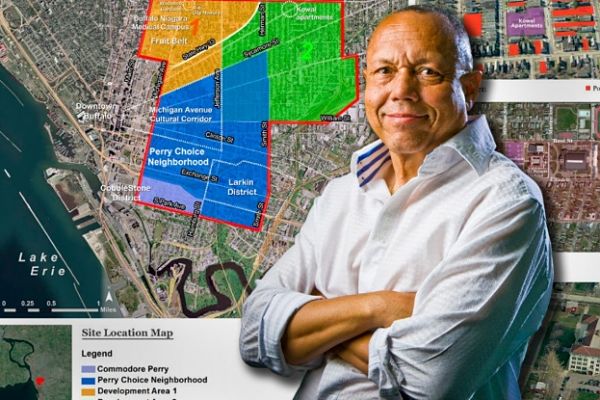
Re-Post From Social Science Space
There is a term, structural racism, which centers on the idea that discrimination is built into institutions and culture. Henry Louis Taylor, Jr., a professor of urban and regional planning at the University at Buffalo and the founding director of the Center for Urban Studies there, has taken that idea of built-in racism a step farther. He argues that racism in the metropolitan U.S. is physically part of the landscape, both in the built environment and the market-centric economic network.
Such insights, and his work to redress and reverse them, saw the Urban Affairs Association present Taylor with the UAA-SAGE Marilyn J. Gittell Activist Scholar Award for 2018. The award highlights field-based urban scholarship and promotes the dissemination of work by activist urban scholars. “Taylor’s research explores the nexus between city building and racial and social class injustice,” the UAA explained in a release. “ … His contributions to scholar-activism have been long-standing and deep, delving into both international and local urban issues with a mastery of critical scholarship and a love of community.” This is actually Taylor’s second activist scholar award: in 2012 he received the Lee Benson Activist Scholar Award from the University of Pennsylvania.
Social Science Space took the opportunity of this latest award to discuss Taylor’s role as an activist, as a scholar (“I am an activist turned scholar, not a scholar turned activist”), an urban planner and an historian. We’ve split the interview into two parts, and the second installment, focused on Taylor’s almost two decades of work in Cuba, will appear here next week.
Taylor’s earliest academic work, as an undergrad, was in speech pathology and audiology before he took a second master’s and later a doctorate in urban history at the University at Buffalo. Since then he’s worked diligently on issues of racial justice, especially through the prism of urban planning and the historical experience of African Americans in U.S. cities. This includes academic work, as a professor at Buffalo, sitting on the editorial board of the Journal of Urban Affairs, and writing or co-authoring six books, including the Historical Roots of the Urban Crisis: African Americans in the Industrial City, 1900-1950. Taylor writes and appears often on urban issues for the mainstream press and online media.
Between academia and activism, he’s served on a number of practical projects, writing technical reports for redevelopment projects in his hometown and is currently, alongside Robert M. Silverman and Li Yin, studying gentrification and its impacts in Buffalo through the Urban Institute’s National Neighborhood Indicator Partnership.
As the UAA said in its citation, “Dr. Taylor fully embodies the connection between good scholarship and good activism and stands as a model for young academics.”
What excites you about my work on and off-campus? Do you feel that you are making a difference? Are you pessimistic or optimistic?
I am driven by the quest to end black oppression and build a world based on racial, economic, political, social and cultural justice. This is my life’s mission, and it is what excites me about my work at the university. Of course, the complicated issues facing blacks and other oppressed nationalities will not be solved in my lifetime; so my intent is to develop knowledge, insights and lessons that the next generation can build on. I am energized by a belief that the struggle of blacks and other oppressed groups will ultimately triumph; and that they will succeed in their quest to build a better, more racially and socioeconomically just and humane world.
I came to the University at Buffalo in 1987 with two interactive goals. The first was to build a research center that aligned knowledge production and implementation with the down-on-the-ground struggles of blacks, Latinx and the low-wage white precariat. The second goal was to popularize civic engagement on U.B.’s campus and to build community-university partnerships. This undertaking made it possible for me to connect easily my activism to scholarship.
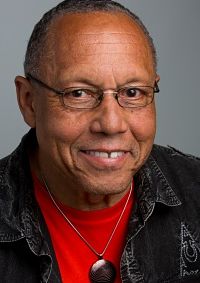
Henry Louis Taylor, Jr.
The intent of the activist-scholar is to produce and implement knowledge for social change, so that we can understand the world in order to change it. Blacks, Latinx and other oppressed people are beset with oppressive core problems that (1) circumscribe their life chances; (2) produce undesirable economic, social, political and cultural outcomes; and (3) reproduce their positionality at the bottom of the economic order. These oppressive core problems consist of inferior education; inadequate housing; poor health care services; food insecurity, joblessness, low-wages, underdeveloped neighborhoods and powerlessness.
These issues are entangled with systemic structural racism, the market-centric approach to city-building, and the functioning of knowledge capitalism and operation of the neoliberal state. Such complicated issues cannot be resolved without the production and implementation of a knowledge base with the capacity to understand wicked problems and to construct a framework to guide the struggle to eliminate them. The intent of the UB Center for Urban Studies, which I founded, was to engage in the production and implementation of a social change knowledge base. The aim was to conduct studies ranging from historical analysis to theoretical studies to community-based participatory research, as well as neighborhood planning and community development. The intent was to understand core problems and unite with residents in down-on-the-ground struggles to solve them. Problems can never be fully understood and resolved in the absence of struggle. So, the goal was to battle against oppressive neighborhood and workplace conditions, as well as to engage in struggles to transform the entire metropolitan region.
Our work has made a difference. Over the years, we have engaged in many projects. I will highlight one. My first big project was a comprehensive study of the conditions facing Black Buffalo. We put together an interdisciplinary team consisting of 12 junior and senior scholars, along with dozens of graduate students to place Black Buffalo in a historic context and to study challenges facing the black community, including economic issues, inadequate education, work and joblessness, along with crime and victimization. The goal was to understand why neighborhood conditions were worsening and an underclass was growing.
Based on the study’s finding, we constructed a policy framework in partnership with a group of more than 20 practitioners and community residents, and then formed a community economic development organization, the Office of Urban Initiative, Inc., to implement the study’s findings. Over the ensuring years, dozens of organizations and groups used the state of Black Buffalo knowledge base and policy framework to guide their practical work.
The Black Buffalo study became a model of how I carried out my work in the city. Over the years, the UB Center has partnered with dozens of organizations and groups and have produced numerous technical reports and projects, including housing and commercial development initiatives. During this period, I have also learned that power concedes nothing without a demand. Knowledge production must always be connected to struggle.
Our work has made a difference, but we have not changed the trajectory of black neighborhoods, nor have we altered Buffalo’s market-centric approach to city building. Successful projects, including brick and mortar initiatives, and changes a neighborhood’s developmental trajectory are two different things.
Thus, in many respects, while everything has changed in Buffalo, everything has remained the same. Yet, I remain optimistic. The struggle of Black America and oppressed groups is a long movement; it is a protracted movement punctuated with ebbs and flows. My primary task is to produce knowledge, gain insights and learn lessons from participating in struggle, so that I improve the current situation and lay a foundation for future generations to build on. My optimism is fueled by an understanding that blacks and their allies have won many battles over time, and they will keep marching on until victory is won.
What is the state of urban America?
U.S. cities are in trouble. On the surface, many urban centers appear to be thriving; but looks are deceiving. Still, happy talk abounds. Even in my town, the theme song is “Buffalo Rising” as the Buffalo Niagara Medical Campus, downtown investments, and a resurgent housing market fuel hope and optimism. In Cleveland, friends are quick to tell me about the success of “downtown as a neighborhood” and many other exciting things happening there; but looks can be deceiving. Beneath the calm and seemingly flourishing urban skyline, trouble is brewing in superstar cities and peripheral cities alike.
In time, I predict that the urban precariat and the increasingly marginalized and oppressed national minorities, including blacks, Latinx, immigrants, and refugees will be ignited by Henri Lefebvre’s Right to the City manifesto. The right to the city is a clarion call for the production of urban space to be wrested away from neoliberal private and government interests, and restructured in the interest of blacks, Latinx, and the working-class precariat and other groups marginalized by the market-centric creative city building method. We have seen right to the city flashpoints in Ferguson, Baltimore, rise of BlackLivesMatter, and in the growing resistance to police violence in underdevelopment urban communities across the country. These are trailers to a drama that will be increasingly played out on the streets and in the rise of a new political movement sometime in the indeterminant future.
Honoring Another Activist-Scholar
The Urban Affairs Association honored Temple University’s Elizabeth L. Sweet, whose work “focuses on feminist and anti-racist approaches to safe cities and sustainable community development in Latina/o and Latin American communities,” as its 2018 Marilyn J. Gittell Activist Scholar Award-Honorable Mention.
Sweet teaches in the Department of Geography and Urban Studies at Temple, and is an expert in planning theory and qualitative research methodologies (she uses a mixed-methods and place-based approach in her own research). In recent publications she has proposed using body map storytelling and community mapping as innovative ways to co-create data with communities on a wide range of issues and solutions to urban problems.
In its citation, the UAA noted that Sweet “is committed to collaborating with communities in order to influence policy, and she has worked with groups in the U.S., Mexico, and Columbia.. Among her many projects are a chapter on migrant women’s safety and an article on methodologies for making communities safer through reconceptualizing bodies and space.” Off-campus, she works with Women for Economic Justice in Chicago and Coalición Fortaleza Latina in Norristown, Pennsylvania to help create inclusive and equitable cities.
What’s happening? In a recent book, Ricard Florida, the economist and urban studies theorist, argued that U.S. cities were facing a new urban crisis consisting of a failing middle-class, increasing inequality, deepening segregation, and I might add housing affordability, evictions, low-wages, poverty and joblessness, along with the exacerbation of conditions in underdeveloped neighborhoods. According to Florida, superstar cities, such as San Francisco, L.A., Boston, Washington, D.C., and New York City are in crisis, as well as peripheral cities such as Buffalo, Cleveland, and Milwaukee.
The plight of U.S. cities, I argue, is not the result of a crisis situationcaused by some anomaly, or by misguided or insensitive urban policies. No. We are not facing a crisis, but are witnessing the increasingly visible chronic socioeconomic outcomes produced by a neoliberal market-centric approach to building cities and their metropolitan regions. The culprit is this neoliberal market-centricmethod of city-building. Cities are not unplanned and unintentional urban places that grow wild, unbridled and randomly. City-building is intentional, and the resultant economic and spatial inequality is inevitable and deliberate. The new urban crisis conceptual framework, then, hides the structural inequality and racism inherent in the neoliberal market-centric approach to city building.
This unique market-centric approach to building cities deliberately steered city building toward the twin goals of refashioning cities to accommodate emergent knowledge capitalism and to attract the nascent knowledge workers, high-techies and cultural workers, as well as students and others Richard Florida dubbed the creative class. This approach to city building was ignited by the rise of a service, finance, real estate, high-technology and tourism economy, which demanded a new built environment to house it and a new residential environment to house the creative class.
Robert Moses and the Rockefellers forged the creative city building template, although Austrian David Yencken is credited with coining the term in 1988. However, in the 1950s and 1960s, Moses and the Rockefellers intentionally recreated Manhattan as a place that would attract the city’s nascent knowledge workers, high techies, and cultural workers with chic restaurants, coffee houses, elegant co-ops and high culture in a distinctively urban setting where elite and upwardly mobile white residents could live, work, play and shop in cosmopolitan space where they felt safe, secure, comfortable and happy. With impunity, using urban renewal and slum clearance, Moses and the Rockefellers, in their quest to transform the Big Apple into a superstar city, destroyed working class neighborhoods, displaced thousands, gentrified Manhattan and intensified socioeconomic inequality in New York City.
Richard Florida and others embraced and popularized this approach to city-building in the current period. While Florida believed the creative city methodology was most appropriate for big cities with superstar potential, over time, cities regardless of their positionality within the urban hierarchy double-downed on the market-centric creative city approach to city building. Urban leaders everywhere believed the secret to urban prosperity was building a city that attracted and retained the creative class. Such a place would attract knowledge, high-tech and cultural workers and the big companies, investors and prosperity would follow.
This storyline had an ugly side. The creative city strategy combined with the neoliberalization of government to hit with sledgehammer force blacks, Latinx, immigrants and refugees, and the white working class precariat. The creative city approach expropriated urban land with high-value potential and used it for high value creative city commercial and residential development. Gentrification, displacement, relocation to the urban periphery or inner-suburbs and an exacerbation of living standard and quality of the life became the flipside chic creative class neighborhoods.
The Ferguson explosion first revealed the ugly side of the creative city paradigm, especially in limited resource peripheral cities. The big problem is that trickle-down neighborhood development does not work, especially in peripheral cities where government invest most public dollars in vibrant creative class neighborhoods, with the unfounded expectation that concentrated development will spark market-centric activities in areas of concentrated underdevelopment.
The neighborhood-effects literature, and the work of scholars like Robert Sampson in the Great American City and Patrick Sharkey in Stuck in Place indicate the fallacy of such thinking. Sampson and Sharkey argue that neighborhoods are prime determinants of a person’s life chances and socioeconomic outcomes and that underdeveloped neighborhoods are oppressive sites of social reproduction that chronically produce undesirable socioeconomic outcomes among blacks and other people of color. The market-centric neoliberal creative city approach to development will continually produce marginalized underdeveloped neighborhoods, unless there is a radical intervention.
Florida and other urbanist understand the ugly side of creative city development, but think they can solve the problem simply by tinkering with the market. I call this type of thinking urban fantasy theory, where truth and reality is replaced with myths. Michael Oluf Emerson and Kevin T. Smiley makes this point in a brilliant new book, Market Cities, People Cities.They demonstrate that a powerful connection exist between the type of city-building paradigm used and socioeconomic outcomes. They show that market-centric and people-centric approaches to building cities yield fundamentally different outcomes. Thus, socioeconomic and neighborhood outcomes in market-centric places like Houston are fundamentally different from those found in people-centric places like Copenhagen.
The lesson is simple. The city-building paradigm matters. Thus, change the market-centric creative city building paradigm and we bolster the possibility of building a just city based on racial, economic, social, political and cultural justice. Meanwhile, without changing city-building approaches, tensions between concentrated development and concentrated underdevelopment in U.S. will continue to grow until the time comes when the disenfranchised and oppressed raises the Right to the City banner.
How do you overcome injustice fatigue from those who see the same or similar problems echoing throughout the decades?
I am a historian, as well as an urban planner. I understand the connections between the past, present and uncreated future. The black freedom struggle is a long movement—a protracted struggle that extends across time and space. In each epoch, blacks are faced with a challenge they must overcome to move the freedom struggle to the next stage. For example, stage one in the long movement was the battle against slavery. This fight lasted more than 200 years, but in the end blacks and their allies triumphed. Slavery was vanquished. Then it was replaced by an oppressive peonage system that tied blacks to agricultural capitalism as sharecropper, small farmers, and convict laborer. Racial segregation, hostile discrimination, along with legal and extralegal violence reinforced this system and kept blacks fastened to the land, disenfranchised, and powerless.
This was the age of Jim Crow racism. Blacks and their allies fought back. Jim Crow racism was defeated. The struggle took over a hundred years, but in the end the citadel of overt, hostile racism was torn down. During this era, blacks were proletariatinized and became an urban people trapped in underdeveloped urban neighborhoods. In this setting, they entered the third stage in the long freedom movement—the war for power, economic, political, social and cultural freedom. In this period, blacks will join with other oppressed people, including the white precariat, to proclaim their Right to the City and to end the hegemonic domination of market capitalism. This will be their most complex and difficult struggle, but in the end blacks and their allies will win. Justice always triumphs over injustice. Thus, when viewed against the long black freedom movement backdrop, I see blacks confronting challenges, battling against them, ultimately winning, and then moving on to the next challenge. So, I am not fatigued. On the contrary, I am energized, optimistic and excited.
Would you describe the interplay between academia and activism/advocacy in your work? Not every scholar is comfortable bridging the two.
I am an activist turned scholar, not a scholar turned activist. During my tenure in the left movement, I viewed a schism between knowledge production and implementation and the black struggle that frustrated our work down-on-the-ground in neighborhoods, the workplace, and cities. The reason is the socioeconomic, political, and cultural challenges facing blacks are too complex to understand without being unraveled by research and study. To transform freedom dreams into reality, not only do we need to understand the educational, housing, employment, health and underdeveloped neighborhood problem, but also we must know how to solve them in the real world. Moreover, we need to understand the history of the long movement, along with knowledge of its strengths and weakness, as well as successes and failures.
This task of understanding and solving the core problems facing blacks requires both the production and implementation of knowledge. For example, you cannot find a cure to lung cancer by engaging in research without practice. The theories of causality must be tested and verified in practical situations. The same is true in social struggles. Urgent social problems cannot be solved simply by producing knowledge. Knowledge must be tested and verified in the crucible of battle. This interplay between theory and praxis makes it possible to learn from our errors, miscalculations and flaws in thinking, thereby refining and improving knowledge.
I love bridging the space between activism and scholarship, but the production of knowledge for social change does not require that every scholar play this bridging role. What it does require is that the scholar is consciously and intentionally producing knowledge to bring about social change. Within this context, some scholars might produce knowledge, while others take the lead in implementing it, and still others, like myself, will produce and implement it. A scholar, then, can be a very progressive participant in the movement just by producing knowledge. However, to be considered an activist-scholar, one must be involved in connecting their scholarship to struggles down-on-the-ground.
On this point, I think that multiple forms of research can contribute to the production and implementation of knowledge for social change. In some instances, I engage in theoretical studies. Then in other situations, I am involved in action-oriented research to shed light on specific urban or neighborhood problems, while on other occasions, I am working with communities to develop transformative neighborhood plans. The larger point is the production of knowledge for social change must be intention, and the scholar must be deliberately seeking to create a knowledge base that contributes to the building of a better, more just and humane world.
What advice do you have for a young scholar-activist who wants to follow in your steps, or those of Marilyn Gittell or Lee Benson?
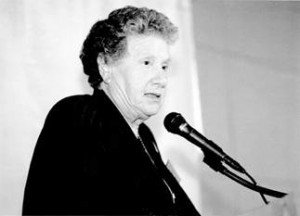
Marilyn Gittell
Activism and good scholarship are intertwined. The premise that activism distracts from scholarship is based on myth not truth and reality. The struggle to transform the conditions of life among oppressed people and build a better, more just, equitable and humane world is an extraordinarily complex task, which requires the highest level of scholarship combined with struggles down-on-the-ground. The great scholar-activists, such as W.E.B. Du Bois, Oliver Cox, Cedric Robinson, Cornel West, Mary Berry, Angela Davis, Marilyn Gittell, Ira Harkavy and Lee Benson understood this. They understood that connecting activism to scholarship was out best hope for solving the core problems facing blacks and other oppressed people, as well as transforming the United States into a people-centric society based on racial, social, economic, political, and cultural justice.
These activist-scholars also understood that knowledge, alone, is not enough. As Frederick Douglass said, “Without struggle, there is no progress. There never has and there never will be.” And this is exactly why scholarship must be linked to activism. So, my advice to the young scholar-activist is to become the best scholar you can be and find creative and innovative ways to link that scholarship to the quest to bring about social change. Thus, the young scholar-activist must embrace the Douglass credo, “Without struggle, there is no progress.”
Paladino has his say on race at ‘Blackness Project’ forum – then vows to listen
Re-post from The Buffalo News
Carl Paladino said his piece during a forum on race Friday at the Burchfield-Penney Art Center.
But he chose to listen more, instead.
The former Buffalo School Board member, founder of Ellicott Development and past gubernatorial candidate was part of a seven-person panel that talked before some 200 people about America’s long and complicated history with race, following a screening of “The Blackness Project,” a new documentary by Buffalo filmmaker Korey Green.
The feature-length film offered a variety of thoughts on culture and race from a local African-American perspective.
The film, which was a 2 1/2-year long project, was inspired by a 2014 film called “The Whiteness Project,” that explored some Buffalonians’ takes on race, discrimination and racism.
“You are so important to this community, all parts of this community,” Paladino said, of the filmmaker.
“You’ve illustrated with this piece here, this wonderful piece that showed the many faces of an issue that is a dilemma for all, everybody,” Paladino said.
“That listening showed us where you come from, that maybe we should listen a little bit more instead of talking. We tend to talk in the moment,” Paladino said.
“We tend to talk about a brutal situation of a policeman shooting a kid, and you showed it. And there was an immediate reaction to it. And then there’s reality. That little girl, she said that she doesn’t believe in victimhood, but we talk victimhood. How many people said they don’t believe in hate? But we talk hate. We teach black history in our schools. Why? Why do we have to teach black history. Why don’t we teach American history?” Paladino said at one point.
Paladino has been a lightning rod for frank discussions of race in Western New York, including in the aftermath of an interview he gave to a local publication which contained inflammatory remarks about the Obamas.
“Race and racism is not some mistake that they made. Race and racism was invented in the very fabric of the country,” said Dr. Henry Louis Taylor, a faculty member in urban and regional planning at the University at Buffalo.
“We could not know the United States as it exists today without slaves. Without slavery, there would be no United States. Slavery was a huge industry that built this country, and cotton was the primary product. Following slavery, it was necessary to again rely on black labor,” said Taylor.
“Race is inescapably linked to the economy. It’s not something related to how I feel or how I love you,” Taylor said.
“We clearly understand what we want to do with race, because it is connected to the very ways in which we do things,” he said.
Larry Quinn, a Buffalo School Board member and panel member, recognized that discrimination exists, but said he had trouble with other aspects of the issue.
“I don’t see the United States or even our local governments – yes, the southern government up until maybe recently – having a built-in mission of discrimination. I don’t see it anymore in this country. I think if we’re going to get past this, I think we have to get past the idea that there is a force in the country that wants to subjugate you,” said Quinn.
Paladino at the session addressed why he served on the School Board.
“I joined the Buffalo Board of Education for only one reason, because I got fed up with the leadership that I was seeing in charge of making decisions and doing the same thing over and over again and denying thousands and thousands of unfortunate city kids trapped in a municipal system that doesn’t work,” Paladino said.
Freedom Wall honors past and present African American leaders
Re-post from Wivb News
BUFFALO, N.Y. (WIVB) — Four Buffalo artists are bringing new life to Buffalo’s east side, honoring 28 civil rights leaders.
On Sunday, the Freedom Wall at the northern entrance to the Michigan Street African American Heritage Corridor was unveiled.
Its finally finished after about 7 months and a big crowd gathered to celebrate Sunday.
The faces in the mural are a mix of national and local leaders.
The Albright Knox says the mural is an opportunity to teach American history both past and present.
“This wall is about the education of the African-American people and the people of this city and nation. This is about attempting to understand the history of African Americans and their fight for liberation and freedom,” said Dr. Henry Louis, professor at the University at Buffalo.
You can check it out at the corner of Michigan Avenue and East Ferry.
Buffalo Vows to Set Aside Land for Nonprofit Community Land Trust
Re-Post From Non-Profit Quarterly
It is the product of more than a decade of community organizing, but residents in east Buffalo’s historic Fruit Belt neighborhood cheered when Common Council President Darius Pridgen announced on his radio program last Friday that the “City administration [will start] setting aside land…for the first land trust in the Fruit Belt.”
Pridgen elaborated that the “land trust means those lots would stay in the hands of working class and low-income people. So, whatever the community land trust builds there, as far as housing, for 99 years it cannot be transferred to wealthy people. It cannot be sold to wealthy people.”
As WGRZ reports, “The folks who live in the Fruit Belt neighborhood, east of the thriving Buffalo Niagara Medical Campus, worry that soaring property values are forcing people out who can’t afford to pay increased rent or property taxes.” The land trust provides an avenue to protect residents by creating a nonprofit, governed by a community board, that holds title to the land and provides affordable housing to residents.
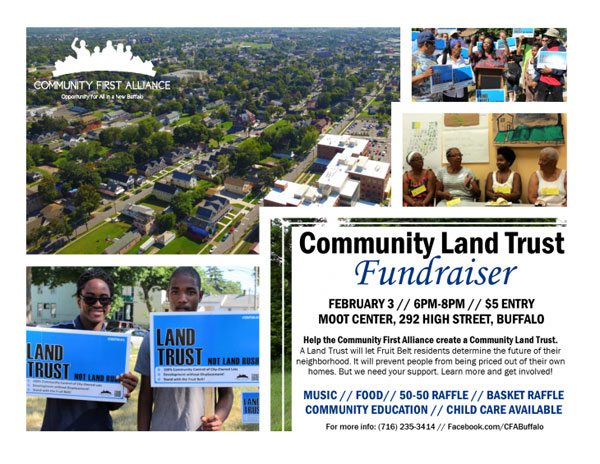
A 2016 policy brief from the nonprofit Partnership for the Public Good made the business case for the community land trust, which helped spur city action. The study estimates that “53 percent of residents spent over 30 percent of their income on housing” in a neighborhood where, as of 2014, poverty remains a high 42 percent. The city holds title to more than 200 vacant lots in the neighborhood—vacant lots that, if transferred to the community land trust, could help existing residents remain in the community and reduce their housing cost burdens. Pridgen’s announcement means that at least some of these 200 lots will be transferred to the trust.
“I’m terribly excited,” says Annette Lott, treasurer of the nonprofit Fruit Belt Community Land Trust. The land trust ensures long-term affordability; in exchange for signing a purchase agreement at a below-market price, the buyer agrees to accept a lower price at sale, thereby ensuring that the housing remains available at below-market prices for future generations.
Effectively, the land trust provides housing that serves as an intermediate rung between renting and owning. The stewardship of the community-based nonprofit also allows for residents to guide long-term planning. Another benefit of this structure is that the below-market prices help ensure that the land trust homebuyer does not get overextended, which is one reason why foreclosure rates on land trust homes are dramatically lower—about one eighth as high—than market-rate homes.
As we have covered in NPQ, the idea of a community land trust—first used in the US as a mechanism to protect rural lands for Black farmers in the late 1960s in Albany, Georgia—has gained ground as a tool for cities seeking to preserve housing affordability for low-income residents as wealthier, often whiter, residents move in, frequently pushing residents of color out into suburban areas—reversing what had been the opposite pattern of previous decades.
Buffalo joins a growing number of cities that are pursuing land trust solutions. Others acting in the past year include Washington, D.C., New York City, Pittsburgh, and Baltimore.
The Fruit Belt itself provides “a classic tale of how urban policies have destabilized the African American community and robbed low to moderate‐income blacks of the wealth producing power of homeownership,” notes Henry Louis Taylor, Jr., an urban studies professor and director of the Center for Urban Studies of the University at Buffalo. The Fruit Belt was originally German, but, starting in the 1950s, white flight and Black in-migration changed that dramatically.
Taylor explains that,
Two interactive factors triggered black migration to the Fruit Belt…. First, the building of the Kensington Expressway in 1960 split the Fruit Belt and separated most of it from the lower East Side and devalued property.… Second, during the 1950s, a massive urban renewal project on the lower East Side destroyed about 30 city blocks and decimated the historic center of Black Buffalo. Many of those displaced…settled in the Fruit Belt.
The number of Blacks peaked at 9,125 in 1970, but neighborhood population would fall by more than two thirds by 2000. (As of 2013, the neighborhood had 2,670 residents, 83 percent of whom are Black). As Taylor details, “Between 1970 and 2000, the proportion of Fruit Belt residents living in poverty increased from 28 percent to 45 percent.” A key factor behind neighborhood decline, Taylor adds, was city-backed housing demolition that pushed residents out to facilitate the expansion of the Buffalo Niagara Medical Campus (BNMC).
Ironically, now BMNC is driving a revival that threatens to displace residents again, only this time through rising prices. Lott notes that current “rents in the Fruit Belt are $1,400 in some places…much too high for individuals for low income and poor people to be able to afford.”
The community land trust that Lott participates in is part of a broader effort to make sure that as the Fruit Belt neighborhood rebounds, a new wave of resident displacement is prevented. Involving a dozen local neighborhood groups and known as the Community First Alliance, the land trust is part of a broader strategy that includes support for local business development and the development of work pipelines to help residents obtain jobs at BMNC.—Steve Dubb
UB’s Black Faculty: Dwindling and Isolated
Re-post from The Spectrum
Omar David has never had a black professor.
Most UB students haven’t.
UB’s Equity, Diversity and Inclusion website says the university prides itself on the diversity of its community. But black students and black faculty feel left out of the diversity conversation.
For years, UB has struggled to bring in minority faculty. That is partially because black professors are demanding higher salaries because there are so few. UB does not have the money to compete with larger universities and offer higher pay.
UB also struggles to bring in black faculty because the few who are here feel undervalued.
And many who start here, leave, because they felt isolated. Often they were the only black people working in their departments. Or they felt the university didn’t put enough money, time or resources into black studies.
And students – many of whom come to UB for its diverse student population – feel discouraged because almost none of their professors look like them.
In a city as diverse as Buffalo and at a time when racial tensions are exploding across the nation, students say they expect more racial equality from UB. Black people make up 38.6 percent of the Buffalo population, according to the U.S. Census. Yet as of fall 2015, out of 2,513 faculty at UB, only 98 were black, according to UB Spokesperson John Della Contrada. That’s 3.8 percent. Out of those 98, only 41 were tenure track, which brings the total down to 1.6 percent.
David, a senior biological sciences major, feels having a black professor would have been inspirational. He thinks he would have aspired for greater leadership roles at UB if he had seen someone who looked like him and shared the same struggles achieve success.
But David never got his wish.
In the past 10 years, black faculty have continued to leave the university. Data from Teresa Miller, vice provost for Equity and Inclusion shows black faculty continued to decline from 2005 to 2015.
Miller has spent the last three years trying to recruit faculty of color. Faculty acknowledge Miller has worked hard, but say the university as a whole needs to take more responsibility in hiring black faculty.
Della Contrada said the university employs 202 state-supported staff “the second-largest race/ethnicity group, after whites for staff.”
“So that’s basically janitors and Campus Dining food workers…” David said. “That doesn’t make the lack of black faculty any better, if anything that makes it worse because it’s just placing more black people in more marginalized menial work.”

Addressing black issues
The number of black faculty at UB is “beyond disgraceful,” said urban and regional planning professor Henry Taylor.
Taylor said the university’s failure to do something about the lack of black faculty is a form of systemic racism. Such failure, he said “under develops” the black community by not allowing the African American studies program to evolve.
“The African American people were people that this country had a special responsibility to in the sense that they had been brought here as slaves, stolen from their country, imprisoned on their homeland and brought here to work,” Taylor said. “The university has a huge responsibility to [us] and I think the university has failed in a very miserable way.”
Taylor said black people get nothing, “absolutely zero” for suffering as a result of slavery.
When Taylor first came to UB in 1987, one of the university’s priorities was addressing issues black people faced, he said.
He was hired at the university specifically to help design a public service infrastructure that would connect the university to a larger urban community. He addressed these issues with then-UB President William Greiner and visited his house so often people thought he was Greiner’s relative.
Taylor also helped redevelop the University Plaza area, located across from South Campus.
He said administrators slowly began to feel race was too divisive of an issue and thought it needed to be minimized. Taylor said he was among the minority who felt race needed to be grappled with, talked about and placed at the forefront of university discussions.
Taylor said the university often boasts about its diversity by placing minority groups like Asians in the forefront so the campus looks diverse.
“There is no diversity because the university no longer has the commitment to dealing with the exploitation and oppression of black people,” Taylor said. “In the old days, we used to call that window dressing, when you get enough black people around just to say ‘there they are,’ but that’s not authentic and that’s not legitimate.”
Lack of blacks vs Buffalo demographics.
Blacks are the second-largest ethnic group in Buffalo, second only to whites, who hold a 50.4 percent majority.
“We live in a city that’s close to 50 percent black and Latinx, and yet we have not a single major initiative that’s focused on that,” Taylor said. “We have a Global Health Equity Institute that doesn’t even have a focus on the African American population.”
Taylor said despite the high concentration of blacks, the university continues to prioritize addressing refugee and immigrant issues over black issues.
“And my response is ‘seriously?’ Why don’t you try moving the health equity needle in Buffalo? And why would you ever focus on the refugee population and not have a focus on the African American population whose health indicators are horrendous? Who face an enormous level of inequities in comparison to whites and they don’t even make your cut? Seriously people?” he said.
Taylor said there has been a dramatic decline in tenure-track black faculty in the past 25-30 years and the university continues to lose the small number of tenure-track faculty embedded on the campus.
“When you talk about faculty… the only thing that counts in a really meaningful way – and I don’t wanna disparage anyone – are those individuals who are full time and on tenure track because unless you’re full time and on tenure-track lines, you’re not providing instructional activities that are leading to degrees,” he said.
Taylor said the U.S. has a responsibility to create opportunities for black people to achieve their larger freedoms.
These larger freedoms, he said, aren’t the same as small freedoms like the right to vote, the right to speak or the right of social mobility.
“The larger freedoms are our human rights. The right to a high-quality education. The right to an employment that allows us to earn a livable wage. The right to live in safe and wholesome neighborhoods. The right to have high quality health care. The right to have nutritious food. These are our human rights. And education is an anchor human right. So that is the right that we have not yet been given or granted,” he said.
Faculty members who are not of color like transnational studies Professor Carl Nightingale agree that the lack of black faculty is a problem.
Nightingale said the university hasn’t done an adequate job of retaining faculty of color and the transnational studies department continues to lose more minority faculty. He said retaining more faculty of color should be a “major institutional priority.”
Recruitment of black faculty
The desperate need for the university to find a solution that brings in more faculty of color is an issue that keeps Teresa Miller up at night.
She has a daughter who’s a freshman in college and she evaluates diversity through her eyes. She worries that UB students of color don’t have enough professors who look like them.
As a black woman, in her role, she says people expect her to have a certain level of insight on issues facing people of color. They expect her to bring her own racial experiences to the table to help increase the university’s diversity.
She doesn’t think the resolve to hire black faculty has wavered, but UB’s strategy to hire them has changed in the last 30 years in light of widespread criticisms of initiatives like affirmative action.
Because of this, she says the university can’t use race as the sole criteria of hiring.
“The legal definition of affirmative action changed in the last 30 years, so there’s been an attack on the way race gets used in the hiring process so we’ve had to change the hiring process of people of color,” she said.
The university responded by changing its strategies for minority faculty recruitment.
Miller carved out a 10-step “strategic plan” to hire more culturally diverse staff.
The plan encourages the university to advertise for positions in areas with more people of color to gain more diverse applicant pools and take part in minority cluster hiring. It advises to reduce hiring barriers against people of color by training faculty to eliminate implicit biases.
Miller also regularly goes to conferences and sees how other universities hire faculty of color, and she carves out a plan based on her discoveries.
But many faculty of color drop out of these searches early, Miller said.
Other black faculty don’t want to come to the university because they don’t see people who look like them on campus.
Miller said colleges like Columbia University, Yale University or University of Michigan invest $30 to $50 million in recruiting faculty of color.
UB doesn’t have that money.
“Underrepresented minority faculty are demanding much higher starting salaries because there are fewer of them so it’s scarce and we often compete with schools that can pay a lot more,” Miller said.
While the university struggles to recruit blacks, Miller said the university continues to draw international, non-black faculty from across the globe in management, engineering and the sciences.
“I think the demographics of the nation and the state have changed over the last 30 years so the diversity of the non-white population has become greater in New York State than the rest of the nation,” said Craig Abbey, associate vice president and director of Institutional Analysis.
Miller doesn’t agree that the university’s commitment to hiring diverse faculty has shifted; she says the commitment has only gotten stronger.
“I don’t agree that our commitment is much less today, I think our commitment has grown. This office being created and being staffed and built out. That’s a commitment, it’s a commitment of resources to really make a difference,” she said.
How lack of black faculty affects students
The lack of diversity isn’t just limited to faculty; it also extends to the student body. Out of 28,444 UB students, only 1,881 students are black.
Students of color yearn to see people who look like them teaching in the classroom. Many students said they grew used to being the only black people in their classes, but they found it puzzling that many African American studies professors at UB were white.
Miller went to college at Duke University in North Carolina and said she only had one black professor.
“I say to people all the time, students are our clients and they want to see people who can relate to their experiences who are role models and mentors and it’s absolutely important,” Miller said.
While Taylor agrees a black professor could bring a unique perspective that a white professor couldn’t, he says the color of people’s skin doesn’t qualify them to teach black studies.
“I’m a firm believer based on my experiences that black faces in high places don’t mean a thing unless their ideologies and viewpoints are emphasizing change,” he said.
Taylor said there are some black people he wouldn’t want anywhere near UB students and within the black community there can be an ideological divide.
“There are some black people that I know through these buildings that I wouldn’t want anywhere near our black students and I certainly wouldn’t want them trying to teach them anything about the black experience,” he said.
He’s come across white scholars who have deep understandings of that experience and he says he would be happy to call them colleagues.
Taylor feels the university is responsible for finding and attracting “outstanding black scholars” but feels UB has never done that for its black studies program. He feels UB’s black studies program is one of the weakest in the country.
Black faculty departures
Lakisha Simmons, a former global gender studies professor, left UB to teach at the University of Michigan earlier this year. She found it difficult to teach in a department where she was the only black woman.
When she first came to UB, she loved that there was a core group of young faculty of color and she became very close with them and built “a strong community.”
That strong community of faculty of color dwindled over the six years she taught at the university.
“Things got really difficult for me a couple of years ago when the fate of global gender studies and African American studies seemed uncertain and I feel like at that time, there were messages that those studies were not valued,” Simmons said. “I feel like things changed with the current dean and Provost Miller but at that point, it was already almost too late. And if you feel that what you do is unimportant to the university for a certain number of years… it hurts your morale.”
At University of Michigan, she says black faculty are more valued because more money is invested in programs like black studies and global gender studies.
Another reason Simmons left UB was because black studies, global gender studies and African studies didn’t have their own department and were under the transnational studies department.
“It’s never perfect because there’s bias against people of color and women in the workplace… it’s not limited to the university. In the current political climate, where you go to school does make a difference but it’s difficult wherever you are,” she said. “It’s difficult to be a black person working wherever you are.”
Finding solutions
Simmons believes the university has to make a “huge push” for cluster hires in order to rectify the issue of lack of black faculty.
Miller said she is currently working with College of Arts and Sciences Dean Robin Schulze to cluster hire faculty of color.
The Spectrum reached out to Schulze three weeks ago, but her chief of staff said she could not fit an interview into her busy schedule.
Simmons said she sees Miller and many deans support recruiting black faculty, but she still doesn’t know if there’s urgency across the university, particularly from President Satish Tripathi and Provost Charles Zukoski.
“I think it’s getting to a point that it’s going to take drastic action just to get back to where UB was five years ago so there has to be some kind of targeted hire,” Simmons said. “Either you’re a school that’s recruiting faculty or you’re one that’s losing them because there are only so many professors of color.”
Taylor said he gets offers to teach at different universities often, but chooses to stay at UB.
“I’m not trying to run away from problems, I’m trying to solve them,” Taylor said.
Ashley Inkumsah is the co-senior news editor and can be reached at ashley.inkumsah@ubspectrum.com
UB’s Silverman Elected Chair of Urban Affairs Association Governing Board
Re-Post From UB News Center
BUFFALO, N.Y. – Robert Silverman, professor of urban planning at the University at Buffalo, has been elected chair of the Urban Affairs Association (UAA) Governing Board. UAA is the international professional organization for urban scholars, researchers and public service professionals.
UAA includes more than 700 institutional, individual and student members from colleges and universities throughout North America, South America, Europe, Africa, Australia and Asia.
UAA’s Governing Board comprises 15 members who are nominated and elected by members of the association to serve three-year terms. Silverman is entering his second term on the Governing Board and first as chair.
He is the first UB professor to be elected board chair. Three other UB faculty members have served previously on the UAA board: Kathryn Foster (2002-2005), Henry Louis Taylor (1995-1999) and William Lobbins (1981-82).
“UAA is fortunate to have Dr. Silverman play this important leadership role. He brings to the position years of experience within the organization, and his extensive knowledge as an accomplished urban scholar,” said UAA Executive Director Margaret Wilder.
Among its activities, UAA sponsors the Journal of Urban Affairs, a refereed annual journal that publishes manuscripts related to urban research and policy analysis of interest to both scholars and practitioners.
The Urban Affairs Association also holds an international conference each spring in an urban center. The conference program features both topics of institutional concern and those related to urban issues from local, national and cross-national perspectives.
“It was an honor being elected chair of the Governing Board, and it is exciting to serve in this role during the year that the UAA conference is being held in Toronto, which is one of the most dynamic cities in North America and our neighbor to the north,” said Silverman.
The UAA was founded in Boston in 1969 as the Council of University Institutes for Urban Affairs. The name was changed to the Urban Affairs Association in 1981.
Silverman’s current research projects include studies of non-profit organizations, anchor institutions, inner-city schools and fair housing. Silverman is interviewed regularly by media outlets, including The Christian Science Monitor, Next City, The New York Times and The Washington Post, for his insight on fair housing policies and practices.
Officials bristle at new report’s claims of ‘transit deserts’ in upstate N.Y.
Re-post from The Buffalo News
Large numbers of people live in “transit deserts” in Buffalo and other upstate cities, where ride-hailing services could fill gaps in the public-transit network because carless residents must walk too far or wait too long for a bus, according to a report that Uber and the state conference of the NAACP plan to unveil Monday.
They are releasing the report as ride-hailing services – more commonly known as ride-sharing services – wage a multimillion-dollar lobbying campaign to operate in upstate New York. Uber and the NAACP argue that the ban on ride-hailing holds back the economic redevelopment taking place in the downtowns of Buffalo, Rochester, Syracuse and Albany, where businesses and residents are relocating.
But local public transit officials dispute many of the report’s claims, and cab companies point out that they serve the areas in question.
“We really vehemently deny their assertions,” said C. Douglas Hartmayer, spokesman for the Niagara Frontier Transportation Authority.
Advertisement
The document contends that census data shows tens of thousands of people across the four regions don’t have cars, and it focuses on sections of each city where it says residents must walk too far or wait too long for a bus to take them where they want to go. In Buffalo, Uber and the NAACP flag one South Buffalo neighborhood and one Broadway-Fillmore neighborhood.
“This report confirms the sad truth that inadequate public transportation options have created a barrier preventing low-income communities from enjoying the benefits of a growing economy in upstate New York,” said Hazel Dukes, president of the state conference of the National Association for the Advancement of Colored People, in a prepared statement.
But Uber drivers would not be willing to to travel to the “transit deserts” highlighted in the report, said Henry Louis Taylor, Jr., director of the University at Buffalo’s Center for Urban Studies.
“The whole world of Uber is really designed for the millennial class. It’s not designed for poor people,” said Taylor, whose son drives for Uber in Chicago.
And John Tomassi, president of the Upstate Transportation Association, the lobbying arm for the taxi industry, dismissed the idea of unserved “transit deserts.”
“The taxis do cover the area now,” Tomassi said. He also said Uber drivers are unlikely to drive into the communities identified in the report, whereas taxi drivers are required to pick up fares wherever they call from.
The NFTA said no transit system is set up to provide door-to-door service. Officials, though, concede buses don’t run as often to the farthest-flung suburban communities or deep into the night. But the agency defended service levels in Buffalo and challenged the report’s motivations.
“I think they’re trying to put pressure on the politicians to vote ride-sharing to the sections of our state that don’t presently have it and are trying to make the case, in our opinion unfairly, using public transportation as a wedge,” said Hartmayer, the NFTA spokesman. “And, again, I think it’s misguided and self-serving.”
The joint Uber-NAACP report is part of an aggressive campaign waged by Uber and Lfyt, its main competitor, to open the rest of the state outside New York City to ride-hailing.
Gov. Andrew M. Cuomo has come out in favor of expanding ride-hailing into upstate and Long Island, as have the Senate and the Assembly, but all have backed slightly different approaches. It’s not clear whether the parties will reach a compromise as part of this month’s budget negotiations, or before the end of the legislative session this summer.
If Uber gained the NAACP as an ally, the company said it did not buy the support of the civil-rights organization. The association did not receive a contribution or donation in return for participating in the report, said Alix Anfang, an Uber spokeswoman.
The report cites several reasons why Buffalo needs “innovative transit alternatives,” such as ride-hailing.
First, its downtown is thriving, with more people working there, particularly on the burgeoning Buffalo Niagara Medical Campus, and living there. The NFTA offers limited, infrequent service at night, the report contends.
Next, Buffalo and its suburbs cover 52 square miles, according to the report, and census data from 2014 shows 14 percent of workers didn’t have a vehicle to transport them to their jobs.
The report drills down to a house located at 83 Hilton St., near Buffalo’s Central Terminal, that it says is located at least an 8-minute walk from the closest bus stop, on Broadway.
The NFTA, however, says bus service in that area is “robust” and that a bus regularly travels on Fillmore Avenue.
In South Buffalo, Uber and the NAACP lament that buses along the No. 16 route on South Park Avenue and the No. 14 that serves Abbott Road – “Abbot” in the report – are spaced an hour apart weekday evenings and as much as 90 minutes apart on weekends.
Further, Uber and the NAACP say, ride-hailing would help cut down on drunk-driving fatalities. Asked to back up the claim, Anfang shared a study by researchers at Temple University that found a 3.6 percent to 5.6 percent decline in drunk-driving deaths after UberX, the service’s low-cost option, was introduced in California between 2009 and 2014.
Gary Bennett, senior transportation planner for Metro bus and rail for the NFTA, said the agency views ride-hailing as a complement to public transit.
Bennett said there are suburban and rural sections of the system where demand doesn’t merit the same number of bus stops, or the frequency of buses, as there are in Buffalo. But he said the report is wrong to flag Hilton Street, for example, as a “transit desert.”
“The service in that area is quite robust,” Bennett said, pointing to the No. 23 bus that serves Fillmore Avenue, though the report only looked at bus lines heading to and from downtown.
Would Uber drivers even serve the neighborhoods featured in the report?
Asked for data on where Uber calls come from, Anfang said 40 percent of calls in New York City originate from one of the four outer boroughs, and 60 percent start in Manhattan. In comparison, she said, 92 percent of taxi trips in New York City are in Manhattan.
However, Uber drivers only work at ideal times and in ideal neighborhoods, said Taylor, director of UB’s Center for Urban Studies.
He said he has a better-than-average insight into how Uber works because his son, Chad, works as a driver in Chicago to make money while he launches his hip-hop group.
“You’ve got to learn where the hotspots are, because they’re going to go only to the hotspots. And you have to learn where not to go because you don’t make much money,” Taylor said.
How Trump’s Budget Would Impact Cities’ Poorest Residents
One of the agencies that does the most work in cities is the Department of Housing and Urban Development (HUD), which owns and maintains public-housing complexes across America, provides vouchers for low-income people to live in private housing, and doles out grants that help nonprofits and developers invest in essential parts of neighborhoods, such as apartments and parks. The budget proposes a $6.2 billion cut from HUD next year, which would represent a 13.2 percent decrease from the level of funding for this year.
That OMB budget also indicated funding cuts for public-housing agencies’ maintenance and repair work, Zaterman said. This will be a particular obstacle to agencies like the New York City Housing Authority (NYCHA), which gets $2 billion of its $3.2 billion operating budget from HUD and currently has $17.1 billion in unmet capital needs. NYCHA told The Wall Street Journal earlier this month that it could see $150 million in cuts from HUD. “It’s a pretty direct message I think that says we are no longer investing in this public portfolio—we are walking away from this,” Zaterman said. “The cumulative effect on low-income people is going to be devastating.”
But the document indicates where the Trump administration’s priorities lie. And they don’t seem to include many programs that have helped cities’ poorest residents.
WNY’s economic resurgence depends on racial equity, report finds
Re-Post From The Buffalo News
The big players in Western New York must address racial disparities if they want the region’s economic renaissance to continue.
Closing the gap of racial inequity will not only strengthen neighborhoods and schools – it will create more money and more jobs.
Those findings are among those in a new report, released Tuesday by a roundtable group formed by the Community Foundation for Greater Buffalo.
The commitment to tackling this complex issue would result in a concrete payoff, according to the report released by the Greater Buffalo Racial Equity Roundtable.
“This is not just the right thing to do,” said Community Foundation President Clotilde Perez-Bode Dedecker. “It’s the smart thing to do.”
Millions spent on social services, health care and prisons could be redirected to job growth, education and recreation.
[Key points from Racial Equity Roundtable report]
Property taxes would grow.
Businesses would have a richer, employable workforce.
The report, titled “The Racial Equity Dividend: Buffalo’s Great Opportunity,” is grounded in data, showing what is as well as what could be. It comes as a challenge to influential players of this community. It doesn’t offer answers, but instead offers motivation for finding solutions that work.
Alphonso O’Neil-White, chairman of the Racial Equity Roundtable, said community activists and nonprofit groups have long criticized the many racial inequities that have plagued the city and region.
“How many rooms have you sat in where people have raised issues, concerns and problems, and there’s nobody in the room that can do anything about it?” he said.
The point of the roundtable is to bring together the region’s top employers, as well as elected and community leaders, and those who deal with the consequences of racial inequity every day.
More than 30 people – representing government, private businesses, nonprofit agencies, educational institutions and the religious community – make up the roundtable.
That’s the only kind of partnership that can yield the type of sweeping changes this community needs, according to O’Neil-White and other community leaders.
“When we look back 10 years from now, Buffalo is going to be a model for how we deal with equity issues,” said Samuel L. Radford III, a parent advocate for the Buffalo schools. “This is a top-down, bottom-up movement.”
Those who have championed the issue of racial inequity say the Buffalo Niagara region is an example of how a divided region brings everybody down.
“It’s a challenge at a moment of time when the nation is torn between two conflicting visions of the future,” said University at Buffalo professor Henry Louis Taylor Jr., director of the Center for Urban Studies. “And in Buffalo, we are torn with our vision of the future. We will build a just city, or will we build the unjust latte city, the city for upwardly mobile white folks. That’s the choice.”
Talking about race and institutional racism is a tricky business.
Business leaders sat alongside government administrators, nonprofit and religious leaders a few weeks ago, trying to parse the difference between the words “equity” and “equality,” between “inclusion” and “diversity.”
“Equality” means everybody gets the same thing, explained the trainer, Paula Dressel. “Equity” refers to situational fairness.
She used the example of three children of different heights trying to look over a wall to see a baseball game. The tallest kid could see the game fine. The second tallest kid needed a small box to stand on in order to see over the wall. And the shortest kid needed a much bigger box to stand on to see over the wall.
The box represents “equity,” said Dressel, who is vice president of Just Partners, Inc.
“Our nation uses equality as the anchor for our narrative,” Dressel said. “Equality only works for everybody when we have equity.”
The training session, hosted as part of the Racial Equity Roundtable, represents the first step in tackling the issue of racial disparities in this region. It gets all the players understanding a common language when it comes to race and racial inequity. It also gives participants a way of understanding what “institutional racism” means and how it works.
So far, 70 organizations, businesses, nonprofits and government agencies have participated in the training sessions, as well as more advanced ones designed to prepare them for the harder work of addressing racial inequities in their own organizations, Dedecker said.
“When leaders of systems commit to this change, you’re going to see things happen,” she said.
The model has already seen success in Say Yes to Education, which came to Buffalo five years ago. Aside from offering all Buffalo public school students an opportunity for fully paid college tuition, it also engaged all stakeholders to provide student and family support services to every child that needs it.
Now, the school district is seeing double-digit increases in the percentage of minority students enrolling in college, O’Neil-White said.
The roundtable group, formed with assistance from the Community Foundation 18 months ago, is built similarly to the Say Yes model.
“We didn’t come to this group of people and say, ‘We’ve got the answers, we’ve got the solutions,’ ” Dedecker said. “These are all multidimensional problems, overlapping, complex issues that we face.”
Taylor, at UB, said the report is a challenge for the region’s public and private leaders to step up.
“You can run, but you can’t hide from this truth,” he said. “It comes back to, what are you going to do? The policy makers, the heads of the corporations, they have the power.”
More information about the work of the roundtable can be found at www.racialequitybuffalo.org.
What would $6 billion in budget cuts mean for public housing?
Re-post from The Christian Science Monitor
Funding from the Department of Housing and Urban Development helps reduce homelessness, fund infrastructure, and enhance community services, data suggest. But how would cuts to HUD’s budget affect the families and communities that use those services?
Preliminary budget documents obtained by The Washington Post and others seem to suggest that HUD is facing approximately $6 billion in budget cuts for the next fiscal year, which starts in October. Around $4 billion worth of cuts would come from community development grants that provide facilities such as gyms and community theaters as well as funding local services. The rest of the cuts would come out of public housing programs. Assistance for the elderly, veterans, and Native Americans is among the hardest hit.
All in all, the proposed cuts would shrink HUD’s budget by around 14 percent, though HUD Secretary Ben Carson reassured staff in an email that “starting numbers are rarely final numbers.”
For advocates, budget cuts are a way to trim the budget deficit and reorient government spending toward other priorities, such as national defense. Fair housing advocates, however, see the proposed cuts as the latest in a series of cost-reduction measures that have stretched the beleaguered agency beyond its capacity. They emphasize how valuable these programs are for families and communities, and suggest the importance of maintaining that value.
“When low-income families with kids … move into lower-poverty, safer neighborhoods with better schools, it has a pretty significant impact on long-term outcomes for kids,” says Douglas Rice, a senior policy analyst at the Center on Budget and Policy Priorities, in a phone interview with The Christian Science Monitor.
Children are more likely to attend college, much less likely to become single parents, and enjoy higher salaries when they start work, Mr. Rice says. By some alternative census measures looking at the impact of in-kind benefits, he adds, federal rental assistance helps to lift 4.1 million people – including 1.4 million children – out of poverty each year.
But in an era of tight budgets and budget deficits, HUD has been underfunded “for a number of years,” says Robert Silverman, a professor of urban and regional planning at the University of Buffalo, N.Y., in a phone interview. Estimates suggest that just 1 in 4 eligible people are currently receiving HUD rental assistance because of funding limitations.
The Trump administration has also stated that it plans to find $54 billion in its budget proposal for increased defense spending, meaning many of these cuts are likely to make it into the White House’s proposal, Rice says. He estimates that HUD will cut above and beyond the estimated $6 billion, potentially reaching a total of $7.7 billion in cuts.
For advocates, the question is how to maintain that positive impact of HUD programs in the face of further funding reductions. Since the Nixon era, presidents have experimented with welfare reform and privatization, writes Holona Ochs, a political science professor at Lehigh University in Bethlehem, Pa., in an email. Could private corporations and philanthropic organizations help bridge the gap now?
“To the scale of this, the answer is no,” says Marc Morial, president of the National Urban League, in a phone interview. “Social organizations already stepped up to the plate.” In many cases, these organizations are already working at the limits of their own capacity, he adds.
“Over-reliance on charity leaves tremendous gaps in services,” Professor Ochs, the author of “Privatizing the Polity,” agrees. “Simply put, we cannot meet need by relying solely on charity.”
And if the Trump administration is hoping to increase public-private partnerships, cutting community development grants like CDBG and HOME may be counterproductive, explains Jerry Anthony, associate professor at the University of Iowa School of Urban and Regional Planning. The funds for these programs are leveraged to bring in more money from the private sector.
“These programs are crucial to local economy development,” he says, explaining that every federal dollar invested in these programs can bring in three or more dollars.
“Localities have a lot of flexibility in how those funds are used,” he adds, noting that they have been used to build community theaters, preserve historic buildings, and support parks, among other initiatives.
But if the private sector cannot provide a complete solution to the challenge of maintaining funding, it might be able to “soften the blow” by growing an existing pilot program, Professor Silverman indicates.
Since federal housing often lacks the money to do maintenance, many buildings have fallen into disrepair, he explains. That amounts to tens of billions of dollars in repairs, a 2010 HUD report found, making federal housing a costly option. Instead, as HUD has moved toward a voucher program that allows families to find their own housing on the market, private developers can get tax credits and loans to rehabilitate existing developments.
With private developers doing the work, this approach “doesn’t really have a big revenue impact” for HUD, Silverman explains. And companies are happy to do it because they know that tenants with rental vouchers will occupy the building when it is rehabilitated, giving them a secure revenue stream.
Ultimately, many observers indicate, maintaining these social benefits may hinge on increasing, rather than decreasing, HUD investment. Even if funding was held steady, 200,000 households could still be affected, Rice indicates, thanks to a combination of rising rent prices and inflation.
And they suggest Congress, which has the final say on the budget, may agree. There has been longtime bipartisan support for many of these programs. Part of that is pragmatic, according to Silverman.
“I wouldn’t imagine that there would be broad-based support in Congress for just cutting the budget drastically,” he says. “Every Congressman has constituents that they’re trying to maintain their level of funding for.”
The White House is expected to release its budget proposal in the next few weeks, after which it will go to Congress for consideration.
2017’s Best State Capitals to Live In
Often perceived as socially drab lawmaking centers, many state capitals actually are thriving hubs of activity and thus some of the most livable places in America. But not all state capitals are created equal. And though 17 of them are the largest cities in their states, the biggest population doesn’t always represent the best quality of life.
So in order to determine what state capitals are worth, WalletHub’s data team compared all 50 across 42 key indicators of affordability, economic strength, quality of education and health, and overall living standards. Our data set ranges from “cost of living” to “K–12 school-system quality” to “number of attractions.” Read on for our findings, expert insight from a panel of researchers and a full description of our methodology.
Main Findings
Best State Capitals
| Overall Rank | City | State Capital Index | ‘Affordability’ Rank | ‘Economic Well-Being’ Rank | ‘Quality of Education & Health’ Rank | ‘Quality of Life’ Rank |
|---|---|---|---|---|---|---|
| 1 | Austin, TX | 64.89 | 9 | 2 | 7 | 16 |
| 2 | Boise, ID | 64.54 | 8 | 14 | 6 | 2 |
| 3 | Bismarck, ND | 64.50 | 3 | 1 | 10 | 23 |
| 4 | Lincoln, NE | 63.79 | 7 | 9 | 3 | 20 |
| 5 | Madison, WI | 62.99 | 27 | 16 | 2 | 8 |
| 6 | Montpelier, VT | 60.86 | 24 | 22 | 5 | 5 |
| 7 | Concord, NH | 60.11 | 5 | 10 | 19 | 25 |
| 8 | Raleigh, NC | 59.92 | 6 | 8 | 17 | 34 |
| 9 | Salt Lake City, UT | 58.97 | 22 | 13 | 11 | 15 |
| 10 | Cheyenne, WY | 58.34 | 1 | 6 | 37 | 37 |
| 11 | Denver, CO | 58.24 | 38 | 5 | 24 | 7 |
| 12 | Juneau, AK | 58.18 | 14 | 7 | 14 | 36 |
| 13 | Olympia, WA | 58.08 | 26 | 35 | 13 | 4 |
| 14 | Pierre, SD | 57.88 | 15 | 42 | 1 | 38 |
| 15 | Columbus, OH | 57.83 | 13 | 20 | 15 | 22 |
| 16 | Des Moines, IA | 57.07 | 11 | 34 | 8 | 29 |
| 17 | Helena, MT | 57.07 | 21 | 17 | 23 | 19 |
| 18 | Nashville, TN | 55.65 | 18 | 3 | 34 | 33 |
| 19 | St. Paul, MN | 55.64 | 33 | 15 | 9 | 27 |
| 20 | Springfield, IL | 55.11 | 4 | 30 | 31 | 39 |
| 21 | Atlanta, GA | 55.06 | 29 | 27 | 28 | 14 |
| 22 | Annapolis, MD | 54.96 | 32 | 31 | 26 | 9 |
| 23 | Jefferson City, MO | 54.83 | 10 | 21 | 36 | 32 |
| 24 | Oklahoma City, OK | 54.61 | 2 | 11 | 40 | 45 |
| 25 | Topeka, KS | 53.52 | 17 | 23 | 27 | 42 |
| 26 | Phoenix, AZ | 52.62 | 23 | 24 | 33 | 28 |
| 27 | Salem, OR | 52.60 | 40 | 19 | 21 | 26 |
| 28 | Santa Fe, NM | 52.23 | 31 | 18 | 43 | 10 |
| 29 | Sacramento, CA | 52.16 | 43 | 32 | 18 | 17 |
| 30 | Albany, NY | 51.25 | 45 | 37 | 16 | 12 |
| 31 | Boston, MA | 51.17 | 48 | 12 | 4 | 11 |
| 32 | Honolulu, HI | 50.68 | 50 | 4 | 12 | 1 |
| 33 | Augusta, ME | 50.52 | 42 | 25 | 29 | 31 |
| 34 | Lansing, MI | 49.93 | 28 | 40 | 32 | 44 |
| 35 | Frankfort, KY | 49.43 | 16 | 28 | 46 | 30 |
| 36 | Columbia, SC | 49.40 | 34 | 47 | 35 | 13 |
| 37 | Tallahassee, FL | 49.12 | 39 | 48 | 22 | 21 |
| 38 | Harrisburg, PA | 49.02 | 41 | 46 | 39 | 3 |
| 39 | Richmond, VA | 48.76 | 35 | 36 | 48 | 6 |
| 40 | Charleston, WV | 48.72 | 12 | 29 | 45 | 47 |
| 41 | Indianapolis, IN | 47.15 | 25 | 38 | 38 | 48 |
| 42 | Dover, DE | 45.84 | 30 | 41 | 41 | 46 |
| 43 | Little Rock, AR | 45.74 | 19 | 26 | 44 | 50 |
| 44 | Providence, RI | 45.34 | 47 | 43 | 25 | 18 |
| 45 | Baton Rouge, LA | 44.81 | 36 | 33 | 49 | 35 |
| 46 | Carson City, NV | 44.64 | 44 | 39 | 42 | 24 |
| 47 | Montgomery, AL | 42.89 | 20 | 44 | 50 | 43 |
| 48 | Trenton, NJ | 42.13 | 46 | 50 | 30 | 41 |
| 49 | Hartford, CT | 40.02 | 49 | 45 | 20 | 40 |
| 50 | Jackson, MS | 39.99 | 37 | 49 | 47 | 49 |

Ask the Experts
Living in a state capital offers many perks, but there are tradeoffs as well. For additional insight, we asked a panel of experts to weigh in with their thoughts on the following key questions:
- What are the benefits and drawbacks to living in a state’s capital city?
- What are the pros and cons of the state’s largest city also serving as its state capital?
- In evaluating the best state capitals to live in, what are the top five indicators?
- How does exempting government buildings from local property taxes affect the fiscal well-being of capital cities?
- Are residents of capital cities more likely to be politically engaged, all else equal?
Methodology
In order to identify the best state capitals to live in, WalletHub’s analysts compared all 50 across four key dimensions: 1) Affordability, 2) Economic Well-Being, 3) Quality of Education & Health and 4) Quality of Life.
We evaluated those dimensions using compiled 42 relevant metrics, which are listed below with their corresponding weights. Each metric was graded on a 100-point scale, with a score of 100 representing the most livable state capital.
We then calculated a “State Capital Index” for each state capital based on its weighted average across all metrics and used the resulting indexes to construct our final ranking.
Affordability – Total Points: 25
- Cost of Living: Double Weight (~10.00 Points)
- Median Household Income: Double Weight (~10.00 Points)
Note: This metric was adjusted for the cost of living. - Housing Costs: Full Weight (~5.00 Points)
Note: This metric was adjusted for the cost of living.
Economic Well-Being – Total Points: 25
- Population Growth: Full Weight (~2.50 Points)
- Income Growth: Full Weight (~2.50 Points)
- Average Credit Score: Full Weight (~1.25 Points)
- Income Inequality: Full Weight (~2.50 Points)
- Debt as a Share of Median Income: Full Weight (~2.50 Points)
- Share of Population Living Below Poverty Level: Full Weight (~2.50 Points)
- Unemployment Rate: Full Weight (~2.50 Points)
- Underemployment Rate: Full Weight (~1.25 Points)
- Foreclosure Rate: Full Weight (~2.50 Points)
- Building-Permit Activity: Full Weight (~2.50 Points)
Note: This metric measures the number of new unit permits pulled per capita. - Share of State & Local Government Employees: Full Weight (~2.50 Points)
Quality of Education & Health – Total Points: 25
- K–12 School-System Quality: Full Weight (~1.79 Points)
Note: This metric is based on data from GreatSchools.org. - Average University Score: Full Weight (~1.79 Points)
Note: This metric is based on data from U.S. News & World Report. - Number of Universities in Top 231: Full Weight (~1.79 Points)
Note: This metric is based on data from U.S. News & World Report. - Share of Adults with at Least a Bachelor’s Degree: Full Weight (~1.79 Points)
Note: “Adults” include the population aged 25 and older. - Share of Population with Health-Insurance Coverage: Full Weight (~1.79 Points)
Note: “Population” includes ages 16 and older. - Quality of Public Hospital System: Full Weight (~1.79 Points)
Note: This metric is based on data from Centers for Medicare & Medicaid Services. - Hospital Beds per Capita: Full Weight (~1.79 Points)
- Premature-Death Rate: Double Weight (~3.57 Points)
Note: This metric measures average years of potential life lost. - Infant-Mortality Rate: Full Weight (~1.79 Points)
- Share of Adults in Good Health: Double Weight (~3.57 Points)
Note: This metric is based on a health survey conducted by the Centers for Disease Control and Prevention. “Good Health” includes responses of “good,” “very good” and “excellent” health. “Adults” include respondents aged 18 and older. - Share of Live Births with Low Birth Weight: Double Weight (~3.57 Points)
Quality of Life – Total Points: 25
- Share of Millennial Newcomers: Full Weight (~1.25 Points)
- Number of Attractions: Full Weight (~1.25 Points)
Note: “Attractions” include, for instance, zoos, museums and theaters. - Nightlife Options per Capita: Full Weight (~1.25 Points)
- Restaurants per Capita: Full Weight (~1.25 Points)
- Bars per Capita: Full Weight (~1.25 Points)
- Coffee Shops per Capita: Full Weight (~1.25 Points)
- Fitness Centers per Capita: Full Weight (~1.25 Points)
- Walkability: Full Weight (~1.25 Points)
Note: This metric is based on data from Walk Score. - Average Commute Time: Full Weight (~1.25 Points)
- Traffic Congestion: Full Weight (~1.25 Points)
Note: This metric measures average annual hours of traffic delays. - Likelihood of Traffic Accidents: Full Weight (~1.25 Points)
Note: This metric measures the likelihood of traffic accidents compared with the U.S. average. - Driving Fatalities per Capita: Full Weight (~1.25 Points)
- Average Weekly Work Hours: Full Weight (~1.25 Points)
- Mildness of Weather: Full Weight (~1.25 Points)
Note: This metric is based on WalletHub’s Cities with the Best & Worst Weather ranking. - Sports Fan-Friendliness: Full Weight (~1.25 Points)
Note: This metric is based on WalletHub’s Best Sports Cities ranking. - Violent-Crime Rate: Double Weight (~2.50 Points)
- Property-Crime Rate: Double Weight (~2.50 Points)
Sources: Data used to create this ranking were collected from the U.S. Census Bureau, Bureau of Labor Statistics, Department of Housing and Urban Development, Federal Bureau of Investigation, Council for Community and Economic Research, Chmura Economics & Analytics, ATTOM Data Solutions (RealtyTrac), TransUnion, GreatSchools.org, U.S. News & World Report, Centers for Medicare & Medicaid Services, Health Resources & Services Administration, Centers for Disease Control and Prevention, County Health Rankings, Walk Score, Texas A&M Transportation Institute, National Highway Traffic Safety Administration, Allstate, Yelp, TripAdvisor and WalletHub research.
powell discusses systemic racism in UB talk
Re-post from UB Sustainability – News
By LAUREN NEWKIRK MAYNARD; Published February 10, 2017
The biggest problem of the 21st century, according to civil rights expert john a. powell, is the problem of “othering,” or focusing on our differences as individual deficits instead of collective strengths.
Othering comes in many forms, powell told a UB audience, but by far the most destructive in American society is systemic racism.
On Wednesday night, powell gave a highly anticipated lecture — part of his weeklong residency at the School of Architecture and Planning as the 2016-17 Clarkson Chair in Urban and Regional Planning — that packed the fourth floor of Hayes Hall. With a gentle voice and sparkling humor, he discussed the problem of systemic racism through slides full of harrowing statistics, showing how human nature works against us, and how each society has its own way of “othering” and discriminating against people it doesn’t understand.

john a. powell spoke at UB as part of his weeklong residency as the 2016-17 Clarkson Chair in Urban and Regional Planning. Photos: Douglas Levere
Research shows that our brains are naturally wired to connect to others, but also to instantly — and unconsciously — separate and categorize other people. powell explained how implicit vs. explicit bias works, or how our unconscious minds are far faster and more powerful than our slower, more deliberative consciousness.
The outcomes of our unconscious biases are alarming but instructive, powell said. Americans across all demographic lines say they don’t consider themselves racist, or sexist, or xenophobic. Yet in study after study, our subconscious minds say otherwise, he said, pointing to, for example, systemic, deeply ingrained racism that is driving social norms, from the content on our television shows, to who the police choose to arrest and who our political leaders determine are legal, law-abiding citizens.
powell then turned to the biases with which we design our built environments, including our homes, schools, churches, doctor’s offices, supermarkets, bus stations and other public and private spaces. He said the feelings these spaces create go hand-in-hand with how we perceive ourselves and others, including those of other races, ethnicities and nationalities. And our country, powell said, has done a lousy job of creating physical and social structures that bring us together to promote good health and well-being for all citizens.
He gave two examples: You walk out the door and get on a bike to get some exercise, and see trees and smell fresh air. Or you venture outside and encounter three lanes of traffic whizzing by and garbage on the street. Your fear for your safety prevents you from walking around the block. The world we’d all prefer is obvious, he said, but still out of reach for a majority of Americans.
powell, who does not capitalize his name, directs the Haas Institute for a Fair and Inclusive Society at the University of California, Berkeley, and has spent his career in law and African-American studies writing and speaking on a complex array of connected issues, including structural barriers to opportunity; racial justice and regionalism; concentrated poverty and urban sprawl; fair housing; affirmative action; and spirituality and social justice, among others. He also has served as a consultant to other countries who, like the U.S., are grappling with sudden changes in society and technology.
“Rapid change has created a great deal of churn,” he told the UB audience, noting how the demographic shift from white majority to non-white majority is fully underway. “We’re reconstituting who we are.”

john a. powell (right) talks with Will and Nan Clarkson, who support the Clarkson Chair program that brings distinguished scholars and professionals to UB for lectures and seminars.
As the face of America changes, he said, this creates understandable anxiety for all races. That anxiety, combined with uneven distribution of resources like education, quality housing, food and health care, results in adverse effects on vulnerable populations, including refugees, minorities, women, children, the elderly and the disabled. Inequalities in what powell calls “opportunity structures” — illustrated by census reports and death records — show how our implicit (unconscious) biases against the “other” can also damage our living environments and the social fabric, no matter what our income and race.
The solutions, powell noted, are as complex as the problems, but they’re worth tackling. The good news, he said, is that we can literally build our way to racial and social equity. We can better adapt to rapid changes and promote more just societies by bridging differences with empathy and compassionate leadership. “We need to talk and listen to each other,” he said.
Then there’s what powell calls “targeted universalism,” which uses strategies tailored for specific groups to reach universal goals. This is an intentional inversion of traditional strategies, like universal health care, which, he said, promote a silver-bullet approach to addressing the needs of an increasingly diverse population.
“We must start asking what our final goals are. What are the intended outcomes? Then we can put systems in place that can do different things for different people with a common goal in mind,” powell said. In other words, targeted universalism doesn’t force people to change, but builds a world that supports humanity’s differences, he said. At institutions like UB, or our central government, diversity can point to collective strength, he added, helping de-escalate the country’s current obsession with shaming and exploiting “the other.”
powell’s urban planning residency leaves the School of Architecture and Planning, and the university, with a new set of tools for creating positive change. The Haas Institute has established a websitepromoting the philosophy and tactics of targeted universalism. The organizing committee for his UB visit also has curated a list of more than 100 books, journal articles and multimedia resources available in the UB Libraries that explore topics of race, space, place and opportunity.
- A diverse crowd of students, faculty and members of the community attended the powell lecture.
- A large crowd packed 403 Hayes Hall for john a. powell’s lecture.
- john a. powell used numerous slides to discuss the problem of systemic racism, showing how human nature works against us, and how each society has its own way of discriminating against people it doesn’t understand.
- In addition to his public lecture, which attracted a standing-room-only crowd, john a. powell took part in a community workshop and discussions with UB faculty and students, as well as policymakers and community leaders.
- john a. powell left his audience with much to think about.
Buffalo Becomes First City to Bid Minimum Parking Goodbye
Re-post from The City Lab
Buffalo Becomes First City to Bid Minimum Parking Goodbye
The city is overhauling its archaic zoning regulations, but does the move help its citizens as much as it helps developers?

In overhauling its zoning code for the first time since 1953, Buffalo, New York, has become the first major city to completely remove outdated minimum parking requirements. (Other cities have done so, too, but only in certain districts or neighborhoods.) That means developers there will no longer be required to build a certain number of parking spaces for commercial and residential projects, regardless of whether there are mass transit options nearby or if the tenants even need them.
Now, according to The Buffalo News, projects above 5,000 square feet will require parking analysis that factors in alternative transportation options in the area. It’s all part of a six-year-long initiative called the Buffalo Green Code, or the the Unified Development Ordinance, which the city council unanimously passed last week and Mayor Byron W. Brown signed into law Wednesday. It rewrote the zoning and land-use regulations to make them simpler and easier to understand. The new code also follows a relatively new concept called form-based zoning, which emphasizes the relationship between public space and buildings.
“Conventional zoning doesn’t begin with what we want this city to look like in terms of the ‘public realm,’“ says Robert Steuteville, editor of the Places Journal at the Congress for the New Urbanism. “What is it like for a human to walk around in a public space, and what kind of buildings do you want around you that would then define that space?”
Buffalo, like many U.S. cities, historically followed those conventional zoning codes from as early as the 1920s, which put heavy emphasis on making room for cars—hence the minimum parking requirements. “The automobile population really soared in the 1920s and early ‘30s, and curb parking was free. Very quickly all the on-street parking became very scarce, so you can see that any picture of an old city taken in the 1930s shows all the sidewalks completely lined with cars,” says Donald Shoup, an urban planning professor at UCLA and the author of the 2005 book The High Cost of Free Parking. “Planners thought the solution would be to require new buildings to have ‘enough’ to satisfy the demand. It seemed like quite a miracle; it didn’t cost the city anything and it hid the cost of parking.”

Once considered one of the largest metropolises in the U.S., with some 573,000 residents at its peak in the 1950s, Buffalo’s population headed toward a dramatic downward spiral (the latest count by the Census Bureau puts the current population at a little under 259,000.) By the 1950s, when Buffalo implemented zoning codes that included minimum parking requirements, the city was undergoing major urban revitalization efforts that emphasized easy car access for suburbanites.
“It was fascinating to look at maps that they showed how much of downtown Buffalo was devoted to parking,” says Shoup, who was a visiting professor at the University of Buffalo in 2010. “People have done this for a number of cities, coloring in all the parking lots red and it turns out most of [downtown] Buffalo was red.”
But as the years passed, the codes would prove to hurt more than it helped. Following a suburban model of development, the city allowed stores to be built on huge lots without pedestrian access, rather of promoting walkable neighborhoods. And sidewalk dining at neighborhood restaurants, for example, was technically illegal without a zoning variance. And with the parking requirement, Shoup argues, everyone—including those who can’t afford a car—end up paying for parking.
It also didn’t help that parking requirements many cities across the U.S. were rarely grounded in factual research, says Steuteville. In fact, Shoup’s book notes they amounted to little more than a “collective hunch” of how many spots a building needs, and often these numbers are exaggerated. Local officials often copied what other cities were doing without understanding the reasoning first.
Then there was the issue of historical preservation. “The parking requirement prevented the preservation of some wonderful buildings that were just left to decay and even torn down,” Shoup says. “In more neighborhood commercial areas, if anybody wanted to convert an old building into a restaurant, which has a high parking requirement, the only way they could do it would be by tearing down one of the buildings on either side to provide the parking.”
While Buffalo may be the first to implement a citywide removal, both Shoup and Steuteville say the move is only part of a larger, national movement that’s already ongoing. It would be hard-pressed to find an urban planner who would argue that parking hasn’t done harm to a city, according to Shoup. A 2015 crowdsourced map by the nonprofit Strong Towns shows that dozens of cities—mostly small ones—across the U.S. have either removed parking requirements in certain areas (green pins), lowered them for certain building uses (blue pins), or are currently discussing the move (orange pins).
When asked about the potential of removing parking minimums, Shoup points to a particular case in 1999 Los Angeles. The financial district of L.A. is filled with 19th century offices that, at the time, were mostly vacant above the ground floor. They couldn’t be restored as housing because the rule then was that each unit needed at least two parking spaces. “A planner in 1999 came up with the Adaptive Reuse Ordinance saying that any historical buildings can be converted into housing without requiring any new parking. People thought this would be a disaster,” he says. “But the ordinance was passed, and within eight years, 57 historical office buildings were fully restored into housing and they created a terrific buzz downtown.”
Yet despite the success of the L.A.’s Adaptive Reuse Ordinance, some critics say it didn’t benefit the poor. Instead, they argue, it helped spur gentrification and homelessness in the city’s downtown area, turning it into what Los Angeles Magazine editor Ed Leibowitz called a “hipster paradise.” Developers built artsy lofts to attract the wealthy while providing very little—if any—affordable housing units for low-income families.
Now critics of the Green Code worry the same could happen to Buffalo as the city’s push for urban revival increases rent prices. While form-based zoning promotes density and development, which are economical for cities like Buffalo, “it doesn’t necessarily guarantee that the types of development taking place are going to allow for either the retention or increase in affordable units,” says Robert Silverman, a urban planning professor who studies inequality in inner-city housing markets at the University of Buffalo.
He predicts that Buffalo may end up following the path of Miami and Denver—the only two other cities to adopt form-based code, and are facing affordable housing crises. “Even though Buffalo is losing population, its Green Code really focuses on dense development in a much smaller footprint, and having less density in older neighborhood outside of it,” Silverman says. “So it essentially creates more demand in a smaller area for development to take place, which has an upward pressure on the cost of commercial and retail property and also on housing.”
The intention for fair housing may be there, but until it’s spelled out in Buffalo’s code, it hinges on political support.
Prior to one of the last public meetings to pass the new ordinance in December (the city’s had some 230), residents held a rally urging the council to write inclusionary zoning into the code. That would require that a percentage of units in new market-rate residential developments be affordable for low- and moderate-income residents. In the end, though, the Green Code passed without such a provision. Although, the city has said that it’s in the midst of conducting a roughly year-long affordable housing study that started in May, and plans to pass an ordinance some time this year.
The council also assures that the Green Code allows for more public input for new development, though Silverman warns that could also give NIMBY and historic preservation activists more opportunities to publicly resist proposals to, say, increase building heights in historic areas—to the detriment of fair housing advocates. Plus, the intention for fair housing may be there, but until it’s spelled out in Buffalo’s code, it hinges on political support. “If a new mayor came into the power who is less amenable to those types of policy,” Silverman says, “without the mandate written into the code, all those kind of goals can go away very quickly.”
Overall, Silverman agrees with Shoup and Steuteville that the Green Code, with its removal of minimum parking requirements, is a step in the right direction. Steuteville even thinks Buffalo’s move, if successful, can embolden other cities to push for form-based codes. “As the city turns itself around with the help of this code,” he says, “it could be a model for cities from Cleveland, Toledo, Detroit to Milwaukee, Erie, or Rochester—all these cities that have been declining.”
Yet, Silverman says, “there is still work to be done.”
Buffalo’s New Zoning Code Promotes Density, But Is It for Everyone?
Buffalo’s New Zoning Code Promotes Density, But Is It for Everyone?
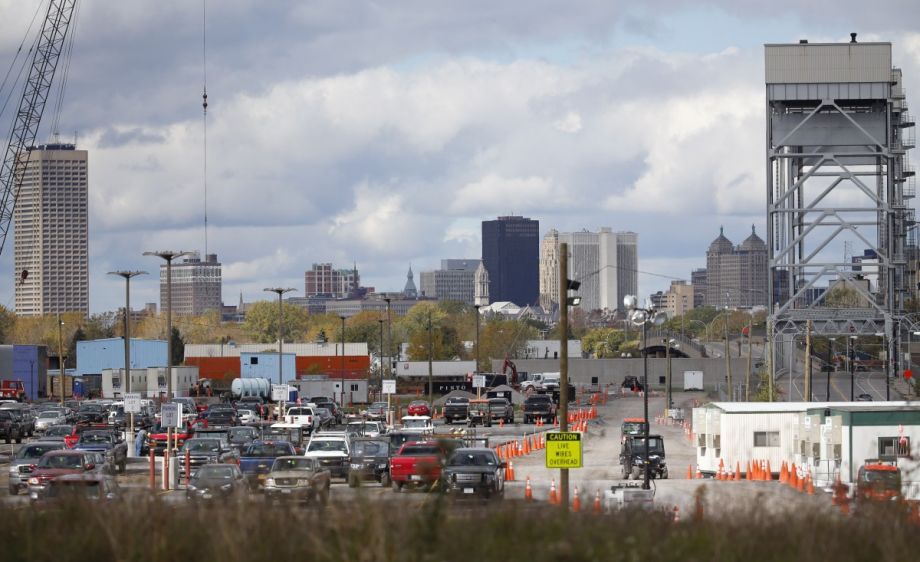
The Buffalo skyline is seen beyond construction work in October 2015. (AP Photo/Mike Groll)
Re-Post From Next City
Buffalo, New York’s new citywide, form-based zoning code has every buzzword an urbanist could hope for: Signed into law by Mayor Byron Brown on Tuesday, the Green Code promotes walkability, density, mixed-use development and complete streets redesigns. It preserves the character of the city’s historic neighborhoods, while calling for diversity and affordability. It even eliminates mandatory parking minimums, making Buffalo the first major city in the U.S. to do so. It’s the city’s first comprehensive zoning update since 1953.
“Every word that an urbanist would want to see in this plan is there except equity,” says Henry Louis Taylor Jr., director of the University of Buffalo’s Center for Urban Studies. A shrinking city, Buffalo has lost 55 percent of its population over the past 85 years and has continued to see more modest population declines over the past decade. As a result, says Taylor, “there’s a tremendous amount of unevenness in the development of the central city itself.”
Taylor thinks the Green Code, in focusing on promoting development while preserving historic character, does little to address that unevenness. Brendan Mehaffy, executive director of Buffalo’s Office of Strategic Planning, says while the word “equity” itself might be missing from the plan, the Green Code nonetheless foregrounds the needs of low-income residents and neighborhoods by allowing for more public input in public projects, promoting active transportation and more. The Green Code actually represents an overhaul of many of the city’s policies and standards, from a land use plan to a unified development ordinance to a simplification of the city’s many urban renewal programs into a single one that will facilitate selling and rehabbing vacant and abandoned properties. Next up is a housing opportunity strategy that will modify how the city finances affordable housing and may include a provision on inclusionary zoning.
Part of what makes the Green Code stand out is the use of a form-based code. In contrast with traditional zoning regulation, form-based codes aim to create more harmonious relationships between different parts of the urban fabric. Instead of trying to separate uses like residential and light industrial, form-based codes focus on regulating the look, feel and function of urban space as a whole — requiring commercial spaces to have ground-level windows, setting standards for building heights and setbacks, etc. — policies that also promote more human-scale, pedestrian-friendly neighborhoods. Buffalo is only the third city, after Miami and Denver, to adopt a citywide form-based code. Many cities apply them exclusively to downtown areas or other mixed-use districts.
Mehaffy says the new code was necessitated in part by a desire to drive growth to areas that can support it and in part by residents’ discomfort with new construction that didn’t fit the city’s historic character. According to Mehaffy, developers of new buildings often found themselves saying, “We did comply with the rules under the old zoning code but created a product that the neighborhood could not embrace and did not support, and that created neighborhood conflict.”
So the city held over 242 public meetings over six years to develop the Green Code. Mehaffy says in that process “Buffalo, only better” became a rallying cry for some of the 6,000 residents who attended meetings. When people said they loved their neighborhoods, the city responded by trying to measure what they loved and preserve it in the code.
The elimination of parking minimums, of course, elicited the most feverish response in urbanist circles this week. The Green Code does away with minimum requirements for parking spots in new projects, replacing the formulaic approach with a transportation demand management process that also takes into account whether a project is situated on transit lines, bike paths and other modes of transportation.
“There was massive support for the elimination of parking minimums. The conversation really focused around doing it responsibly,” says Mehaffy. That meant ensuring developers don’t just push the responsibility to build more parking onto the city and taxpayers. For future projects, the planning board will take into account the parking situation before determining whether developers need to build spots and how many.
Mary Madden, a board member of the Form-Based Codes Institute and a principle at D.C.- and Pennsylvania-based urban design firm Ferrell Madden, says she often encourages her client cities to do away with or reduce parking minimums, but most don’t embrace the concept as easily as Buffalo has. The unified development ordinance also gets into the nitty-gritty of building design for different neighborhood types. Madden says form-based codes often promote more sustainable design because they encourage small-lot buildings that can be adapted for different uses in the future, rather than highly specialized construction like big-box stores. The Green Code also streamlines development standards in a bid to attract more investment to areas already primed with infrastructure, strives to identify a walkable corridor in every neighborhood, creates clearer language around solar panels, and legalizes urban farming, which was previously not allowed.
“It really was updating how we saw ourselves as a city,” says Mehaffy. “We are updating to reflect current values.”
But Taylor worries that the Green Code skirts elements of the city’s past, and in particular the race- and class-related patterns of investment that have shaped what’s there now. Within the different types of neighborhoods identified by the code, the new zoning regulations are uniform, but investment has not historically been even across wealthier and lower-income neighborhoods, says Taylor. “The Green Code is a good code, it’s a good tool. It has all of the right elements that are involved in it,” he says. “The problem with the code is not with the code. The problem is with the strategies that have been connected to the code, and it will recreate the unjust city.”
As Madden cautions, “if you have no market […] a form-based code is not going to give you a market.”
Taylor characterizes the development concerns highlighted by Mehaffy above as worries of what he calls the “latte class,” the largely white, upwardly mobile urbanites living in the city’s flourishing neighborhoods being targeted for development. It’s a different story in the eastern parts of the city, where Buffalo’s black residents are concentrated and vacant lots and abandoned buildings still reign. (Part of the Green Code creates a new system for addressing the city’s surplus of vacant and abandoned property.) Taylor believes the Green Code is a step in the right direction, that with some tweaking it can help usher in a more just city, but that it’s built on the same assumptions and set of values that have contributed to the unequal development that exists today.
“On the surface the Green Code celebrates [inclusivity and affordability], but at the same time it has a form of development operating within the context of a commodity-based housing and commercial development strategy that creates exclusiveness,” he says. “And it creates a kind of latte cultural imperialism that freezes out other forms of culture.”
Mehaffy says inclusivity is crucial to the Green Code, and that the housing opportunity strategy to come will more explicitly tackle the financial aspects of affordable housing — determining whether inclusionary zoning is the best tool for Buffalo, and finding ways to use state and local funds to create sustainable, inclusive, mixed-income neighborhoods.
Reservations and all, Taylor says, “There’s a growing mass of us that know how to use [the Green Code] to build a truly vibrant and prosperous and just city and that’s our agenda for the 21st century and the upcoming year. I think that’s a positive, positive step, because 10 years ago we didn’t have that knowledge, that information and that insight, but today we do.”
UB’s Taylor says Cubans inside island nation are likely mourning Castro’s death
Re-post from Wbfo News
Listen.
Cuban exiles now living in Miami are cheering news of the death of Fidel Castro at the age of 90. But a University at Buffalo professor who spent significant time in Cuba doing research says there is likely a much different reaction to Castro’s death inside Cuba.
Dr. Henry Louis Taylor released a book in 2009 that explored Cuban neighborhoods. Taylor says Castro was held in high regard.
Taylor said Castro allowed neighborhoods to shape everyday life and culture, despite scarce resources, and that helped sustain his power at a time when other communist regimes collapsed.
His book, “Inside El Barrio: A Bottom-Up View of Neighborhood Life in Castro’s Cuba” (Kumarian Press, 2009), charted the legacy of the last 15 years of Fidel Castro’s rule through the lens of Cuban household life.
WBFO’s Mark Scott reached Taylor Saturday to learn more about his research, Castro’s legacy and the future of Cuba.
Looking forward, looking back
Re-Post From UB The School of Architecture and Planning – Latest News
There could be no better setting than the bright, day-lit spaces of the new Hayes Hall – its walls covered with the latest work of our faculty and students – for graduates across five decades, friends in the community and professions, and current faculty, staff and students to come together in celebration of the work we do.
A series of events lined the program in honor of the legacy of the ‘School of Architecture and Environmental Design,’ formed our of the tumult of the late 1960s to approach design through systems thinking and in relationship to broad societal dynamics.
Throughout the two-day event, as much as we mingled and reminisced, we projected on questions of persistent relevance to education and practice in architecture and planning. With the diverse gathering of our school community a telling indicator of this potential, we considered what’s possible if we work together – across academia and practice and with new energy and focus – to bring our professions to bear on the pressing problems of our time, from climate change and social justice to the problems of our prevailing metropolitan structure.
Importantly, this was only the start of a conversation. Over the next three years, we will mark a series of three 50th anniversaries: the founding of our school by the State University of New York (1967), the hiring of the school’s first dean and faculty (1968), and the convening of its first class of students (1969). Such milestones in the history of our school are certainly causes for celebration and recollection.
More than anything, however, we’ll be looking forward with you, our colleagues, former students, partners in the community and professions, to mobilize a new agenda for the School of Architecture and Planning. What are the problems we face as a region, nation and planet in which architecture, planning and allied professions have an important role to play? How can new alignments across the school and its public audiences – from alumni and practitioners to community stakeholders – drive change around these issues? What questions – and which constituents and partners – are missing from this conversation?
- Samina Raja, associate professor of urban planning, participated in a panel discussion on ‘Designing and Planning for Equity.’ The symposium included six breakout sessions on questions of persistent relevance to education and practice in architecture and planning.
- Architecture professor Hadas Steiner (not pictured) led a discussion on criticism and discursive practices with (from left to right) Charles Davis II (MArch ‘02; BPS ‘99) of UNC-Charlotte; Curt Gambetta, UB’s 2011-12 Peter Reyner Banham Fellow; Mark Shepard, UB architecture and media study professor; Adam Levin of Litelab Corp.; and David Perry of the Great Cities Institute.
- Participants in our panel discussion on International Experiences in Design Education included (from right to left) Bonnie Ott, professor emerita of architecture, urban and regional planning PhD student Camden Miller, and architecture professor Kenneth MacKay.
- The Hayes Hall auditorium was at full capacity for Michael Garz (BA ’72), who offered his account of ‘Rebuilding Ground Zero’ as design manger of the World Trade Center Transportation Hub.
- A student offers her thoughts on future possibilities for the school during the community forum.
- Dean Robert G. Shibley facilitated the conversation with alumni, faculty and students, inviting participants to share their sense of priorities for discussion with the full group.
- Bradshaw Hovey documents the conversation, the start of an important dialogue with the broader school community as we mark 50 years since the program’s formation.
- Participants in the forum reflected on priority issues for the professions and our world, from climate change to social justice to the problems of our prevailing metropolitan structure.
- A community conversation on the future of the school invited alumni, faculty, students and partners to consider how we can work together to set a direction and agenda for the next 50 years.
- Architecture professor Erkin Ozay presents ‘Housing Buffalo’s New Americans’ for the PechaKucha event.
- Frank Palen, part of an urban design studio led by Dean Emeritus Harold L. Cohen on Buffalo’s Entertainment District, presents at the PechaKucha event.
- Bradshaw Hovey discusses the Seneca-Salamanca Leasehold Study, one of the first projects undertaken by the ‘School of Architecture and Environmental Design.’ The presentation was one of seven short-format vignettes delivered as part of a special edition PechaKucha event.
- From left to right: Bradshaw Hovey (MUP ’91), research associate professor of urban planning, moderates a session on ‘Project Work in Education and Service’ with Gary Jastzrab (BA ‘76), director, Philadelphia City Planning Commission, and Dean Robert G. Shibley.
- Mark Shepard (left), associate professor of architecture and media study, moderates a discussion on the ‘Expanded Practices’ of architecture with (from left to right) architecture faculty members Omar Khan and Joyce Hwang, and alumnus Cheryl Parker (BAED ‘87), CEO of The Urban Explorer.
- The breakout session on ‘A Culture of Making’ addressed the school’s design/build ethos and its generation of contemporary innovations in material behavior and performance.
The Subtle Phrases Hillary Clinton Uses to Sway Black Voters

Hillary Clinton during the first presidential debate at Hofstra University, in Hempstead, N.Y., on Monday.
When political candidates speak, they are often addressing several audiences at once, and their words can have different meanings for each. When Hillary Clinton talked about race during her debate Monday night against Donald J. Trump, she delivered a subtle and powerful message to black voters, speaking to them not only in the substance of what she said, but in her carefully chosen language.
Mrs. Clinton has been viewed with skepticism by some black activists since the 1990s, when she called for harsh penalties for teenage gang members, whom she termed “super-predators.” But throughout the 90-minute forum Monday night, she showed her determination to persuade large numbers of black voters to support her in November by adopting the lexicon that has been embraced by a new generation of young black activists and liberal whites.
Mrs. Clinton’s expressions set off a range of reactions, from relief to delight, to accusations of cynical political maneuvering. But there was near universal agreement that her use of the language of the racial justice movement signaled a significant moment for both the candidate and the cause. Here is a look at what Mrs. Clinton said and what it meant to certain viewers.
‘Systemic Racism’
“We’ve got to address the systemic racism in our criminal justice system.”
A central demand of Black Lives Matter activists has been the recognition of the role that systems — such as the funding of schools through property taxes — play in fostering racial inequality.
Mrs. Clinton’s use of the term systemic racism in response to a question on how to heal the country’s racial divide immediately drew praise across social media.
“Did Hillary just use the words #SystemicRacism,” Rachel Gilchrist, a black Harvard student, posted on Twitter. “She knows. Oh my God, she knows. Maybe there is hope for this country.”
“Presidential candidate that says the words #systemicracism,” Vangie Castro, a program manager at the Diversity Council in Minnesota, said on Twitter. “She’s listening.”
But not everyone was convinced that the simple use of the phrase represented a sufficient shift in Mrs. Clinton’s mind-set.
“She used the phrase, but I don’t believe she understood it,” said Henry Louis Taylor Jr., professor of Urban and Regional Planning at the University at Buffalo. He added that Mrs. Clinton had not offered a “comprehensive urban strategy,” nor had she discussed “a continuation of Obama’s urban strategies.”
‘Implicit Bias’
“I think implicit bias is a problem for everyone, not just police. I think, unfortunately, too many of us in our great country jump to conclusions about each other. And therefore, I think we need all of us to be asking hard questions about, you know, why am I feeling this way?”
In recent years, the national conversation about race has shifted from the need to combat deliberate discrimination toward a focus on the role that unconscious bias plays in everyday life, including the split-second decisions that police officers make to shoot black people who later are proved to have posed no threat. Mrs. Clinton’s comments about broadening the conversation beyond the police earned a flurry of praise from activists and academics.
“As soon as she said implicit bias is a problem for everybody, not just police, I cheered to myself,” said Rinku Sen, executive director of Race Forward, who had spent that morning training the staff of a foundation in Boston on the subject.
“Congrats to the racial justice movement,” she posted during the debate. “We got implicit bias onto the presidential agenda!! Go, us!”
Kate A. Ratliff, an assistant professor at the University of Florida, who is also executive director of Project Implicit, a nonprofit organization of scientific researchers who have developed a test to measure implicit bias, said she was “happy and a little bit surprised” to hear Mrs. Clinton use the term.
“Most people want to be egalitarian, but they hold these below-the-surface biases that they are not even aware of,” said Ms. Ratliff, who says that millions of Americans take her organization’s bias test each year online. “A big chunk of Americans — and not only people of color — want our leadership to talk about race, and to talk about policing and the criminal justice system and the role that race plays in those institutions.”
‘Black Businesses’
“The vibrancy of the black church, the black businesses that employ so many people, the opportunities that so many families are working to provide for their kids. There’s a lot that we should be proud of and we should be supporting and lifting up.”
Two decades ago, efforts to rebuild impoverished inner cities focused on identifying their problems and deficits and then “solving” them by providing whatever was lacking. But that model has been criticized as creating dependency. Over the past 20 years, the focus has shifted to identifying a community’s strengths and building upon them.
At a debate-watching party at the Apollo Theater in Harlem, the packed room erupted in applause when Mrs. Clinton pushed back against Mr. Trump’s dismal portrayal of inner cities and mentioned the black-owned businesses that employ and serve black communities.
“People cheered Hillary Clinton as she talked about black communities being hubs of vibrancy. That got a great reaction,” said Derek Dingle, the editor of Black Enterprise magazine, who served as a panelist of a pre-debate discussion at the Apollo. But Mr. Dingle wanted to hear more about how Mrs. Clinton intended to help extend credit and federal contracts to black businesses in struggling cities.
“The greatest challenges facing black-owned businesses is that 96 percent of the roughly two million black-owned businesses are sole proprietorships,” he said. “They are not of the size and scale that could have a greater impact on employment and community development.”
‘Racist’
“He has really started his political activity based on this racist lie that our first black president was not an American citizen. … He has a long record of engaging in racist behavior.”
Today, activists, including many in the millennial generation, speak passionately about the importance of calling out racism forcefully and straightforwardly, wherever they see it. They have been so vocal, in fact, that their condemnation of a variety of things — from memos about Halloween costumes to classic books — has generated pushback on college campuses across the country. But Mrs. Clinton’s direct accusation of Mr. Trump still surprised some people who did not expect to hear that kind of language during a presidential debate.
“People often dance around calling something racist,” said Toby Crittenden, executive director of Washington Bus, a civic engagement organization in Seattle. “They just don’t say it, because it’s such a loaded term, especially in politics.”
Mr. Crittenden, who watched the debate from a crowded bar, added: “As soon as it became clear that she was not going to be talking about just ‘Are you right or wrong about birtherism?’ but getting at the underlying reality of what birtherism was about, you could feel the energy in the room shift.”
“Not sure how it is elsewhere, but the only moment when this bar went dead silent with focus was when Clinton opened her statement on racism,” he wrote on Twitter during the debate.
Jason Johnson, political editor at The Root and professor of political science at the School of Global Journalism at Morgan State University in Baltimore, said Mrs. Clinton’s language showed how much she had evolved as a candidate, in reaction to the times.
“What she demonstrated was an incredible dexterity and adroitness that she has learned in the last year when it comes to discussing racial issues,” he said.
“This is not the Hillary Clinton of the 1990s,” he said.
“This is the Hillary Clinton who, like Bernie Sanders” and several other candidates, he added, “got smacked upside the head by the Black Lives Matter movement and realized that you can’t speak to these issues the way you used to.”
JHU Forum on Race in America
Robin Kelley, Dayvon Love, and Salamishah Tillet
Re-Post From John Hopkins University – Hub

“The Next 50 Years: Black Power’s Afterlife and the Struggle for Social Justice”
Sept. 27, 2016
7 p.m.
Shriver Hall
This panel discussion, moderated by Nathan Connolly, associate professor of history at Johns Hopkins, will explore the importance of black knowledge and experience in securing racial and economic justice in American politics and institutions from the 1970s until today. More information
Ticket information
This event is open to the public, but registration is required. Visit the online registration page for more information.
Live stream broadcast
About the JHU Forums on Race in America
In the spring of 2015, turmoil in cities across the country and here in Baltimore sparked important conversations on our campuses about racial inequality and deep divisions that exist in our society. The products of institutionalized racism, police brutality, mass incarceration, separate and unequal schools, and an ever-growing wealth gap between black and white Americans cause pain and frustration for many of our faculty, staff, and students, and the wider Baltimore community. Discordant views about race in our nation fuel passionate debates in our classrooms, department meetings, and public spaces.
In keeping with our commitment to diversity, community service, inclusion, and academic freedom, the Johns Hopkins University presents the JHU Forums on Race in America.
Discussion targets segregation as the source of Buffalo poverty
Re-post from Wbfo News
A crowded audience in the Downtown Library last night heard about how segregation continues to restrict spreading economic prosperity to all parts of Buffalo. The town hall meeting served the opening of the 2016 Buffalo Humanities Festival
Some of the discussion focused on how zoning laws and businesses coincide to keep poor people and prosperous people in different neighborhoods. The audience was told that means poor people can’t use their housing to help create wealth for themselves and their children, as other groups can.
“Show me a place where the urban land market is functioning as it functions and I will show you a place that’s segregated,” said Henry Louis Taylor, UB professor of urban and regional planning.
“They’ll either be doing it by race. They will be doing it by class. But it will segregate because just like a hungry dog eats, the land market flips value from low to high,” said Taylor, who believes poor people have to combine and work collaboratively to turn things around. He is calling for a land bank to take over available property, giving control to residents.
While many applauded several speakers, angry tones occasionally emerged.
“I’m tired of sitting on panels, having to discuss the benefits of real estate developers that want to come in and do what they want to do and not bring diversity for their labor force and not do that urgently and not do well what’s right for that community,” said James Giles, president and CEO of Back to Basics Outreach Ministries.
Audience members agreed that a core problem remains the poor performance of Buffalo city schools. Others sympathized with Fruit Belt residents whose quality of life is fast becoming a casualty to the growth of the adjacent Buffalo Niagara Medical Campus.
Though much of the discussion outlined a troubling reality, Professor Taylor offered a hopeful challenge.
“The battle of the 21st Century will be the battle to develop and regenerate our underdeveloped neighborhoods. So, we have to cast away our illusions and realize that it will take a struggle, a fight, to create the kind of just society that we want.”
Panel 1: Contributions of People of Color to Cities and Planning
Watch.
Despite the often-negative images, rhetoric and scholarship that often characterize urban communities of color as chaotic or dangerous, these communities are in fact reflections of histories of survival and adaptation that benefited not only the people within them but also cities and metropolitan areas at large. North American cities and the urban life that fuels them would be far different without the presence of such communities, which have influenced music, food, sports, political leadership, and urban scholarship. Communities of color and their struggles for equality have profoundly affected the field of urban planning and its scholars, particularly in encouraging movement toward social equity and justice, and this has been true since the early twentieth century but most certainly since the 1960s.
Panelists: William Goldsmith, Sigmund Shipp, Conan Smith, and Henry Louis Taylor, Jr.
Moderator: June Manning Thomas
Campers heading into neighborhoods and discussing development
Re-Post From WIVB
Watch.
BUFFALO, N.Y. (WIVB) – Kids from around Buffalo are at a University at Buffalo summer camp where they’re learning about the problems different neighborhoods continue facing.
“We’re learning about neighborhood development,” said Ayana Thomson, a 12-year-old camper. “Like how to improve a neighbor and make it more appealing to everyone else.”
The neighborhoods they’ve selected to look at are on the East Side near Genessee Street, an area not too far from where Thompson lives.
“When I look at my neighborhood, I realize it could be much worse like the other neighborhoods,” said Thompson. “They don’t have a lot of resources or many things to do.”
The campers like the different hands-on activities they do. They’re creating mock-murals and mosaics as well as learning to use photoshop, creating before and after photos showing how they’d like to spruce up streets.
“When I see the other neighborhoods, I see the potential that their neighborhood has,” said Nadia Loggans, another camper.
UB’s Urban Planning Department hosts the camp where teachers and leaders say it is about more than the kids seeing the problems happening around them but also understand why they’re happening.
“They see the issues, they walk by them every day,” says Camden Miller, one of the camp’s teachers. “Getting them to be aware of them is easy. It’s getting them to understand why they’re happening is tougher. Having them go out into the neighborhood and explain what they see and why they feel it is occurring and apply it really gives them some perspective.”
The kids say they’re learning they can change their city and make a difference.
“It takes everybody to improve the neighborhood.”
Keeanga-Yamahtta Taylor vs. Janaye Ingram on Hillary Clinton, Racial Justice & the Democratic Party
Re-post from Democracy Now
Watch:
To discuss Hillary Clinton’s historic nomination and how the Black Lives Matter movement is reflected in the Democratic platform, we are joined by Keeanga-Yamahtta Taylor, author of “From #BlackLivesMatter to Black Liberation” and an assistant professor of African-American studies at Princeton University, and Janaye Ingram, the former executive director of the National Action Network and a member of the 20/20 Leaders of America.
Guests:
Janaye Ingram former executive director of the National Action Network and a member of the 20/20 Leaders of America.
Keeanga-Yamahtta Taylor author of From #BlackLivesMatter to Black Liberation and assistant professor of African-American studies at Princeton University.
Full Transcript:
AMY GOODMAN: This is Democracy Now!, democracynow.org. This is “Breaking with Convention: War, Peace and the Presidency,” our two-hour daily two-week special from the Republican and, this week, the Democratic National Convention in Philadelphia.
To talk more about the historic nomination of Hillary Clinton and how the Black Lives Matter movement is reflected in the Democratic platform, we’re joined now by two guests. Keeanga-Yamahtta Taylor is the author of From #BlackLivesMatter to Black Liberation. She’s an assistant professor of African-American studies at Princeton University. And Janaye Ingram is with us, former executive director of the National Action Network and a member of the 20/20 Leaders of America.
We welcome you both to Democracy Now! Let’s begin with Janaye Ingram. Your response to the nomination of Hillary Clinton last night, the formal acceptance speech that she gave on the floor of the Democratic National Convention, the first woman nominated by a major party to be president of the United States?
JANAYE INGRAM: Well, obviously, I think it’s a proud moment for this country that this has happened, notwithstanding all that has surrounded her nomination. I still believe that her nomination, the first female, is a moment that we need to pay attention to and we need to acknowledge as a history-making moment. I was happy about her speech last night. I think she could have done a little bit more with giving us personal—a personal story. I think, leading up to her speech, you had a lot of the speakers—and the video—you had her daughter talking about her as a person. The speeches in the nights prior, you had people sort of humanizing her and bringing that human touch. I was looking to hear a little bit more from that perspective.
But I was also happy to hear her talk about the Black Lives Matter movement, even though she didn’t specifically call it out. She did mention the fact that black and brown people are being sort of brutalized—that’s my word—brutalized by police. And I will say that was something. That was a recognition to have on a national stage by this candidate, was important to the movement. You had Reverend Barber earlier talk about Black Lives Matter. And so, having that repeated by Hillary Clinton, at least in her way of saying it, was an important moment, that shows, I think, a lot of the pressure that has been placed on her. She is feeling that pressure, and she is responding to it, at least now, with words.
AMY GOODMAN: Keeanga-Yamahtta Taylor?
KEEANGA–YAMAHTTA TAYLOR: So, I guess I was thinking that the speech, along with the convention as a whole, in many ways has demonstrated this gap between the kind of symbolism and the reality that exists on the streets of Philadelphia and around the country. And so, I think that Hillary Clinton gave a speech that was full of platitudes and that, in some ways, I guess, was of symbolic value, but that really lacked any kind of specificity in terms of how we are going to address very serious crises in this country. And so, I think that, to me, that’s part of the problem I kind of walk away with the convention with, is there’s all the talk about how great and wonderful the United States is, and in many ways, obviously, the convention reflected more of the ethnic and gender and sexual orientation diversity in the United States certainly than the Republican hate show last week, but I think that what we’ve learned from the Obama presidency is that we have to move from symbolism into actual policies and programs that are going to improve the lives of everyday, ordinary people. And in the speeches throughout the week and Clinton’s speech last night, I think we’re still waiting for that specificity in how we go from a kind of symbolic representation of people to the actual representation and improvement in the quality of people’s lives on an everyday basis.
AMY GOODMAN: What would you have liked Hillary Clinton to say last night?
KEEANGA–YAMAHTTA TAYLOR: Well, I think the two things that I’m most concerned with have to do with Black Lives Matter and specific policies that are going to be advanced to stop police abuse and violence in black communities. And also, Hillary Clinton gave a very heralded speech in Harlem in February, where she talked about the reinvestment in distressed communities, and that seemed to be something that was completely missing from the speech. So, in a city like Philadelphia, where the Democratic Party has been having this party all week, there’s 28 percent poverty, and half of those people are living in what is defined as extreme poverty. And so, what are the actual policies and practices that are going to be put into place to address that? That’s the concrete details that I wanted to hear about.
AMY GOODMAN: Janaye, why do you think Hillary Clinton is the best person to address the criminal justice system?
JANAYE INGRAM: I don’t know that I would say that she’s the best person. I think she definitely has a—having had the experience that she’s had, she does bring to the table certain criteria that I think would be helpful, as opposed to the person that she’s running against. To say that she’s the best person is not something that I would be comfortable saying. I think, given the two choices—you have Donald Trump, who has talked about essentially creating a law and order state, which when you’re talking about a fractured relationship between police and specifically the black community, that is very troubling and disturbing to hear. So, given the two choices, I think having someone who at least is willing to have the conversation and to recognize that, even if it is platitudes, that it’s important that she says it. I was really waiting to see if it was going to be said by her, to be honest, because, you know, I wasn’t completely sure. But the fact that she actually acknowledged it means that there’s an opportunity there for us to go further and hold her accountable to the things that she’s saying.
AMY GOODMAN: And you had this unusual moment on the stage of the convention where the mothers of those who had been killed, two of them by police, one by a vigilante—Sandra Bland’s mother, Trayvon Martin’s mother and Jordan Davis’s mother. What did you make of that, Keeanga?
KEEANGA–YAMAHTTA TAYLOR: Well, one thing that I want to say, though, is that Donald Trump may, in fact, talk about law and order and building a law and order—building further on a law and order society, but we have to remember that Bill and Hillary Clinton, in fact, did build a law and order society with the passage of the crime bill in 1994, passage of the Effective Death Penalty Act in 1996. And so, in many ways, we are recovering from the policies that were championed and doggedly pursued by the Clinton, the original Clinton, administration in the 1990s. So I think it’s important to say that.
In terms of the appearance of the Mothers of the Movement, I know that if my child were killed unjustly by the police or by a racist vigilante, that I would want to do everything in my power to bring the perpetrator to justice. So I don’t question the motives of the mothers who participated in the DNC program.
AMY GOODMAN: The fact that they were there.
KEEANGA–YAMAHTTA TAYLOR: Absolutely. I do question, however, the motives of political operatives who I think would use the suffering of black parents for votes. And so, there’s nothing that I have seen yet in Clinton’s policy platform that, to me, takes seriously addressing the issues of police violence. There’s been talk about money on police training, that sort of thing. But what about police accountability? What is actually being talked about in terms of holding the police accountable for the deaths of black people? We’ve just seen this week, Freddie Gray—apparently, no one killed Freddie Gray. Freddie Gray’s death was declared a homicide, and no one will be held to account. And so, that—I’m interested in what Hillary Clinton has to say about that. And that’s what I mean that we have to move beyond promises during election time and platitudes into concrete specifics of what elected officials are going to do to defend black people from violence and abuse at the hands of the police.
JANAYE INGRAM: You know, going back to the earlier point about the—
AMY GOODMAN: Janaye Ingram.
JANAYE INGRAM: Yes—the crime bill, while I agree, you know, that was not the right legislation that we needed to have—and clearly, we are seeing the effects of that daily. The Clintons championed that, and so, by doing that, they are the face of that. I will say there were other people who championed that and who supported that bill, who looked like us, like the two of us. And so, you know, at that time, I want to put the context behind that bill. At that time, there was a lot of crime, and there were a lot of people of all races—it wasn’t just the Clintons who were saying this is the bill. And so, there is a responsibility that we have as a community, and I think that’s the part that I think is really important. Yes, we’re talking about—we need to talk about policy solutions, but offering policy, in and of itself, does not guarantee that that policy will even be implemented. Power concedes nothing without a demand. So, yes, we have to make sure that the power structure is meeting our demands and is essentially responding to the things that they said that they were going to do.
There’s a certain level of accountability that I don’t know has been achieved yet. And that’s not just by the black community. I think that’s by the American society as a whole. I think that’s part of the frustration that you’re seeing coming out with the Bernie movement. People don’t feel like politicians have been held accountable. But what they fail to realize is that we are the ones that are supposed to keep politicians accountable. And so, with that, I think, you know, we’re talking about policy solutions. I think Hillary Clinton needs to have someone in her ear talking about what types of solutions need to be had. I don’t know that, given the ’94 crime bill, that I would fully say, you know, “Have at it. You create the policies, and we’ll be behind it.” It needs to be a conversation.
AMY GOODMAN: Keeanga?
KEEANGA–YAMAHTTA TAYLOR: Yeah, I would just say that, first, talking about the 1990s, I think it’s one thing if you’re in a black community that is absolutely having issues with crime and poverty because of decades-long disinvestment in jobs and infrastructure in black communities, and you’re left with no other viable alternative. So, the alternative wasn’t either support the crime bill or support this host of public policies that are aimed at rebuilding the public infrastructure, rebuilding public programs that are intended to mitigate the worst aspects of poverty. People weren’t given that option. In fact, Bill Clinton and Hillary Clinton helped to usher in a period where they declared the era of big government, i.e. government programs, is over. And so, the only alternative that people were given was more police and more prisons.
And that’s the very important context, because the thing I think that we miss that was most pernicious about Clinton policies in the 1990s—the crime bill, the Effective Death Penalty Act, welfare reform—was not just that people ended up in prison, was not just that poor people lost access to important government benefits, but most importantly is the damage that was done to the idea that government has a role in the life of everyday people, that government has a responsibility to poor and working-class people. And, in fact, they helped to disconnect the idea that government has any role. They helped to disconnect the idea that poverty, that economic inequality is responsible for the issues of crime, that those things were responsible for people’s reliance or need for welfare. And these are ideas that we are still contending with today, the idea that government somehow is a bad thing.
AMY GOODMAN: And what is your assessment of Donald Trump, where he fits into this? Let’s begin with Janaye.
JANAYE INGRAM: My assessment of Donald Trump is obviously that he is using fear as a tactic to sort of gain him some votes, popularity. Even seeing his most recent comments talking about hitting some of the speakers, I mean, it’s—
AMY GOODMAN: He was in Iowa—
JANAYE INGRAM: Yes.
AMY GOODMAN: —and he said that he wanted to attack some of the DNC speakers.
JANAYE INGRAM: He wanted to attack—he said—I believe he said “hit.”
AMY GOODMAN: “Hit,” you’re right.
JANAYE INGRAM: He wanted to hit some of the speakers. It is appalling to me that this man is a nominee to be president. I can’t even fathom that this is the person that some people in this country want to lead this country. What he’s doing is not leadership. What he is doing, I don’t even know the word for it, but it’s disgusting. Whatever it is, it’s disgusting.
And ultimately, you know, I think, at the end of the day, I noticed in the package that—one of the packages you showed, someone was talking about how there was this sense of nationalism at the DNC. And I noticed it, too. I noticed the signs and the chants. What I attributed that to was when you have a person who is talking about making America great again, as if America hasn’t made strides, and talking about taking America back to a period when I don’t think it was great at all—let me not say “at all,” but I don’t think it was as great as it could have been. It did not live up to the ideals and the tenets that we want to hold America to. I think that was the reason behind all of that sort of sense of nationalism, to basically say this is still a nation to be proud of.
AMY GOODMAN: Keeanga, I’m going to end with the question about movements and where they fit into this whole electoral process into November.
KEEANGA–YAMAHTTA TAYLOR: Well, I think the movements are quite critical in terms of keeping alive the issues that are most important to us, because, to be honest, there would be no discussion about police violence and police brutality, there would be no discussion about black lives mattering, without there having been, since August 9th of 2014, a movement highlighting and exposing that police violence is not just a case of bad apples or rogue cops, but that it’s absolutely systemic. And so, I actually think that in order to keep these issues alive, in order to keep whomever is elected in November, to keep their feet to the fire, that the movement can’t collapse into just blind support for Hillary Clinton because we know that Donald Trump is not on the agenda, and that the movement needs to remain politically independent, with its own set of independent objectives and goals that are not tied to whomever becomes president.
AMY GOODMAN: Well, we will certainly continue this discussion in these months to come, Keeanga-Yamahtta Taylor, author of From #BlackLivesMatter to Black Liberation, and Janaye Ingram, former executive director of the National Action Network.
This is Democracy Now! When we come back, we take a look at the vice-presidential nominee, Tim Kaine, the senator from Virginia, and his time in Honduras. This is Democracy Now! Back in a minute.
Allstate Minority and Women Emerging Entrepreneurs Program
Re-post from UB School of Management
Creating opportunities for individuals leading minority- and women-owned enterprises into advanced stages of development.
The Allstate Minority and Women Emerging Entrepreneurs (MWEE) program is a joint venture by the UB School of Management’s Center for Entrepreneurial Leadership and the UB Center for Urban Studies. The program’s mission is to construct a pathway that enables minority and women entrepreneurs to move their companies to the next stage of development. The MWEE program is partially funded with a generous grant from The Allstate Foundation.
The program helps participants:
— Forge relationships with successful business owners
— Learn more about the varied aspects of running a small business
— Formulate clear objectives and outcomes to guide the development of their business plan
— Devise realistic business goals and timetables and develop strategies for achieving them
— Learn about and connect with existing organizations and resources, public and private, that can assist with the development of their business
Participants (protégés) work with a mentor, attend monthly business development seminars and additional networking events, and complete a revised or newly developed business plan. The Protégé of the Year receives the Allstate Minority and Women Emerging Entrepreneur of the Year award and a $1,500 prize.
Who Should Apply
To participate, an applicant must be either a woman or a member of a recognized minority and own a business in the Buffalo-Niagara region.
Application Process
Applicants are encouraged to apply early as it is not unusual for the class to be filled before the deadline.
Learn More
To obtain program fees, request a brochure or learn more, contact the CEL at mgt-cel@buffalo.edu or 716-885-5715.
Students tackle urban renewal at summer camp
UB Center for Urban Studies is hosting its 4th annual Summer Academic Camp. The camp is designed for middle school students. WBFO’s Eileen Buckley reports the theme is neighborhood development.
More than ten students are gathering in a classroom on the University at Buffalo’s South campus at the Hayes Hall Annex through mid-August for this Academic Camp. They’re learning about ”Transformation of the Visual Landscape’.
“In many of the east side neighborhoods, the visual landscape is harmful in the sense that it depicts an image of decay, deterioration, neglect and a sense of hopelessness — that is — that you can do nothing about it,” said Dr. Henry Louis Taylor, Jr., Director of UB’s Urban Studies program.
Professor calls poverty “systemic racism” in Buffalo
Re-Post From WIVB
BUFFALO, N.Y. (WIVB) – Leaders in Buffalo love talking about the city’s renaissance. Progress is on display in certain places but the fact is, Buffalo is still the 3rd poorest city in the country, with 30.1% of the population struggling to make ends meet.
News 4’s Nalina Shapiro wanted to help us understand how some neighborhoods, like the east side, ended up the way it did. This story fill books. It’s a complex issue and it’s not easy getting answers from leaders but two two professors and one young man helped us understand Buffalo’s history and what changes still need to be made.
We met 14 year old Razhon Harris while he was doing yard work near the Broadway Market. He told us he wants to make an impact.
“Right now I’m helping my grandma with some grass, planting some grass for her,” said Harris.
A few feet of new grass might not mean much to you but it represents something much bigger for Harris. He lives in one of Buffalo’s poorest neighborhoods on the east side.
“Well it adds property value to the houses and it attracts some people over here,” Harris told us while he was planting the seeds.
Not nearly enough people are investing in the east side. One problem has to do with home values, which are low. The average price of a home sold on the east side went for $37,426, according to data sent to us by Emily Cornwell, a licensed real estate agent with Nothnagle Realtors. If you take a quick ten minute drive to North Buffalo, the Elmwood, Allentown and downtown areas home prices range from $128,000 to more than $500,000. The west side is also making a comeback with home prices valued on average at around $123,546. South Buffalo home prices are also lower, on average between $68,000 and around $85,000.
Still, the east side has the lowest home prices and some of the most empty structures. The area by the Broadway market has the highest rate of vacant houses in the city, 1,704 vacancies among 6,471 units according to Buffalo Business First.
“See my family, our house used to be abandoned but then we fixed it up and now it looks beautiful,” said Harris.
That’s just one family. Not everyone can afford to do that or wants to do that since home values are so low. Harris said the community needs more help.
“It’s like a war zone over here, when they’re spending money, our taxpayer dollars on certain stuff that doesn’t help everybody it’s only helping certain people,” said Harris.
If a 14 year old can tell you that, you would think leaders in Buffalo know investing in home ownership is one key to turning a poor neighborhood around.
“So they know they know they chose to do something differently,” said U.B. Professor Henry Louis Taylor.
Professor Taylor says choices city leaders made created the current state on the east side.
“It’s pure racism, systemic structural racism,” said Professor Taylor.
The pictures tell the story. If you drive by the waterfront and the medical campus it’s a completely different story than what’s being told on the east side, a predominantly black community.
“Buffalo rising and African Americans falling,” said Professor Taylor. “And people will say well how could that happen in a city managed by blacks and controlled by blacks and our answer is simple, black faces in high places don’t mean a thing if they have the same agenda as white faces in high places,” said Professor Taylor.
Building new, forgetting about the old and pushing people out into the suburbs is what Professor Taylor thinks will continue to happen unless more private sector money is invested into areas like the east side.
We asked Harris what his message is to the Mayor of Buffalo and other city leaders, to which he replied, “spend some more money over here, you only did a couple streets and these pots holes over here is crazy,” said Harris.
Historians will tell you east side roads started crumbling when new roads like the 33 and Scajaquada were built, to draw people to the newly developed suburbs in the 1950’s. That created a huge housing vacuum. People moved to the suburbs and left the east side homes empty.
“So, lots of absentee landlords and it led to a rent problem for homeowners and they couldn’t find renters so it led to high arson rates in communities like this,” said Buffalo State Sociology Professor Eric Krieg.
We spoke with him on a deserted Broadway looking in the distance at a blossoming downtown Buffalo.
“It’s an interesting place because there is hardly any traffic on Broadway and a lot of empty lots and buildings that need a lot of repair,” said Professor Krieg.
“I would like some more parks that are child friendly, because there have been a lot of shootings over here and it would be safer if there was more child friendly places over here,” said Harris.
While Harris said the city needs to help more he also added more young people like him need to step up.
“Some of the non lazy ones need to come outside and do some work instead of hanging around doing stuff that don’t matter,” said Harris.
Children can’t control where they’re born, but Professor Taylor says leaders can either continue to build what he calls a “latte city” to attract only a certain type of business professional, or create a city that works to understand everyone’s diversity.
“What if happy talk was all over Buffalo not just in a few places, imagine what an awesome city that would be,” said Professor Taylor.
We reached out to the City of Buffalo June 6th when we began working on the story. The mayor just responded on July 11th.
“The city has spent significantly more on the east side of Buffalo than it has spent in Canalside. In fact the spending in Canalside is largely private sector spending and that is what is driving the spending we see at Canalside,” said Mayor Byron brown. “Figure in a 10-year period of time those numbers are well in excess of $300 million dollars on the east side of Buffalo.”
Mayor Brown says just recently Sinatra Development agreed to invest $20 million dollars at 1160 Jefferson street on the east side to create a mixed income mixed use space with apartments, retail space and a health center.
The Base
Re-post from the Boston Review

A protester demonstrates at a rally against police violence in Minneapolis. / Fibonacci Blue
In spite of Bernie Sanders’s primary win in Indiana and favored status in West Virginia, recent voting in Pennsylvania, Maryland, New York, and a handful of other states appears to confirm what has long been anticipated: after a spirited campaign for the Democratic presidential nomination, the Vermont senator is falling to earth. One would not want to write off a campaign prematurely—after all, dismissal of Donald Trump by the press and his fellow Republicans paved his road to the GOP nomination—but Sanders himself is retrenching. Staff cuts and campaign statements suggest he is now focused less on the presidency than on dents he can make in the Democratic Party platform at July’s convention.
Thus it is fair, at this stage, to ask what will become of the political fervor Sanders has unleashed. Supporters of his opponent, Hillary Clinton, hope some of that excitement can be funneled toward her general election run, securing a decisive victory and the legislative mandate believed to result. Especially if Trump is on the general election ballot, as seems all but certain, there is no doubt that a significant portion of Sanders backers will vote for Clinton in November.
Yet this lesser-of-many-evils approach only emphasizes the cynical calculus that Sanders’s supporters yearned to escape: the Democrats promise as little as they can get away with and hope the troglodytes parading in the Republican Party are enough to get the base out to the polls.
Bernie Sanders advocates redistributive government, which puts him at odds with the last twenty-five years of Democratic common sense.
But now some activists wonder whether the class anger orbiting Sanders’s campaign can transform the Democratic Party into a tool for movements against economic and racial inequality. An older generation remembers when the Democratic Party brandished its liberal credentials instead of being terrified by them. For these activists, Sanders’s surprising run yields nostalgic visions of “taking back” the party, reviving what they believe was a grassroots politics representing ordinary people.
Like much nostalgia, however, this is naïve. One need look no further than Clinton’s candidacy to appreciate the Democratic top-brass’s aversion to policies and politics centered on social justice. Instead of thanking Sanders for activating new voters and reinvigorating those still sleepy from the underwhelming presidency of Barack Obama, former President Bill Clinton accused him of wanting to “shoot” people on Wall Street. Last December, instead of accepting responsibility for the security of its own data, the Democratic National Committee (DNC) smeared Sanders and falsely accused him of breaking into Hillary Clinton’s campaign secrets. Clinton has reluctantly appealed to Sanders’s supporters by referring to herself as progressive and declaring that the middle class needs a raise. But mostly she and the Democratic hierarchy have mocked Sanders for supposedly promising “free this and free that and everything”—a criticism she rejected when it came from Jeb Bush’s lips. Clinton has campaigned relentlessly on the improbability of universal health care and criticized Sanders for suggesting that there be free tuition at public universities and colleges.
This is not just a case of Clinton failing to detect which way the wind is blowing in American politics. As a steward of American capital, it is her responsibility to attack the idea of social entitlement. It was her husband and campaign surrogate who clearly articulated the politics of the “new Democrats,” when he declared that the “era of big government is over.” Sanders advocates redistributive government, which puts him at odds with the last twenty-five years of Democratic common sense. Hillary Clinton is not fundamentally opposed to the use of the government treasury for any and all social entitlements, but her refusal to embrace serious redistributive policies for the benefit of poor people shows that she sees her future job as her husband saw his in the ’90s: to crush, or at least ignore, the proposition that the public should provide for people’s needs.
This does not make Clinton a conservative Democrat; it just makes her a Democrat. Since her husband’s first term, the Democratic Party has successfully molded itself into a small-government, pro-privatization, law-and-order party. As then-Senator Joe Biden put it while celebrating the 1994 Crime Bill:
Let me define the liberal wing of the Democratic Party. The liberal wing of the Democratic Party is now for 60 new death penalties. That is what is in this bill. The liberal wing of the Democratic Party has 70 enhanced penalties. . . . The liberal wing of the Democratic Party is for 100,000 cops. The liberal wing of the Democratic Party is for 125,000 new state prison cells.
Today the Black Lives Matter movement has compelled the party to walk back some of that rhetoric. But there is little reason to believe this is a genuine retreat rather than an exercise in political expediency. Biden was speaking to a deeper truth about how the party wanted to be known: as tough as the GOP, not socially liberal or especially concerned with the interests of minorities.
This is not just old news. Decmocratic veterans nationwide continue to push a regressive agenda. Consider Chicago Mayor Rahm Emmanuel, once a party kingmaker and now one of the most reviled public officials in his city. He earned his ignominy by covering for police criminality and attempting to dismantle public education, a process that included thelargest mass school closure in American history, in 2013. Mayor Eric Garcetti of Los Angeles has cracked down on the homeless, confiscating their property, including the “tiny homes” that were doing what the city wouldn’t—house homeless people. In New York City, mayor Bill De Blasio betrayed his supporters in the criminal justice reform movement bypledging to hire 1,300 more police even as crime continued its historic downward trend. In San Franciso, Mayor Ed Lee promoted a “Twitter tax break”—a payroll tax exemption lasting six years and intended to keep tech companies in San Francisco—which cost the city $34 million in 2015 alone. Meanwhile, San Francisco faces a $100 million budget shortfall, and Mayor Lee is calling for across-the-board spending cuts from city agencies. With Democrats scaling back services—excepting, of course, law enforcement—and pushing trickle-down economics, who needs Republicans?
One might protest that Democratic officials have generally been more critical of the latest excesses of campaign finance law than have been their GOP competitors. But these words don’t reflect principle. When it comes to absorbing corporate money and accompanying influence, the Democratic Party takes a back seat to no one. The party’s largest corporate donors embody the greed that courses through the financial and industrial economy: Goldman Sachs, AT&T, Bank of America, JP Morgan, and General Electric hedge their bets by giving almost equally to both parties. Lockheed Martin and Walmart veer toward Republicans but still give millions to Democrats, just in case. In the midst of the primary season, the DNC changed the party’s rules to allow presidential candidates to accept more money from lobbyists and political action committees.
The corrosive influence of money in politics is hardly a revelation, but it is sobering to observe it at work in an organization that claims to champion the welfare of the downtrodden. Take the Congressional Black Caucus, which used to refer to itself as the “conscience of the Congress.” The CBC PAC and its politicians politicians have received some of their largest donations from Walmart, General Motors, and Coca-Cola. Is it any wonder that the caucus has been almost absent in the fight for a higher minimum wage, even as more than half of black workers make less than $15 an hour?
Citizens angered by inequality and injustice should not be stifled by the pressure to organize through the Democratic Party.
Indeed, this campaign season has been a lesson in just how conservative the Democratic Party actually is. Hence Clinton’s unofficial campaign slogan of “no we can’t” and DNC chair Debbie Wasserman Schultz’s calm admission that unpledged superdelegates “exist really to make sure that party leaders and elected officials don’t have to be in a position where they are running against grassroots activists.”
The two-party system itself preserves the Democrats’ conservatism, which suggests that the party is not likely to change before there is a legitimate challenge from its left. Until then, the Democratic leadership can remain confident that its base has nowhere else to go. Thus, even when Democrats push policies that harm their constituents, they can expect little protest from the major liberal organizations. For example, when the Democratic Party promotes so-called education reform policies that are hostile to teachers unions andnegatively affect black students, officials themselves receive almost no resistance from teachers unions or the NAACP.
In fact, the opposite occurrs. While rank-and-file teachers oppose significant aspects of the reform movement, including the Common Core standards and the intensifying regime of standardized testing, their union leadership dutifully lines up to back the Democratic Party. The American Federation of Teachers endorsed Clinton as early as July 2015; the National Education Association followed suit in October, with no debate or discussion among its members. The civil rights establishment is largely silent on education policy, but, when it does get vocal, it tends to support reformers. This is not surprising considering that theNAACP and Urban League have received millions of dollars from the Gates Foundation, which champions charter schools, standardized testing, and privatization. Notably, education reform was the key agenda item of former Obama administration Secretary of Education Arne Duncan. The party’s conservatism radiates outward, as its constituency learns to fall in behind its positions.
This makes the party difficult to capture, as the Tea Party had captured the GOP at one point. Yet the appeal of such a strategy is longstanding. The same question returns eternally: How to transform protest rabble into respectable politics? In the late 1960s and early ’70s, the move to integrate the New Left into the Democratic Party was heralded as a sign of maturation for the counterculture. But as the movements in the streets subsided and activists entered the electoral arena, they imbibed party norms and became less militant. In 1984 and ’88, the Rainbow Coalition led by Reverend Jesse Jackson was supposed to get tough with the Democratic Party and demand a seat at the table for black voters. Instead, the party got tough with black and other progressive voters by insisting that they take a back seat to the paty’s conservative wing, represented by Bill Clinton. And let us not forget that it was Al Gore, running against Michael Dukakis for the Democratic Party nomination in 1988, who introduced Willie Horton into the post–Civil Rights lexicon of racial symbolism, helping to derail Dukakis’s campaign and reinforce the era’s demand for crime-control politics and policies.
Given the resilience of party conservatives, their history of both rebuffing challenges from the left and absorbing the challengers themselves, it is hard to imagine a takeover strategy bearing fruit. This brings us back to Sanders and the most unfortunate aspect of his campaign: he is running as a Democrat. As a consequence he will, at some point, be asked to throw his support to Clinton. (Already he has agreed to back her in the likely event that she is nominated.) For Sanders, who has spent his entire political life working with and on behalf of Democrats, this is perhaps no great sacrifice.
However, the intractability of the Democratic Party is not the only argument against moving from protest to polite politics. The assumption that doing so is preferable or important underestimates the critical role protest plays in generating progressive change. When activists recall a Democratic Party that cared about ordinary people, what they really have in mind are the social movements and revolts that forced the party to respond to the needs and demands of those on the streets. There would have been no New Deal without the Hoovervilles, rent riots, sit-down strikes, and Communist Party activism of the 1930s. There would have been no Great Society without Civil Rights protests in the South and rebellions in more than two hundred cities across the country during the 1960s. Even Richard Nixon, who won office appealing to a racist “silent majority,” waited out his first term before he began dismantling Lyndon Johnson’s welfare state, lest he provoke protests.
As the great activist and historian Howard Zinn put it, “What matters most is not who is sitting in the White House, but ‘who is sitting in’—and who is marching outside the White House, pushing for change.” He didn’t mean that elections are irrelevant, but he emphasized what citizens do to shape their world. The anger about inequality and injustice in the United States, which has been given some voice by the Sanders campaign and most certainly by the Black Lives Matter movement, should not be stifled by the pressure to organize through the Democratic Party. It can’t be done. The movement for equality and justice should continue to organize independently and fight for its agenda regardless of what party sits in office.
Housing Bias Outlasts Ruling in a Long Island Village
Re-Post From New York Times
GARDEN CITY, N.Y. — Mary Crosson, a housing activist, remembers moving to Long Island from Bayside, Queens, in the 1990s and being struck by the sharp divisions that seemed to keep blacks and whites apart.
“I come from South Carolina, so I understand discrimination,” said Mrs. Crosson, 68, who is black and lives in the village of Hempstead, where nearly half the residents are African-American. “In Queens, it was more of a mixed neighborhood. I came out here and I felt like I went back to the South all over again.”
A federal appeals court found last month that such segregation was not an accident. The court ruled that Hempstead’s next-door neighbor, Garden City, a wealthy village where 1.2 percent of the residents were black in 2010, had violated federal antidiscrimination law by rezoning land specifically to block multifamily housing — and the potential for minorities to move in.
“Something was amiss here,” a three-judge panel of the United States Court of Appeals for the Second Circuit wrote in its decision. “Garden City’s abrupt shift in zoning in the face of vocal opposition to changing the character of Garden City represented acquiescence to race-based animus.”
The ruling, which affirmed a 2013 decision by a Federal District Court judge, is a pivotal development in the long struggle to dismantle housing segregation as the federal government, courts and advocacy groups shift the battle beyond cities to white suburban enclaves that have deliberately erected barriers to integration.
The more aggressive posture reflects a growing impatience with the persistence of segregation a half-century after the passage of the federal Fair Housing Act, and an effort to apply more pressure on communities to finally open themselves up to black and Latino residents.
“It’s another signal that the tide is turning in terms of fair housing,” said Prof. Robert M. Silverman, of the School of Architecture and Planning at the State University of New York at Buffalo, who has written extensively on the subject of housing segregation. “There’s a historic pattern of segregation that those places have experienced.”
Continue reading the main story
In the case of Garden City, however, the legal victory may have come too late. The litigation dragged on for so long that a courthouse is now planned for the land at the center of the case, and local officials, advocates said, claim there are few other parcels on which to build.

From left, Mary Crosson, Diane Goins and Atlanta Georgia Cockrell at the headquarters of the Long Island chapter of New York Communities for Change. CreditVictor J. Blue for The New York Times
The judges who ruled in the Garden City case raised the possibility that discrimination went beyond one community, directing the district court to determine whether officials in Nassau County, which includes Garden City and Hempstead, had deliberately steered affordable housing to low-income areas with largely minority populations.
Experts on fair housing say discrimination cases are flaring where the need for more affordable housing is greatest: cities where housing costs are high and their suburbs. In recent years, legal challenges have been raised inWestchester County, N.Y.; Marin County, Calif.; and the city of Dallas, among other places.
The litigation in Nassau County is entering its next phase as a new rule issued by the Obama administration takes effect, requiring communities that receive federal housing aid to detail how they plan to reduce racial inequality in housing. The federal Department of Housing and Urban Development has given local governments data and mapping tools to help them address segregation.
Bryan Greene, the agency’s general deputy assistant secretary for fair housing and equal opportunity, said the requirement would help prevent what happened in Westchester, where some of the country’s most affluent communities sit next to hardscrabble towns and where, a judge found, officials had failed to consider race when they certified that the county had taken steps to promote fair housing.
Westchester, which entered a sweeping desegregation agreement with the federal government in 2009, helped “illustrate to many people nationwide that communities were getting millions and millions of dollars in block grant funding” without evaluating the problem of racial segregation, Mr. Greene said.
In the case of Garden City, local officials had not received federal housing money, but the Fair Housing Act applies to all housing transactions and policies, even when federal money is not involved.
The lawsuit that led to the appeals court ruling last month was filed against the village and Nassau County in 2005. It accused the village of discrimination by catering to residents who had protested the board of trustees’ initial embrace of a zoning classification that would have allowed multifamily housing on a 25-acre parcel that the county owned and planned to sell to a private developer.
While the classification did not specifically refer to affordable housing, the appeals court said, residents who opposed the move raised the specter of such housing being built and urged the trustees to “play it safe” by allowing only townhouses or single-family homes on the property. The trustees did just that.
Using what the appeals court called code words, residents said that multifamily housing would change the “flavor” and “character” of the village and would lead to “four or 10 people in an apartment,” and demanded a guarantee that the housing be “upscale.”
“The tenor of the discussion at public hearings,” the judges wrote, and a flier that circulated in the village, “shows that citizen opposition, though not overtly race-based, was directed at a potential influx of poor, minority residents.”
Garden City officials have yet to decide whether to appeal. The trustees said in a statement that the village had already begun to apply remedies ordered by the district court judge, Arthur D. Spatt, adopting a fair-housing resolution and appointing a fair-housing compliance officer.
Judge Spatt also ordered Garden City to require that 10 percent of new residential developments with five units or more be set aside for residents with household incomes of 80 percent or less of Long Island’s median income.
Advocates doubt the village will create such housing anytime soon. “They’ve been saying to us the whole time that they don’t have enough land to build anything,” said Diane Goins, chairwoman of the Long Island chapter of New York Communities for Change, a plaintiff in the case.
Nonetheless, Ms. Goins, who lives in Hempstead, called the ruling historic. “Having grown up in African-American communities on Long Island, I always knew that we were locked into certain places,” she explained. “You could visit Garden City, but you could not stay.”
The lawyers for the plaintiffs said Garden City and Nassau County were not unusual. “There are many violations going on all across the country, but unless someone catches them, it’s of no moment,” one of the lawyers, Frederick K. Brewington, said.
The broader implications of the case, and the appeals court’s question about whether Nassau had engaged in racial steering, could be far-reaching. Nassau “is one of the most segregated counties in the country,” said Stanley J. Brown, another lawyer for the plaintiffs.
In Westchester, the events that eventually produced a desegregation agreement started with a challenge by an advocacy group, the Anti-Discrimination Center, which accused the county of lying when it claimed to have followed fair-housing requirements while applying for federal housing money.
A federal judge agreed, ruling that the county had “utterly failed” to meet its obligations. The county said it would build 750 units of affordable housing in 31 overwhelmingly white communities. The units — intended for working, middle-class families — were to be aggressively marketed to nonwhite residents.

At the end of 2015, according to county officials, financing was in place for 649 units, 588 of which had building permits or certificates of occupancy.
But a thornier element of the Westchester settlement required the county to “use all available means as appropriate” to promote nondiscriminatory housing. That included pressing local governments to change zoning rules that discouraged the construction of apartments.
The federal housing agency has repeatedly accused Rob Astorino, the Westchester County executive, of moving too slowly on the issue. He, in turn, has accused the agency of trying to expand the agreement’s scope.
In a recent opinion article in a local newspaper, Mr. Astorino, a Republican, said the housing agency was trying to “assault local zoning.”
The Nassau and Westchester cases have their roots in a much older housing-discrimination battle near New York: a seminal case in Mount Laurel, N.J.
The Mount Laurel case began in the 1960s when a group of African-Americans found themselves priced out of the township, a Philadelphia suburb. They sued in 1971, after local officials blocked an affordable-housing project.
The case reached New Jersey’s highest court, which in two key rulings limited the use of exclusionary zoning to prevent the construction of affordable housing.
More important, the ruling, known as the Mount Laurel doctrine, asserted that all municipalities had an obligation to provide a “fair share” of affordable housing. Since the mid-1980s, a total of more than 65,000 units have been built across New Jersey’s 21 counties.
Professor Silverman of SUNY Buffalo said continued litigation of fair-housing cases highlighted both the intractable nature of the problem and the robust enforcement now unfolding nationally.
“The fact that discrimination has been sustained over time, despite a series of different court challenges, has kept the issue salient,” he said. “People see the inequalities.”
Five questions for an affordable housing expert
2. Some advocates have conflated affordable and workforce housing — that is combining homelessness, low-income and middle class needs together. Does such an approach sufficiently address the complexities of the debate or are cities more successful when they address these issues separately?
In a place that is growing rapidly, there is a need for a multifaceted approach, since different groups in the population face affordable housing barriers for different reasons. Strategies like workforce housing usually focus on specific groups that fall through the cracks in tight housing markets — teachers, police officers, firefighters, etc. — who can’t afford to live in the place they work due to their salaries being too low.
So, affordable housing, down payment assistance, mortgage interest write downs or other policies are put in place to help them find housing. But, those types of programs don’t address the needs of other groups struggling to find affordable housing, like the elderly, students or the poor in general. They need a variety of other fair and affordable housing options. Even if things get conflated in the short term, the long-term needs of all constituencies will eventually surface and have to be addressed.
3. Are there cities that have best practices on managing housing needs for changing and growing populations?
People point to places like New Jersey as a model for regional affordable housing development. A lot has been written about the Mount Laurel case where affordable housing was part of the state’s regional fair share approach. Illinois, particularly in the Greater Chicago area, is also cited a lot for its use of inclusionary zoning and mixed-income development.
4. Can government be effective when a booming market is bringing together willing buyers and sellers even at the expense of existing residents, i.e., because they live in public housing that will be torn down, because renters will be charged more every year, and because property value increases will lead to an increase in taxes?
Local government can do some of the things I mention above to protect long-term residents from speculation and housing inflation. The most direct ways to protect existing residents are tools like rent control and various forms of property tax and assessment relief. But, local government can also be more aggressive about building more affordable housing.
Today a lot of that activity takes place with nonprofit developers using tools like the low-income housing tax credit (LIHTC) and by creating low-income housing trust funds. Trust funds are typically funded with fees applied to market-rate developments, payments for increased density that are part of incentive-based inclusionary zoning, and fees for deed transfers, etc.
5. Are there other factors I’m not taking into consideration that I should be on this issue?
Another tool that is being used more to provide for affordable housing are community benefits agreements (CBAs), which are negotiated with developers of large projects like hospital and university expansions, stadium development, etc. Part of those agreements can include set-asides for affordable housing development that are linked to larger projects receiving public subsidies.
David Plazas is the opinion engagement editor of The Tennessean. Call him at 615-259-8063, email him at dplazas@tennessean.com or tweet to him @davidplazas.
Center for Urban Studies Director Awarded Excellence in University-Community Engagement Award
The projects range from rebuilding Buffalo’s food system and improving the breast cancer screening rates for inner city women to helping city high school students complete their FAFSA forms and bringing dental care to rural communities.
These community engagement activities, notes Provost Charles Zukoski, “build important relationships and enhance university research and education.”
Six members of the UB community working with community partners to realize these and other significant needs in the community are the first recipients of the Excellence in University-Community Engagement Awards.
The awards, created by the UB Engagement Advisory Committee to recognize members of the UB community who are building partnerships with community entities that enhance research, teaching and service, were presented at a reception on Wednesday at the Jacobs Executive Development Center.
The reception was hosted by Zukoski and Mary Gresham, former vice provost for educational collaboration and engagement who retired at the end of the fall semester after 45 years of service to UB. Gresham chaired the Engagement Advisory Committee.
As a public research university, UB is “dedicated to pursuing transformative research and education that respond to local and global issues, and are directly engaged with our communities,” Zukoski told those attending the reception.
“Through UB 2020, we are committed to building partnerships in an effort to address community needs while providing faculty, staff and students with rewarding new research and learning opportunities.
“The engagement projects we are recognizing today exemplify this,” he said. “In collaboration with community partners, our honorees use research to address direct needs in our community and they enrich our students’ educational experience by inviting them to participate in the engagement activities.”
Each of the award recipients, Zukoski said, “embodies our mission as a public research university — serving the greater public good through your contributions.”
Gresham agreed, noting the efforts of the award winners “have strengthened relationships in the community and advanced UB’s public research mission.”
She introduced the award winners and offered a brief description of their accomplishments.
The Excellence in University-Community Engagement Award winners, their community partners and the title of their projects:
“Community-University Collaboration on Rebuilding Buffalo’s Food System”: Samina Raja, associate professor, Department of Urban and Regional Planning, and community partner Massachusetts Avenue Project (MAP).
Raja’s research lab, the UB Food Lab, and MAP have collaborated to rebuild and strengthen the food system in Buffalo, and also work together on events to raise community awareness about the city’s food system. Last year, they partnered to organize a “Just Food, Just Communities” event that included a public lecture on racial and food justice by noted civil rights leader Shirley Sherrod.
“FAFSA Completion Project”: Nathan Daun-Barnett, associate professor, Department of Educational Leadership and Policy, and coordinator of the program in Higher Education Administration, Graduate School of Education, and community partner Say Yes to Education Buffalo.
Completing the FAFSA, a required form for college admission that determines the amount of financial aid available to students and their families, can be daunting. And failure to complete the FAFSA can mean the difference between access to and denial of higher education for a student. The FAFSA Completion Project addressed the problem and implemented a comprehensive strategy — the College Success Center — to help students complete the FAFSA. The project has expanded from one school in Buffalo to 14.
“Mobile Mammography Unit and Underserved Primary Care Practices”: Megan Wilson, community research facilitator, Clinical and Translational Research Center, and community partner Deborah Hemphill, Patient Voices Network.
The goal of the project was to improve breast cancer screening rates for inner city women by using a mobile mammography unit to provide on-site screenings at four urban health practices. Recognizing that many women are fearful of mammograms, the project created “patient ambassadors” who would deliver breast health education and help guide the women on screening days. As of last December, the project had screened more than 2,600 women throughout Buffalo.
“S-Miles to Go”: Stephen Abel, associate professor, Department of Periodontics and Endodontics, and associate dean for student, community and professional initiatives, School of Dental Medicine, and numerous community partners in Chautauqua, Cattaraugus and Allegany counties.
The S-Miles to Go initiative continues the dental school’s long history of addressing the oral health needs of medically underserved communities. This mobile dental unit travels to these communities to provide direct clinical services and health education. Senior dental students serve a rotation with the initiative, gaining valuable experience with rural populations. In some communities, they provide the only access to dental services.
Gresham also recognized senior faculty members Joseph Gardella and Henry Louis Taylor Jr. as recipients of the Excellence in University-Community Engagement Award for Sustained Contributions for having demonstrated “sustained contributions and commitment to university-community engagement throughout their careers.”
Gardella, SUNY Distinguished Professor and John and Frances Larkin Professor of Chemistry, has used his research expertise in chemistry to address community concerns for more than 20 years, Gresham said. In 1995 he was the first UB faculty member to modify a course —Analytical Chemistry of Pollutants — to specifically allow students to experience the subject matter in an applied context.
Most recently, she said, he has developed a formal partnership with the National Science Foundation and the Buffalo Public Schools to introduce STEM education strategies to high-needs schools.
Taylor, professor of urban and regional planning in the School of Architecture and Planning, has focused his research on “strengthening undeveloped neighborhoods by improving schools, engaging residents in neighborhood development, developing entrepreneurs, improving the delivery of health care services, and by designing and planning these communities to support this agenda,” Gresham said.
For example, Taylor’s “Community as Classroom” project, in partnership with Futures Academy, has worked with more than 1,000 children, teaching them how to use their classroom lessons to solve neighborhood development problems.
Michigan panel offers plan of returning safe water to Flint
Re-post from The Blade
Michigan National Guard member Zach Burrell helps distribute water to residents in their cars in Flint, Michigan, on January 21. The EPA didn’t act as urgently and as transparently as it could have to help the people of Flint – something it has acknowledged only grudgingly.
“The people weren’t put first, the health of the people was not put before profit and money”, Flint Mayor Karen Weaver says in an interview with Ari Shapiro on All Things Considered.
Walters says her 5-year-old son has developed speech issues and a compromised immune system since the water crisis began.
Taylor compares what is going on in Flint to New Orleans with Hurricane Katrina and Ferguson, Missouri, after the death of Michael Brown.
There are now lawsuits and federal investigations pending to find out exactly who knew what about the water’s toxicity and when they knew it, with much of the blame being directed at Gov. Snyder.
The agency also sent a letter to Snyder telling him the city is violating federal drinking water rules and must work quickly to fix them.
Water from the river, known locally as a dumping ground, was more corrosive, causing more lead to leach from Flint’s aging water pipes than the Detroit water the city previously used.
Snyder, a Republican in his second term, was blasted by Hillary Clinton in her remarks after the recent Democratic presidential debate.
“I’ll tell you what, if the kids in a rich suburb of Detroit had been drinking contaminated water and been in it, there would’ve been action”, she said. It was a city, not a state, problem, they said.
Research shows the presence of lead in the blood of children, even at low levels, can stunt their development seriously and irreversibly – in particular, the development of their brain.
“We’re talking birth rates defects, we’re talking sterility stuff like that, and that’s what really bothers me”, he said. Snyder has also “focused on improving education in all our cities, knowing that students need to not just graduate, but graduate with in-demand skills as they compete in a global economy”. Healthy Michigan was a whole Medicaid expansion.
Until Flint’s infrastructure is renovated and all of the corroded pipes are replaced, the water crisis will not end. He said he was releasing them “so that you have answers to your questions about what we’ve done and what we’re doing to make this right for the families of Flint”.
Many have argued that the public health crisis in the poor, majority-Black city points to issues of structural inequality and racism. In the early 1970s, the automaker employed 80,000 blue- and white-collar workers in the area. Fewer than 8,000 GM jobs remain.
In the wake of the financial crisis MI was hit harder than most.
“The real responsibility rests with the county, city and KWA”, he wrote, referring to the Karegnondi Water Authority.
The information comes from The Guardian, which says it received documents showing that city water tests are “systematically distorting” the amount of lead present. They would never do this to Ann Arbor.
13 in Flint, Michigan. He called for Snyder’s ouster and arrest.
Snyder made the emails public on Wednesday following widespread criticism.
“Let’s call this what it is”, Moore said. And the water crisis there is no coincidence, says Henry Louis Taylor Jr., University at Buffalo professor of urban and regional planning and director of the Center for Urban Studies.
Roger Schneider reported from Detroit. He’s known best for launching and contributing to the newsletterInside Michigan Politics.
Flint water crisis never would have happened in affluent white neighborhood, UB expert says
Re-Post From UB-News Releases
BUFFALO, N.Y. — Flint, Michigan is a predominantly African-American, poor, working-class city. And the water crisis there is no coincidence, says Henry Louis Taylor Jr., University at Buffalo professor of urban and regional planning and director of the Center for Urban Studies.
“This did not happen where prestigious white people were living,” says Taylor, whose research focuses on underdeveloped urban neighborhoods and race and class issues. “This never happens where wealthy white people live. Flint is yet another chapter in the book that is being written about oppressive and exploited conditions of African-American people. This narrative happens to be about a serious health problem where black and low-income whites were put in harm’s way by people attempting to save money.
“This is structural racism in action.”
A switch in the water supply in April 2014 led to elevated levels of lead in drinking water. The switch, from the Lake Huron supply that Detroit uses to the Flint River, was implemented to save money.
Complaints about the water began within a month of the move, but Flint did not return to Detroit water until October 2015 after tests showed elevated levels of lead.
Taylor compares what is going on in Flint to New Orleans with Hurricane Katrina and Ferguson, Missouri, after the death of Michael Brown.
“You see great disasters in all these situations that impact black- and low-income groups, but when you look even deeper, you see a community in New Orleans, for example, where the infrastructure was poorly maintained and in Ferguson when we look deeper we see a community devastated by the subprime mortgage crisis,” he says. “The dirty little secret is that systematic racism attacks both black people and the places where they live.”
When it comes to Michigan Gov. Rick Snyder and how his administration has dealt with the water crisis, Taylor says it really is not about politicians.
This is a systematic issue, he says.
“I don’t care about what happens to that governor as much as I care about what happens to the system and the people of Flint,” Taylor says. “Punishing the governor or firing people might satisfy the public, but it won’t mean a thing if the system that produced the problem is not changed. If we don’t get the system to change, then Flint would have been in vain. We need systems changed when it comes to how we deal with infrastructure, housing and the environment where black- and low-income people live.”
To find UB faculty experts on other topics – including issues trending in the news – visit UB’s Faculty Experts website.
Media Contact Information
Rachel Stern
Digital News Specialist
Faculty Experts
Tel: 716-645-9069
rstern2@buffalo.edu
– See more at: http://www.buffalo.edu/news/releases/2016/01/032.html#sthash.M5r19Vw4.dpuf
From Flint to Baltimore: Clean Water, Environmental Racism & Infrastructure In Our Cities
Re-Post From the Marc Steiner Show
We discuss our cities from Flint to Baltimore, looking at clean water, environmental racism & infrastructure. With: Dr. Lawrence Brown, public health consultant and Assistant Professor of Public Health in the School of Community Health and Policy at Morgan State University; Mijin Cha, consultant and fellow at Cornell University’s Worker Institute and adjunct professor at Fordham Law School; Henry Louis Taylor, Jr., professor in the Department of Urban and Regional Planning at the University of Buffalo and Director of the University of Buffalo Center for Urban Studies; and Jacqui Patterson, Director of the Environmental and Climate Justice Program at the NAACP.
Click here to listen to Podcast
How Flint, Ferguson and Baltimore are all connected
Re-Post From The Washington Post
Flint, Ferguson, New Orleans and Baltimore — cities now inseparable from the national news stories centered there — became calamities for separate reasons. One was a natural disaster (made worse by human error), another awholly man-made crisis. The two others began with police violence, but in disparate settings: the newly impoverished suburbs and the long-distraught inner city. Flint and New Orleans were failures of infrastructure, Baltimore and Ferguson a collapse of human relationships.
“On one level,” says Henry Louis Taylor, “they all look and appear to be very, very different.” But, argues the professor of urban and regional planning at the University at Buffalo, it’s about time we begin to talk about them in the same breath. “These are places that are left behind, forgotten,” he says. “They’re places we’ve gotten very good at shielding from view.”
Together, he argues that these cities — and recent events there — point to the endurance in the United States of structural racism, of minorities disproportionately left vulnerable to the economy or the environment, of communities abandoned by taxpayer dollars, public interest and government oversight.
[Flint’s water crisis reveals government failures at every level]
“Flint is what I call ‘a throwaway city,’ ” Taylor says, to take one example. “It was left by the big industries. It was left on its own, by the state, by taxpayers, by the county.”
And then such places must strike terrible financial bargains — ticketing residents in Ferguson to generate money, downgrading the water supply in Flint to cut costs. The same shortage of funding also affects schools. The quality of schools alters children’s futures. Those children remain in poverty as adults. And their own families live with the environmental costs of decades-old decisions on where to put highways, factories and power plants.
These kinds of places are frequently home to minorities. And they often exist, too, within larger regions that do have resources — but where the neighborshave been quite ingenious in making sure they don’t have to share them.
“Across the board, when we start to probe deep into these forgotten places, we start to see a trend emerge,” Taylor says. “We start to see the different ways in which racism impacts African Americans, and we also see the different ways where it impacts the places where they live.”
[What your first-grade life says about the rest of it]
In the heat of an unfolding news event, it appears as if we’re looking at something else, or something smaller — a problem of EPA leadership, or aging pipes, or bad apples among police officers.
“We’ll see police brutality in Ferguson, and we’ll see police brutality in Baltimore, or Cleveland, but we’re confused about the places,” Taylor says. “Well in Ferguson, you had whites in control. But in Baltimore, you had blacks in control, so maybe that’s not racism, maybe that’s something else. We’re not sure exactly what we’re seeing. Or you see Flint, and people are really confused, because we don’t know what’s going on. Maybe those were just a bunch of bad decisions people made, and it doesn’t have anything to do with race.”
What we should be seeing, he suggests, are links between all of these events and the larger structures that contributed to them.
Buffalo’s incomplete, inequitable rebound
Re-Post From Investigative Post
Has Buffalo really gotten its mojo back?
That was the question posed by Investigative Post Editor Jim Heaney during a panel discussion Tuesday at Allen Street Hardware attended by an overflow crowd of 80 people.
The panelists were Newell Nussbaumer, editorial director of Buffalo Rising, Rocco Termini, president of Signature Development, and Henry Taylor, professor and founding director of the Center for Urban Studies at the University at Buffalo.
They did agree that the Queen City has made strides, but most of its work still lies ahead, and not everybody is sharing in the recovery. Much of the night’s discussion centered around Buffalo’s struggling East Side and what can be done to ensure it isn’t left behind in the rebound.
Termini said that Buffalo is still in the infancy of regaining its mojo. He said real progress happens when a city is economically sustainable and doesn’t rely on subsidies to incentivize developers.
“Whether it is historic tax credits, whether it is brownfield tax credits, or it’s direct infusion of cash from the state of New York or some other governmental body, I think you get your mojo when you don’t need any of those subsidies,” said Termini.
Termini said Buffalo’s biggest challenge is boosting its low median annual income, pointing out that it is $14,000 less than Rochester’s.
“You really need to have more income in this city to get rents up so that you can start doing things without government subsidies. And I think when you start seeing that happen in Buffalo, then you really have your mojo back,” said Termini.
Nussbaumer has been covering Buffalo’s growth since Buffalo Rising’s launch in 2004. He said Buffalo is seeing more new businesses sprout up than he can cover.
“I gauge how we’re doing, a lot of times, based on how I can keep up with what’s going on. And for the first time ever, I have a really hard time keeping up with what’s going on,” said Nussbaumer. “I can’t cover the stories fast enough.”
Taylor rejected the premise of Buffalo getting its mojo “back,” arguing that Buffalo’s task is to identify the kind of city we want to build and create a new mojo from that vision.
“The template we should be aiming for is a just city. A city anchored around social, racial and economic justice. A city in which we are looking at prosperity and growth not as ends within themselves, but as a means of creating and building a new way of life,” said Taylor.
All three panelists agreed that one of the city’s greatest assets is the number of young people choosing to stay or move back to Buffalo.
“Think about five years ago. It was like, ‘Everybody’s leaving Buffalo, you can’t get any young kids to stay in Buffalo.’ Now, you go to Connecticut Street, you go to 15th Street, you go to Rhode Island, you go to Vermont, you see young kids buying houses,” said Termini.
“They were buying them five years ago for $15,000, $20,000. Now those same houses are $150,000. They’re putting their sweat equity into these houses and they’re building a community of young people.”
The panel also agreed that the East Side is being left out of Buffalo’s resurgence. Taylor said more needs to be done to renovate the East Side without displacing residents.
“In 1970, 9,000 African Americans lived in the Fruit Belt. Today, less than 2,000 live in the Fruit Belt,” he said.
“Since 2000, when the Medical Campus was launched, the population in the Fruit Belt has dropped more than 45 percent. In that same period of time, since 2000, the number of vacancies has increased by 42 percent. I mean, how can the number of vacancies increase in the hottest neighborhood within the framework of the city?”
He said that 88 percent of those vacancies today are not for sale or rent, instead being held for development.
“That’s not your granddaddy’s gentrification. Your granddaddy’s gentrification is where one high-income group comes in and replaces another group. Some of that is starting to occur. But most of that is just erasing the people to make way for other forms of development,” said Taylor.
Nussbaumer said he understands why residents of the East Side would be wary of outside groups developing in their area. He thinks that if the right conversation is struck “sensitively,” they could see the same kind of rehabilitation movement that is occurring on the West Side.
“The East Side is filled with opportunities. If you look at the East Side of Buffalo, it is mind-blowing. You have beautiful buildings and a lot of them are in jeopardy right now, which is so sad,” he said.
“And you’ve got beautiful neighborhoods, beautiful people who are trying to make a go of it, and they want to be welcoming, but they’re afraid that certain areas and certain properties are going to be bought up for the wrong reason.”
Taylor said a movement that works in favor of the East Side must grow organically from within the community.
“You do not want a West Side organization developing the East Side,” said Taylor. “You’ve got to build the capacity on the East Side in order to do that.”
Buffalo’s failing educational system was also seen by the panel as one of the city’s plights.
Termini said that until something can be done to improve the educational system, Buffalo will have no mojo. He said the failing system affects everybody, especially the poor. He called for radical change to Buffalo Public Schools, suggesting to throw away the current system and “start from zero.”
“These kids are not dumb kids, it’s just that they’re kids who have been educated by the Buffalo Public Schools that don’t prepare them for anything except McDonald’s,” Termini said.
“And that’s the big problem in Buffalo, and that’s one of the reasons why our median income is so low. We don’t prepare people for life after school.”
Termini wants to decentralize the schools, assigning four or five schools to each college in Western New York and having those colleges run the schools.
“Then you have an opportunity for all the students in these colleges to be mentors to these kids,” he said.
“And some of these kids really need mentors because there’s really a lack of guidance at home. Until we re-imagine our whole school system, we’re going nowhere, and I think that’s probably our biggest problem right now.”
The panel discussion was part of Investigative Post’s “At Issue” series sponsored by William C. Bernhardi Law Offices, the M&T Bank Foundation, Talking Leaves Books, WGRZ and The Public.
Upcoming events include a luncheon Jan. 13 that will consider conditions on the city’s East Side, a trivia night Jan. 27 featuring Kevin O’Connell of WGRZ, and another happy hour discussion Feb. 10 on a topic yet to be determined. Tickets will go on sale soon.
Those who know Buffalo say the city is getting its mojo back, but still needs a lot of work
Re-Post from WBFO
A writer, a professor, and a developer walk into a bar. There’s no punch line to follow because that’s actually what happened during a panel discussion on Tuesday night at Allentown Hardware. The main question – is Buffalo getting its mojo back?
Investigative Post editor Jim Heaney moderated the conversation between Buffalo Rising Editor Newell Nussbaumer, University at Buffalo Urban Studies Professor Henry Taylor, and developer Rocco Termini.
Nussbaumer said the city has come a long way from where it was, but hasn’t made a full rebound yet. He said he often gauges how Buffalo is doing on how well he can keep up with what’s going on in town.
“For the first time ever I have a really hard time keeping up with what’s going on,” said Nussbaumer.
Nussbaumer fields constant emails and conversations with people moving back to Buffalo and engaging in new activity.
Termini said the city is in its mojo infancy. He pointed out that every project in Buffalo has a subsidy associated with it, from tax credits for historic properties and brownfields to cash injections from state or local government.
“I think you get your mojo when you don’t need any of those subsidies,” Termini said.
Termini said the real problem is that residents can’t afford to pay market-rate rent with Buffalo’s low median income.
As for Taylor, he took issue with the concept of getting mojo back. He said the mojo of the past should not be a present concern. Instead, Taylor believes residents should focus on the task of creating a new mojo.
“A part of that task is to identify the kind of city that we want to build,” said Taylor. “We don’t know what kind of city we want to build.”
Taylor said the city template should be anchored around social, racial and economic justice. He said prosperity and growth should be looked at as a means of creating a new way of life.
In regards to the best thing Buffalo has going for its resurgence and areas in which it can stand for improvement, all three agreed that the most positive asset is a new wealth of young residents.
“Young people are reenergizing this city,” explained Termini. “They’re coming back. They’re not leaving. And they’re not leaving because they see the possibility of opportunities here, which five years ago, people didn’t see those opportunities.”
Among the items thought to be negative were an underperforming education system, failure to develop the city’s east side, and a lack of vision for accommodating minority and low income residents.
The conversation quickly turned to the question of how to revive Buffalo’s East Side neighborhoods and a key issue.
“Who on the East Side will be the catalyst?” asked Nussbaumer. “Will it be the reverends? Will it be the community? Will it be the block clubs? Will it be the commercial businesses that are over there? Who is going to lead that conversation?”
All three panelists generally agreed that the conversation needs to come from within the east side community, but debated over whether outside help would be appropriate. Taylor said the person or entity hasn’t yet emerged who can take charge of the issue.
Poloncarz appoints members of poverty committee
Re-post from Orchard Park Bee
Erie County Executive Mark Poloncarz recently announced the appointees of the re-established Welfare Advisory Board, which will function as a Poverty Committee to advise Erie County on how to reduce poverty, according to a release.
Poloncarz called for the establishment of the committee earlier this year as part of his health and human services plan, Initiatives for a Stronger Community.
“Although numerous indicators show that the County as a whole is better off than it was a few short years ago, our community cannot truly be prosperous if a significant portion of our community is unable to take advantage of these opportunities,” Poloncarz said in the release.
Although the poverty committee will be staffed and supported by the Department of Social Services, it will be engaged with all county departments that work with individuals in or at-risk of poverty.
The poverty committee will advise county government on measures to reduce poverty and its causes, including access to employment opportunities, the high cost of safe and secure housing, substance abuse, mental illness, discrimination and disability.
The Erie County Charter directs that the board, which had been inactive for many years, be made up of seven members. Poloncarz introduced the members along with the chairperson of the board, the Rev. Kinzer Pointer.
“Re-establishing this important committee to ask and seek answers to reducing poverty is our responsibility to our fellow citizens,” Rev. Pointer said. “This is vital work in returning the entire region to better days, and I am pleased to join this effort.”
Rev. Pointer, of Buffalo, and a graduate of Canisius College, is the pastor of Agape Fellowship Baptist Church.
The other new appointees are:
Dr. Henry Louis Taylor, the founding director of the Center for Urban Studies at the University at Buffalo. His research focuses on understanding distressed urban neighborhoods, the redevelopment of shrinking cities, and issues of social isolation, racial justice and class facing people of color.
Anna Falicov, who has focused her law practice and activism on representing and advocating for working people. She is the chairwoman of the Coalition for Economic Justice, an organization that works on issues of equitable economic development and workers’ rights.
Dr. Myron Glick, the chief medical officer of Jericho Road Community Health Center. The center provides a culturally sensitive medical home, especially for refugee and low-income community members, facilitating wellness and self-sufficiency by addressing health, education, economic and spiritual barriers.
Rev. Frank Cerny, board chairman of the Rural Outreach Center in East Aurora, which provides a centralized facility where those in need in rural areas of Erie County can receive acute assistance when dealing with sudden traumatic events, along with empowerment and training programs to elevate their status.
Dr. Yvonne Minor-Ragan, president of Buffalo Promise Neighborhood. The organization is a public/ private partnership seeking to improve academic performance at the neighborhood’s three schools while revitalizing the surrounding community.
Marlies Wesolowski, executive director of the Lt. Col. Matt Urban Human Services Center, a multifaceted human service organization, since 2001. She previously served as Buffalo School Board president.
Latest Census stats show minorities now Buffalo’s majority
Re-Post From WIVB
BUFFALO, N.Y. (WIVB) — For the first time in its history, those who make up Buffalo’s minority population have become the majority. And while the result is a more racially or ethically diverse population, some officials say it also signals something else.
“We have worked to be more inviting of all people,” said Mayor Byron Brown at City Hall Tuesday. “People of all backgrounds, of all races, of all faiths, we are working together collectively in this community to build a city of opportunity for all people.
“We are very pleased that people are embracing the diversity of this community,” he said. “We are celebrating our diversity. We are learning about the different cultures that exist in our community.”
Brown exemplified that mentality Tuesday while welcoming members of a business contingency from China that operates a company at the Buffalo Niagara Medical Campus. They’re considering an expansion.
“Communities that support and respect their diversity are more vibrant, they’re more progressive, and they see more economic development and job growth, and that’s what we’re seeing in the city of Buffalo,” Brown said.
Resident Gina Davis, who lives near Martin Luther King Jr., Park, agreed.
“I look it as a positive thing because at one time, Buffalo looked like it was a forgotten city,” Davis said. “And now with such diversity, it’s beautiful.
“There has been a lot of racism in the city of Buffalo, and I think with them moving back into the city, I think it’s a good thing. I think it’s a good start for unity,” she said.
While celebrating diversity is an important step toward equality, such population shifts also signal inequality, when it comes to resources, says Dr. Henry Louis Taylor, Jr., professor of Urban Planning and History, and the director of the Center for Urban Studies at UB.
“We should celebrate the upward trajectory of this place,” he said. “But at the same time, we should condemn metropolitan inequality. We should condemn the fact that people can escape their responsibilities as citizens of Erie County simply by changing their addresses.
“Whites are continuing to move out into the suburban region,” Taylor said. “It means its overall tax base is still declining, while the challenges it faces are continuing to increase. Which means less money that will be available for struggling suburbs like Lackawanna, or even places like Cheektowaga, where problems are much greater, and the inner cities.
Whether it’s white flight or a chance to celebrate diversity, experts believe the trend will continue. And only time will tell whether it’s in the best interests of the city of good neighbors.
Link to full article: http://wivb.com/2015/09/22/latest-census-stats-show-minorities-now-buffalos-majority/
Erie County Executive forms Poverty Committee
Read the full article from WBFO here.
“While we hear time and time again about Buffalo’s economic renaissance, there remains many living in poverty, not just in the city but throughout Erie County. A new panel of volunteers is being formed by the Erie County Executive to help address the problem.
County Executive Mark Poloncarz’s panel, named the Poverty Committee, is a re-establishment of what used to be the Welfare Advisory Board. Members of the panel, whose backgrounds include academia, clergy and not-for-profit human service providers, will voluntarily explore ways the county can take on the issue.”
Reducing poverty in Erie County is focus of new community advisory panel
Re-Post From The Buffalo News
One is a University at Buffalo professor with expertise on distressed urban neighborhoods and the redevelopment of shrinking cities. Another runs a West Side health center whose main clients are refugees and others of low income. A third is chairman of an agency dedicated to meeting the needs of the rural poor.
The three are among seven appointed Thursday to a new committee tasked with advising Erie County on ways to combat poverty countywide.
According to County Executive Mark C. Poloncarz, reducing poverty will be accomplished, in part, by keeping a sustained focus on the problem, even as the county’s overall economic fortunes begin to look up after decades on a downward spiral.
“Although numerous indicators show that the county as a whole is better off than it was a few short years ago, our community cannot truly be prosperous if a significant portion of our community is unable to take advantage of these opportunities,” Poloncarz said.
The announcement came a day after new U.S. Census Bureau data showed a slight decrease in the percentage of Buffalo children living in poverty to 47.3 percent last year, down from 50.6 percent in 2013.
The overall poverty rate of 15.2 percent in Erie County was unchanged between 2013 and 2014, while for senior citizens countywide, the poverty rate had a slight uptick to 17.3 percent last year, from 16.2 in 2013.
The new figures show that Buffalo’s children, as a whole, remain the third-poorest among kids in the nation’s large cities.
“Right now, to be poor in Buffalo means to live in a dilapidated and rundown neighborhood or … living in poor housing. It means having limited access to health care services and very often dying prematurely. It means not getting an adequate education,” said Henry L. Taylor Jr., founding director of UB’s Center for Urban Studies and one of those appointed to the committee.
“We may not be able to eliminate poverty, but we can eliminate what poverty means in a place like Buffalo.”
The new committee is, in essence, the re-establishment of the long-defunct Welfare Advisory Board, which is required under the County Charter. Poloncarz called for the establishment of the committee as part of his Initiatives for a Stronger Community plan that was released in March.
“The Welfare Advisory Board operated more as an entity that looked at how we can better provide in the context of the one program related to welfare, and how we could get information out to more people about what they may qualify for,” he said.
The new committee, on the other hand, will meet quarterly with officials from the county’s Departments of Social Services, Health, Mental Health and Senior Services to see how each can more effectively combat poverty using the resources they already have.
“Each has a niche area that they work in,” Poloncarz said of the seven appointees.
“What we want them to do is to come together to not only make suggestions how we can do things better, but also let us know when we’re doing things right and where we have shortfalls in areas that we haven’t even focused on before.”
Poloncarz added, “I think the key is to bring in individuals who are not beholden to any elected official or, for that matter, commissioner, and really tell us what we need to hear, even though it may be something we don’t want to hear.”
One of the appointees is the Rev. Kinzer M. Pointer, pastor of Agape Fellowship Baptist Church, who lauded the effort and noted that there was little will to reconstitute the old Welfare Advisory Board under previous administrations.
“There has been some thoughtful consideration on the part of the county executive, which entails a level of courage, because no one really wanted to talk about it,” Pointer said.
Other appointees are: Anna Falicov, chairwoman of the Coalition for Economic Justice, which focuses on creating good jobs and equitable development and advocating workers’ rights; Dr. Myron Glick, chief medical officer of Jericho Road Community Health Center, which provides culturally sensitive medical treatment targeted to refugees and low-income residents; and the Rev. Frank Cerny, chairman of Rural Outreach Center board in East Aurora, which focuses on poor people in the county’s rural areas.
Also appointed to the poverty committee are:
Dr. Yvonne S. Minor-Ragan, president of Buffalo Promise Neighborhood, a public-private partnership aimed at improving economic conditions and schools in a 97-block area around Bailey Avenue just south of UB’s South Campus in Buffalo; and Marlies A. Wesolowski, executive director of the Lt. Col. Matt Urban Human Services Center, which provides a range of human services in the Broadway Market area.
“This is not just going to be focused on the East Side or the West Side of Buffalo, but the entire county,” Poloncarz emphasized.
Erie County Legislature Chairman John J. Mills, R-Orchard Park, said he had not been apprised of the new committee but agreed that poverty in Erie County needs to be addressed aggressively.
“I hope it isn’t just window dressing for the sake of forming a committee,” Mills said.
email: hmcneil@buffnews.com
Buffalo-area homeowners love their homes, and they’re not going anywhere
Read the full article from Buffalo News here.
“[T]here is another factor also at work in these neighborhoods where people stay – and stay, Taylor said. ‘You have folks there, who are determined to build a strong neighborhood,’ he said. ‘They’re operating under a different set of notions…They stay – not because they are stuck, but they stay because of a commitment to the African-American community, and a determination to keep that part of the city vibrant,’ he said.”
NPR Interviews Center for Urban Studies’ Director Henry Louis Taylor Jr.
Listen to the full interview from Here and Now here.
“However, these potential improvements are not without risk. Here & Now‘s Meghna Chakrabarti speaks with Henry Louis Taylor Jr., a professor and director of the Center for Urban Studies at SUNY Buffalo in New York, who has visited Cuba every year since 1999 to interview Cuban citizens about life in the country.
He warns that while there are major positives to the deal, it has its negatives as well.”
Easing of U.S.-Cuban diplomatic relations will create ‘influx of resources’, but not without concerns, UB expert says
Re-Post From UB – News Releases
BUFFALO, N.Y. – Henry Louis Taylor Jr. has visited Cuba at least once a year since 1999. The University at Buffalo professor of urban and regional planning and director of the Center for Urban Studies has studied what life is like in the neighborhoods of Cuba. And one thing he has learned is that life is tough there. “So much of Cuban life has been made difficult because of the wall the United States has built up around them,” Taylor said. “The U.S. essentially tried to choke the island to death and everything has been hard – purchasing goods at reasonable prices, trading.” But Taylor believes it is now the U.S. that may actually make things better for Cuba and its people. On Monday, after more than half a century, the U.S. officially reopened its embassy in Havana. Taylor says this will immediately be of great benefit to Cuba in terms of increasing tourism, remittances and trade. “I have been bombarded by people asking about how to go and the best way to travel there and rules and regulations,” he says. “There are a lot more study programs going there now and that gets translated into dollars. I am already seeing bed and breakfasts sprouting up all over the place.” Taylor said he does have some concerns, though. He worries that racial divides inside of Cuba will intensify because the people with the most money and resources are white Cubans, and the increase in remittances will just increase that racial divide, he said.
The Destruction of a Black Suburb
Re-post from The Atlantic
LINCOLN HEIGHTS, Ohio—African Americans started coming to Cincinnati more than a century ago, fleeing the violence and economic constraints of the South for jobs and homes.
But redlining and other restrictive zoning laws prohibited black families from buying homes in many of the city’s neighborhoods. So when developers started selling off lots of unincorporated land north of Cincinnati to black buyers, it seemed like a good opportunity, one of the few paths to homeownership in the segregated North.
The land had no paved roads and no streetlights. Few homes had running water and there was no police or fire protection. Carl Westmoreland, who grew up in this village in the 1940s, remembers watching black men rush over a hill toward a burning home with a small fire cart they’d bought. They didn’t save it in time, but the neighborhood banded together and rebuilt the house together. He refers to the community at the time as “America’s Soweto” for the primitive living conditions there.
When it incorporated in 1947, this village, called Lincoln Heights, was the first primarily black self-governing community north of the Mason-Dixon line. (Today, the city has one of the highest concentrations of African American residents in the state of Ohio—according to the Census, 95.5 percent.) Lincoln Heights thrived for a while, producing poet Nikki Giovanni, songwriters the Isley Brothers (who wrote “Twist and Shout”), and scholar Carl Westmoreland, who now helps run the National Underground Railroad Freedom Center. Hundreds of residents worked at the nearby Wright Aeronautical Plant, manufacturing the B-29 bomber, and at a chemical plant a few blocks away, putting away money to improve their homes and secure their places in the black middle class. So successful was Lincoln Heights in its early days that New York’s governor, Thomas E. Dewey, invited prominent officials to New York City for a ticker-tape parade to honor the village as one of the only self-governing African American communities in the nation, according to Lincoln Heights, by Carolyn F. Smith.
“It really was a situation where people made something out of nothing,” Westmoreland said about the suburb.
But today, Lincoln Heights is struggling. Its median household income of $25,568 is less than half that of Blue Ash, a nearby majority-white suburb. About 16 percent of residents are unemployed, and one-third of families earn below the poverty level. The schools are bad—parents of about 40 percent of students send them to other schools in the area. The town’s police and fire departments shut down in October 2014 after an insurance company pulled the village’s insurance after balking at the number of lawsuits filed over civil-rights violations, wrongful terminations, and wage disputes. The fire department reopened, but the county sheriff took over for the police department earlier this year. The sense of community and pride that governed the town’s early days have all but disappeared.

How one of the first black suburbs in the country fell so far from its halcyon early days exemplifies how systemic racism hampered the goals of those who were trying to build a community there. The people of Lincoln Heights might have had their own suburb, but the world made sure they had little else. From the beginning, historians say, the town was doomed to fail.
“The notion of suburbanization, of neighborhood opportunities, all of that is embedded in that fantasy that black people can move to freedom, and we can’t,” said Henry Louis Taylor, a professor of urban and regional planning at the University at Buffalo, who wrote his dissertation on Lincoln Heights.
* * *
Residents of Lincoln Heights first tried to incorporate in 1939. Men were sick of working two jobs and then coming home to the chaos of open sewers and burning buildings and dark streets. Someone needed to put in paved roads and electricity and inspect buildings to make sure they were up to code, and the county government nearby had no interest in doing any of that. If the residents of Lincoln Heights incorporated and provided city services themselves, the thinking went, they wouldn’t have to wait around for white officials to cooperate.
They decided to form “their own city, a city, a village, a place where black men and women could respond to the civic needs of their neighbors, a place where black children could grow up to become the mayor, the chief of police, the safety director,” Westmoreland wrote, in a piece for the now-defunct Nip Magazine.
Local residents filed the proper papers with Hamilton County, but just a few minutes before the filing deadline, white residents from the nearby city of Lockland filed an objection. Lockland residents were worried that should Lincoln Heights be improved, its business district would rival Lockland’s, according to Westmoreland.
War began in Europe and more delays ensued. The Wright Aeronautical Plant was located on the land Lincoln Heights wanted to incorporate, but the plant manager, wary of being located in a black area, asked the county to delay the application further.
Then, as Lincoln Heights residents waited to incorporate, the county allowed white landowners in nearby Woodlawn to incorporate, giving much of the western part of what would have been Lincoln Heights to the white town. Then the county gave much of the eastern part of what would have been Lincoln Heights to another new white town, Evendale, including the land where the Wright plant was located. The residents of Lincoln Heights challenged this move in court but lost.
Westmoreland remembers Lincoln Heights residents slowly realizing that they were going to have to fight for land that had widely been considered theirs, and that, as African Americans in the 1940s and 1950s, they were probably going to lose.
“I remember them saying that those white folks are not going to let this place succeed,” he told me, sitting outside the house where he grew up in Lincoln Heights.

When the county finally allowed the city to incorporate, in 1946, the boundaries were radically different than black residents had once hoped, encircling about 10 percent—one square mile—of the original proposal. The village now included no major factories or plants and no industrial tax base.
“They ended up in a situation like many of these smaller suburban communities, without the type of economic framework and base that’s going to be required to sustain itself for a period of time,” said Taylor, the University of Buffalo professor. “Without that type of revenue base, these little small places would eventually get into trouble.”
In much the same way that large municipalities such as Detroit and Cleveland started to suffer when white residents fled to the suburbs, taking with them prospective tax revenue, black suburbs such as Lincoln Heights struggled without the resources of better-paid white residents and thriving businesses. The difference is that Lincoln Heights had those resources until the residents of nearby suburbs usurped them. Lincoln Heights didn’t have to lose population to fail, its failure was written in the way the county shaped its boundaries from the beginning.
It’s an example of the type of structural impediments that have hampered black suburbs like Lincoln Heights and Ferguson all across the country.
“The metropolitics of U.S. urban regions make it possible for high-income groups to develop their own suburbs and hoard their resources within their municipalities,” Taylor said. “The absence of revenue sharing and the equitable distribution of resources in Hamilton County and elsewhere mean that Lincoln Heights will struggle to provide its residents with the high quality of services they need.”
Some municipalities, such as Minneapolis-St. Paul, established revenue sharingso that poor and rich towns in the same region could all prosper. But the majority of areas kept their finances separate, and their boundary lines drawn.
* * *
When Charles Willis grew up in Lincoln Heights in the 1960s, there was still a sense that this radical idea of a black self-governing suburb could work. Emboldened by the gains of the civil-rights era, community members worked together to provide support and services for one another and to create a sense of a community that would equip them for the outside world.
When he was growing up, people took pride in the fact that Lincoln Heights was the largest predominantly black city in America. Parents sent their kids to schools and expected them to succeed, even if they themselves couldn’t read. Carl Westmoreland remembers standing up in front of his church along with the rest of his class and having to give a five-minute speech on what he wanted to be when he grew up. He remembers bricklayers and day laborers working together to build houses for neighbors, and he remembers helping friends carry buckets of water from the fire hydrant every Sunday because they didn’t have any running water.
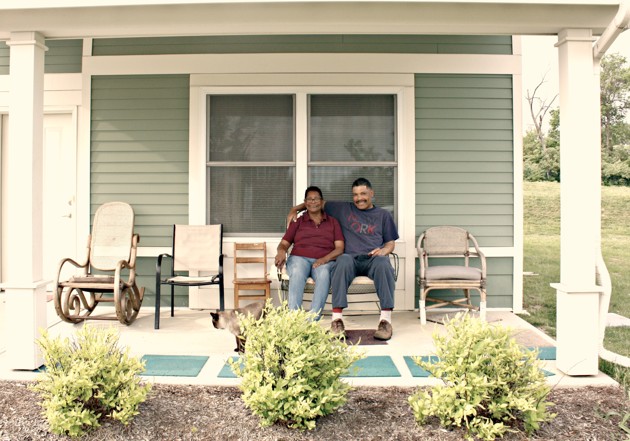
As recently as 2001, the Cincinnati Enquirer wrote a piece about a black family that had moved to a white neighborhood, been harassed, and decided to move back to Lincoln Heights. “Lincoln Heights provides the Hills and other African Americans a sense of home, history and pride that they don’t experience elsewhere,” the story said.

But over time, Lincoln Heights residents found it more difficult to maintain that sense of community. For one thing, the jobs in nearby towns in factories and chemical plants started to disappear as American manufacturing began to shrink in the 1970s and 1980s. As unemployment rose, Lincoln Heights lacked a tax base deep enough to underwrite community development and other social-welfare programs. Soon, it became obvious to anyone who grew up in Lincoln Heights that if you wanted to make something of yourself, you had to get out. People who grew up in Lincoln Heights and were lucky enough to go away to college didn’t come back. Those who stayed largely were the ones who couldn’t get out.
“People who left to go get educated, they never came back,” Willis told me. “They either stayed in their university cities or moved to Florida or California or what have you.”
The population of Lincoln Heights fell 45 percent between 1970 and 2013—from 6,099 in 1970s to 4,805 in 1990 to 3,367 in 2013. The population of the nearby village of Blue Ash grew 46 percent over the same period.
For Willis, it was a lesson in advocacy for African Americans: Black residents should have been focusing on creating local businesses and a thriving economy, rather than going elsewhere to succeed, he says.
“Dr. King was right to say we should be able have a cup of coffee. But, guess what, Malcolm X was right too. We should’ve been building our own,” he told me.
* * *
The future does not look bright for Lincoln Heights. Home values fell 76.4 percent between 2007 and 2013, while home values in tiny Indian Hill, a nearby suburb, rose 27.7 percent. The elementary school is abandoned, and when the district put it up for auction earlier this year, with a minimum bid of $69,900, no one came forward to buy it.

When I drove around town with Westmoreland, we passed crumbling homes and boarded-up stores. There was one convenience store that seemed busy—men congregated in its backyard, smoking cigarettes. But when I went back alone and tried to talk to the men in the yard, the owner, incensed, yelled at me as soon as I identified myself as a reporter.
“Move on out of here,” he said. I left and later learned from residents that the store is an open-air drug market, completely ignored by police. It sits on the same street where Carl Westmoreland grew up.
Last year, two nonprofit groups, the Cincinnatus Association and Citizens for Civic Renewal, put out a study that concluded that Cincinnati and its suburbs needed to cooperate—consolidate local governments and share services—to thrive. The idea was supported by an editorial in the Cincinnati Enquirer, which argued that cooperation could reduce inequality.
“Politically fractured regions can contribute to social separation and inequality, as residents perceive they can ‘move away’ from problems rather than contributing to their solution,” the editorial said.
Albert Kanter, the former executive director of the Lincoln Heights Community Improvement District, wrote a letter to the newspaper in support of the plan, arguing that it would help communities like Lincoln Heights.
But nearby wealthy towns seem to have little inclination to share services or revenues with Lincoln Heights. They were built, after all, not by sharing but by taking away. And they have little motivation to change that now.
Poloncarz’s plan for tackling poverty in Erie County draws mixed reviews
Re-post from the Buffalo News
The success of Erie County’s anti-poverty plan, introduced in the spring, depends on helping people like Eman Jabbar, who struggled to find a job after emigrating from Iraq and moving to Riverside more than two years ago.
After completing a child care training program, she welcomed the first children into her home day care last month.
The plan also counts on working with nonprofit agencies, like those at the Erie County Health Mall on Broadway near Bailey Avenue, which opened a year ago, allowing patients to be examined and treated close to their neighborhoods.
“I can get there in 10 or 15 minutes,” said Christine Laird, 72, who lives on Seneca Street. “The facility is clean and the staff is wonderful. They have much more on hand, so if the doctor gives you a slip for bloodwork, you can get it done right there.”
Efforts like these can lift people out of poverty, or at least lower the costs of caring for them, said Erie County Executive Mark C. Poloncarz, who has made reducing poverty a focal point of his administration as he prepares to run for re-election.
“I had a few people say, ‘Mark, why are you doing this?’ People don’t vote based on health and human services,’ ” Poloncarz said.
“I’m not doing it for votes,” he said. “It will cost us less in the long run.”
Supporting services that lead to a healthier population – he counts respite care, mental health programs in schools and senior fitness programs among them – could save millions in Medicaid dollars alone, he said.
It’s no small matter. Erie County is the primary provider of health and human services in the community, and more than half of the county’s $1.45 billion budget goes toward it.
Poloncarz announced in March a 49-point agenda called “Initiatives for a Stronger Community.”
“By addressing the root causes, we create a stronger community and we reduce our costs,” he said. “We looked at areas where we could have an impact, and could strengthen families on the edge so they don’t fall over into poverty.”
Some anti-poverty advocates welcomed the plan. Others are not overly impressed.
“I’ve seen nothing here to suggest that what Mark is planning goes beyond repackaging and restructuring what is there,” said Henry Louis Taylor, a professor of urban and regional planning at the University at Buffalo.
Taylor, however, believes Poloncarz is on the right track in encouraging more cooperation among government and private agencies.
“It’s a fantastic idea to build more collaboration,” Taylor said. “Right now, these people and groups do not work together as teams.”
Marlies Wesolowski is on the front line of poverty initiatives, as executive director of the Lt. Col. Matt Urban Human Services Center. Located on Broadway, the agency provides housing services, senior services, homeless outreach, education and three food pantries.
She applauds the county executive for trying to solve what seem like intractable problems.
“People get very comfortable in their jobs, so telling them you want to change the way they do things can be unsettling,” Wesolowski said. “This policy is one that was long overdue. Time will tell if it makes a difference.”
No silver bullets
With the region’s economy improving, 2015 is a good year to try make Erie County prosperous for all residents, Poloncarz said.
“We need to build a foundation for the future so this great revival we are experiencing is not just for the lucky few,” Poloncarz said. “If we don’t do it now, we will never do it.”
Among the efforts:
• Subsidizing internships for adults interested in working in child care, so they can get training and be certified;
• Encouraging local employers to train former prisoners to work in manufacturing and construction and make them employable;
• Leveraging outside funds to rehabilitate rental housing and support nonprofit developers in building affordable family housing;
• Coordinating with Say Yes and Buffalo Public Schools, including creating mobile health centers for students in their schools for screenings, contraceptive counseling, immunizations and mental health care;
• Attaching Child Protective Services liaisons to homeless and women’s shelters, schools, hospitals and law enforcement to identify children at risk; and
• Expanding outreach in lead poisoning prevention programs.
Poloncarz called communication the key to making the initiatives work.
That will start within county government, Poloncarz said.
The plans were devised by officials in the county departments and agencies for health, social services, senior services, mental health, probation, veterans’ services, public advocacy and the disabled, all of which deal with many of the same people.
Despite the overlap, the services often were “siloed,” with those in some departments not knowing what those in other departments were doing.
‘Through the cracks’
From her perspective, Wesolowski of the Matt Urban Human Services Center said one of the greatest failings of the current system is that the people who need help – those who may be schizophrenic, have hearing or vision loss, suffer from depression or who are overwhelmed by problems – often don’t have any idea what services exist or how to access them.
All too often, people are ill-equipped to figure it out.
“Even though the general public will think there are a whole bunch of ‘savvy’ folks out there who ‘game’ the system,” Wesolowski said, “I will tell you that I see a lot of people who don’t know which end is up. They need help just getting help.
“Half of the battle is getting people to know what services are available, where the services are and to have access to the services,” she added. “I serve 21,000 clients every year, but we are doing things we shouldn’t be doing – some of these services, it’s not my strength, not my wheelhouse.”
If nothing else, she hopes the initiatives will lead those who provide health care, housing, food, shelter from violence, mental health treatment and assorted other services to join forces and become more effective.
“There’s some agencies, for reasons of turf or that people are too busy … well, you can take your eye off the ball, and people can fall through the cracks,” she said.
Wesolowski said Poloncarz’s initiative can help in another way, as well.
“I’m hopeful that this will get folks out of County Hall,” she said. “Checking out what’s going on in the community makes them more sensitive to the need that’s there.”
Taylor of UB said the focus needs to be more local.
“You can’t look at Erie County or the city as the target,” he said. “The changes have to be made in delivery of services at the neighborhood level.”
“The difficulties and hardship come when you don’t even have money to put food on the table and then you also have to find public transportation to get to the help you need,” Wesolowski said.
Finding what works
The partnership of government and nonprofit agencies worked for Jabbar, who opened a day care in her home. She graduated from the child care training at Journey’s End Resettlement Agency.
Jabbar earned a college degree in her native Iraq and taught elementary school before her family fled to the United States. Despite her education, she struggled to find a job.
“It is harder here than in Iraq, understanding the many regulations and rules,” she said through an interpreter. “Doing that in a different language is the hardest.”
But she found the Journey’s End classes in running a child care center enjoyable. The agency supplied teachers and interpreters and Erie County employees gave advice on how to meet the health and safety standards so they could be licensed.
The county also joined forces with private nonprofits to reopen the Erie County Health Mall on Broadway near Bailey. It began accepting patients in its newly renovated offices in May 2014. Patients can take care of all their health care in one place, sometimes in one visit, and many do.
Poloncarz directed his commissioners and department heads to look at other ways Erie County can do a better job serving its poorest residents.
“You shouldn’t decide not to do something because it’s hard,” Poloncarz said.
Taylor said he’s skeptical that a restructuring, no matter how broad, will make much of an improvement.
“When you say you want to get people out of poverty, you don’t tell us anything,” he said. “Moving people from ‘very low income’ to ‘low income’ is not going to change the challenges they are facing.”
Nevertheless, Poloncarz is serious about trying to make a dent.
Poloncarz points to the Health Mall, staffed by Catholic Health, UB Dental, and Mid-Erie and Lakeshore Mental Health.
“We changed the model and we have seen 10,000 visits since it reopened a year ago,” Poloncarz said.
CEL graduates emerging minority and women entrepreneurs
Re-Post From UB – News Releases
BUFFALO, N.Y. — Megan McNally, executive director of The Foundry, has been named Protégé of the Year by the Allstate Minority and Women Emerging Entrepreneurs (MWEE) program, a joint venture by the University at Buffalo School of Management’s Center for Entrepreneurial Leadership (CEL) and the UB Center for Urban Studies.
McNally earned a $1,500 prize for the honor. She says the MWEE program taught her important lessons that will guide her work at the Foundry, a business incubator and community space on Buffalo’s East Side.
“When running a startup of any kind, it is hard to prioritize competing needs, so learning to rank needs and tackle the most pressing first has been extremely helpful,” McNally says.
Levino Johnson, founder and owner of Executive Investigation & Security, was awarded second place and a $1,000 prize. Catrice Huff, founder and director of Up, Up, and Away Child Care Center, took third place and a $500 prize.
The awards were handed out at a graduation ceremony for five CEL programs on June 3 at UB’s Center for the Arts.
Sponsored by The Allstate Foundation, the MWEE program helps minority and women entrepreneurs take their companies to the next stage of development with business development seminars twice a month, networking events and one-on-one mentoring.
After entering as protégés last year, 25 participants graduated, bringing the total number of local entrepreneurs who have completed the MWEE program to 205 since it launched in 2004.
In addition to the award winners, the graduates were:
Natalie Apparicio-Farrell, Healthcare Hub LLC; Howard and Sonya Brackett, Preventive Health Care; Milly Castro, Buffalo Key Properties; Esteban Guerrero, In His Hands Electric; Audrey Hall, Eco Serve Pest Services; Laura Haykel, iFlourish Consulting; Tara Jabbaar-Gyambrah, TMJ Consulting; Antoine Jackson, Jani-King and Jackson Development; Danielle Jackson, I Love Catering Buffalo; Melonya Johnson, BSMART Coaching.
Also, Janet Marcel, Paper Trail of WNY; Tirone Mosely, Creative Arizona LLC; Novi Paluch, Sasmita Batik Indonesia; Anna Povetska, Brr-ffalo Clothing & Novelty Co.; James Ray, Celebrities Executive Services Inc.; Jayme Smith, Studio J; Corina Stammworthy, The Laundromutt; Laurie Thomas, Thomas & Sons Janitorial Services; Andrea Veres, The Waxing Studio; Avon White, Eagles Best LLC; and Marcus Wise, 464 Gallery.
Each participant was assigned a mentor from the local business community to help devise realistic business goals and develop timetables and strategies for achieving them. Mentors met regularly with participants, providing advice in strategic and tactical thinking, marketing, long-range financial planning and more.
McNally’s mentor, Lynn Oswald, director of the Niagara County Small Business Development Center, was honored as Mentor of the Year.
“Lynn was an amazing resource who helped me cut through the distractions to create a prioritized plan for moving toward the bigger vision of our organization,” says McNally. “Working with other businesses from the MWEE program and supporting their growth has helped us grow our own capacity at The Foundry.”
The CEL is accepting applications for the 2016 MWEE program. To be eligible, an entrepreneur must be a woman or member of a recognized minority group and own a business in the Buffalo Niagara region.
Individuals interested in the program can learn more about the curriculum and speak candidly with MWEE alumni at an open house from 5:30-7:30 p.m. July 28 at the UB Downtown Gateway, located at 77 Goodell St., Buffalo. To register for the open house or apply, contact the CEL at 716-885-5715 or mgt-cel@buffalo.edu.
The Allstate Foundation, a charitable organization funded by subsidiaries of Allstate Insurance Corp., provides philanthropic grants to nonprofit organizations. With a focus on teen safe driving and building financial independence for domestic violence survivors, The Allstate Foundation also promotes safe and vital communities; tolerance, inclusion, and diversity; and economic empowerment. For more information, visit allstatefoundation.org.
Established in 1987, the CEL provides participants with individualized and interactive education in entrepreneurship. More than 1,200 CEL alumni employ more than 22,000 Western New Yorkers, and their businesses are worth more than $2 billion to the local economy. For more information, visit mgt.buffalo.edu/cel.
The UB School of Management is recognized for its emphasis on real-world learning, community and economic impact, and the global perspective of its faculty, students and alumni. The school also has been ranked by Bloomberg Businessweek, the Financial Times, Forbes and U.S. News & World Report for the quality of its programs and the return on investment it provides its graduates. For more information about the UB School of Management, visit mgt.buffalo.edu.
– See more at: http://www.buffalo.edu/news/releases/2015/06/037.html#sthash.cQ0XWuUs.dpuf
Plan to redirect services could ease poverty while saving the county money
Re-post from The Buffalo News
Poverty is a condition that affects more than just the poor. Paying for anti-poverty programs impacts nearly everybody in Erie County. More than half of the county’s $1.45 billion budget goes toward providing health and human services in the community.
Erie County Executive Mark C. Poloncarz is the latest high-ranking official to take a stab at finding solutions to poverty.
While Poloncarz is running for re-election, there probably aren’t many votes in tackling poverty. Success will be incremental, and many parts of the community have little sympathy for the poor. The onetime county comptroller broke it down by the numbers: “It will cost us less in the long run.” Simply improving health in the community will save the county millions of Medicaid dollars.
Poloncarz announced his 49-point agenda in March, called “Initiatives for a Stronger Community.” The plan would improve jobs skills and housing opportunities and coordinate services for the poor. So far, the attempt has failed to impress some anti-poverty advocates. Henry Louis Taylor, a professor of urban and regional planning at the University at Buffalo, suggested it hardly goes “beyond repackaging and restructuring what is there.”
Point taken, but, as Taylor went on to say, the county executive is on the right track when it comes to encouraging cooperation among government and private agencies. Something as simple as breaking down the walls separating county departments and nonprofit agencies has the potential to improve the lives of clients.
A great example is the county collaboration with private nonprofits to reopen the Erie County Health Mall on Broadway near Bailey Avenue, where better communication and smarter concentration of resources allow patients to access health care specialities in one spot.
It is no surprise that governmental agencies don’t communicate well with each other, whether they’re trying to protect their own piece of turf or just never had to collaborate. Poloncarz’s anti-poverty plan is aimed at unblocking bureaucratic logjams and allowing much-needed services to reach their intended targets more readily.
Buffalo Mayor Byron W. Brown announced his anti-poverty plan early in his first term. The “Roadmap for Reducing Poverty” drew plenty of criticism for identifying the problems without offering much in the way of solutions. Since then the city has worked on anti-poverty programs.
Tackling poverty is a monumental task. The county’s plan to repackage and redirect existing programs is a good place to start.
Making sure the Buffalo Billion reaches everyone
Re-Post From The Buffalo News
When Grace Tate thinks about the Buffalo Billion, she worries that something as basic as a bus route could keep poorer residents from sharing in the spoils.
As the state’s keystone economic development initiative unfolds – training workers in new skills and bringing thousands of promised new jobs to the Buffalo Niagara region – Tate, a vice president at the Buffalo Urban League, fears that low-income workers who don’t have cars might be shut out of some of these new jobs if they are created far from the urban core, in locations not served by public transportation.
That’s been happening for decades, as factory and service jobs have shifted to the suburbs, where having a car is a requirement for having a job.
If it keeps happening with the Buffalo Billion – and state officials have been promising that making the new jobs accessible is one of their priorities – then Tate fears the benefits of the state’s largess will largely pass by the region’s poorest neighborhoods, where many workers depend on buses and their feet to get to work.
“Once we get individuals qualified for jobs, we can’t get the candidates there,” Tate said.
To be sure, the SolarCity plant on South Park Avenue – and its 1,460 promised jobs – will be accessible. So are IBM’s software development jobs in the Key Center and those at other Buffalo Billion initiatives such as the Buffalo Manufacturing Works testing and research facility and the Albany Molecular Research drug development site on the Buffalo Niagara Medical Campus. But SolarCity’s suppliers, which could provide another pledged 1,440 jobs, could be scattered throughout the region, as could other spin-off jobs.
“Transportation is a big issue,” Tate said.
And it’s the poorest neighborhoods that need the jobs the most. About one of every five African-Americans who wants a job can’t find one, said Henry Louis Taylor, a University at Buffalo professor and the founding director of its Center for Urban Studies.
“We’re not really talking about pockets of unemployment,” he said. “We’re talking about huge holes where there is unemployment.”
The biggest hole is among workers who never finished high school. Unemployment among Buffalo residents between the ages of 25 and 64 who lack a high school diploma is 22 percent – four times the 5.3 percent jobless rate across the entire Buffalo Niagara region, said Gary Keith, the regional economist for M&T Bank in Buffalo. In contrast, city residents with a four-year college degree have an unemployment rate of just 4.6 percent.
Because jobs for workers without a high school diploma or its equivalent are so much harder to find these days, many of those residents have simply given up the job hunt. Only four of every nine city residents without a high school diploma are participating in the local work force, Keith said. In contrast, better than four of every five city residents with a four-year degree is part of the workforce.
“You can’t have an opportunity if you do not participate,” Keith said. “If you don’t have that entry-level skill set, you’re going to be pretty much doomed to not participate.”
That’s because many of today’s jobs, especially in manufacturing, are more sophisticated and demanding than the factory jobs of our fathers.
“The nature of work is going through an enormous shift,” said Richard Deitz, an economist at the Federal Reserve Bank of New York in Buffalo.
“The skill requirements of jobs are increasing,” especially as mid-skill jobs have shifted to cheaper overseas markets during the past two decades. “Workers can either move up the ladder … or they can fall down into lower-skill jobs.”
Area officials are moving to revamp the region’s training programs, hoping to focus on teaching workers the skills that actually are in demand by employers – a step that requires closer communications between businesses and local colleges and training centers.
“In the future, it’s about knowing how to learn and your ability to learn new tasks,” said Taylor, who thinks existing training programs have lost touch with what employers need.
“They don’t produce folks for specific jobs that are available, so that when they’re finished there’s a job waiting for them,” he said.
Instead, workers who have completed training programs often wind up frustrated because they find they aren’t much more employable than they were before, Taylor said.
And when they do land an entry-level job, it too often proves to be a dead end, with little room for advancement.
“In the African-American and Latino community, people realize that getting into a place doesn’t mean you’re going to be able to move up,” said Taylor, who urged employers to create “internal ladders” to help minority workers advance beyond entry-level jobs.
“I want to measure the Buffalo Billion based on the impact it is having on the neighborhoods right here,” said Assemblyman Sean Ryan, D-Buffalo, who late last month organized a forum on the potential impact of Gov. Andrew M. Cuomo’s economic development program.
“When we look back on the Buffalo Billion 10 years from now, we should measure it by its impact on poverty and unemployment in Buffalo,” he said.
Tackling the region’s racial divide
Read the full article from Buffalo News here.
“Henry Louis Taylor Jr., founding director of the University at Buffalo’s Center for Urban Studies, said he thinks the new federal desegregation effort ignores the economic realities of the housing market.
Most poor African-Americans live in cheap rental housing in neighborhoods such as Buffalo’s East Side because that’s all they can afford, Taylor said.
To combat that, the federal government should offer more subsidized housing vouchers and encourage housing development, both public and otherwise, in all sorts of neighborhoods, Taylor said.”
What Urban Renaissance? How Planning Can Bring Prosperity to Distressed Urban Neighborhoods
“Buffalo is experiencing an economic boom, but the explosion will not automatically spark the revitalization of precarious East Side neighborhoods, an area consisting of black neighborhoods lying east of Main Street and north of South Buffalo,” writes Henry Louis Taylor, Jr., PhD, professor of urban and regional planning, in a recent Buffalo News viewpoint piece (Sept. 7, 2014).
Taylor continues that residents of these neighborhoods bordering Buffalo’s booming medical campus, downtown and waterfront, are living urban life in reverse. Rather than moving toward economic opportunity, they are moving away from it. This “market-driven paradox” is the result of compounding factors including a lack of investment in existing housing stock and the spread of blight and joblessness, together fueling health challenges, inadequate schooling, crime and a lack of hope.
As director of the Center for Urban Studies, Taylor and a contingent of planning staff and students are extending economic opportunity to these communities through a soup-to-nuts neighborhood planning model rooted in research and aggressive resident and community outreach.
Most recently, the center completed the “Perry Choice Neighborhood Transformation Plan” for a post-industrial enclave just south of downtown and adjacent to the redeveloping Canalside area and Cobblestone District. The federally-funded comprehensive planning effort – led by the Buffalo Municipal Housing Authority (grantee) and the Center for Urban Studies (planning coordinator), along with the Philadelphia-based planning and design firm Wallace Roberts & Todd – links physical improvements, including a reimagined public housing complex, to improved access to quality education, job training, health services and transportation. A few miles north, in the Fruit
Belt neighborhood next to the Buffalo Niagara Medical Campus, the center continues its years-long “community as classroom” program to engage middle-schoolers in neighborhood redevelopment.
The center is now replicating these planning models for other East Side communities. Taylor says the work also applies broadly to legacy cities across the country and even internationally as the center prepares to launch a planning initiative in Havana, Cuba.
Earlier this year, HUD highlighted the work of the Center for Urban Studies (as well as the UB Regional Institute) in its recognition of the University at Buffalo as a national best practice for community outreach and development efforts in downtown Buffalo and its surrounding neighborhoods.
What is the role of planners in this kind of work?
Let’s take Buffalo’s East Side as an example. This community has a tremendous wealth of human and organizational capital. How do you put these multiple population groups together? Do you let them continue to operate in silos or do you help them work together? This gets to the profound role of planners. We have to be designers of the entire community. Planners need to build both the physical environment as well as the social and institutional structure of neighborhoods, the interfaces and the connections. If we are to bring about real, meaningful change for distressed urban neighborhoods, you can’t just build a house or create a really nice park. The community needs to be a part of and own the plan.
Tell us a little bit about how CUS builds buy-in for this work?
In the case of the Perry neighborhood, South Park Avenue is a boundary line between the predominantly white and black neighborhoods. We knew we had to build a relationship across that line. Once we got moving, they were extremely supportive and helpful. We held dozens of focus groups, conducted structured surveys of almost 70 percent of residents in the Commodore Perry public housing complex and interviewed service providers. We sent a busload of our students into
the community to conduct surveys of residents. We set up a Planning & Information Center staffed by our students and residents to link the planning team and community members.
This became the material we used to drive the plan.

Perry youth take “preference surveys” to share their input on proposed streetscape and building designs for their neighborhood. Photo courtesy of Center for Urban Studies
One of the project’s most significant findings was that the supportive services organizations were not efficiently organized to effectively deliver services in the neighborhood. They made no distinction between neighborhood- and city-level services and lacked a place-based focus on service delivery. Also, many residents didn’t realize the types of services available. We had to rethink the system. But what I didn’t expect was the willingness of these organizations to attend meetings and commit staff and time to this process – from Catholic Charities of Buffalo, to the United Way of Buffalo and Erie County, to Say Yes to Education. We were able to literally reconceive and redesign the organizational framework of the neighborhood and community. The heads of these organizations are now important collaborators and leaders of this plan.
How does this translate into implementation? Who needs to play a role, and how?
We are in the midst of a neo-liberal economy that calls for smaller government and fewer taxes. Government doesn’t have the capacity it used to. It becomes partner and other organizations drive development. At the same time, you need a lead organization to pull together this network and provide staff to move collaboration forward. It’s the catalyst, the engine and conscience of the plan that keeps thing moving in the right direction. It’s also important that developers buy into the vision. If they do, then you’ll find they’re willing to do some things they wouldn’t be willing to do otherwise. In the Perry neighborhood, when the Seneca Buffalo Creek Casino was being developed, we worked with the developer to externalize retail. They also worked with us to target housing for casino employees. Developing a neighborhood is a lot like stitching a quilt. Everybody has a piece, but if we stitch together with a theme, then we can make a great quilt.
Behind Buffalo’s renaissance is a framework of plans, including Buffalo’s comprehensive plan, a new regional economic development plan for WNY and the Green Code, the city’s frst zoning code rewrite in 50 years. How does CUS’s work at the neighborhood level build off these efforts?
Our job as planners is to connect to these efforts. In the case of the Green Code, we went back and forth to make sure the strategies were consistent, compatible and reinforcing across both plans. The Perry Choice plan also integrates with One Region Forward, a regional plan for sustainable development, as well as plans for adjoining communities, including the Larkin District to the east, the Old First Ward to the South and Canalside to the west. It’s a system of plans and it’s everyone’s job to connect those efforts. This applies, too, to on-the-ground development and specific projects. In the absence of this, it can actually accelerate decline in distressed communities.

The Commodore Perry Homes public housing complex today. Photo courtesy of Center for Urban Studies

New public and assisted living units are designed to be street-facing, visitable and energy-efficient. Rendering by Wallace Roberts & Todd
What else can we be doing to address this “market-driven paradox” affecting distressed neighborhoods in Buffalo and beyond?
We studied the Perry neighborhood census tracks and found that 30-40 percent of the population was spending 50 percent or more on housing. That’s a significant proportion of the population at or above the cutoff for the recommended financial burden for housing. When old housing meets a low-income population, it’s toxic.
“City leadership can do two things. One is to have a strategy for upgrading existing housing units. Most housing dollars now go toward new builds. The second thing is to creatively utilize our existing resources. Public art and small design projects can change the image of a neighborhood.”

The plan for the Perry neighborhood calls for more than 800 new and renovated mixed-income housing units over 10 years; restored street grid connections to the waterfront, downtown and South Buffalo; walkable, tree-lined streetscapes; a new central park and pocket parks throughout the neighborhood, and a 105,000-square-foot multi-service community center.
What if we were to structure curriculum to allow young kids in art class to engage in this work? In our summer academic camp with the Futures Academy [in the Fruit Belt neighborhood], a student made a sculpture out of “junk,” and it cost $4 to produce. We mounted murals on vacant buildings. It just requires the organization of people and institutions that are already willing to do this work. I would also call upon the private sector and foundations to invest in socially responsible causes in these neighborhoods. Local government doesn’t have this capacity. It’s a matter of how we refocus the resources we have.
How is CUS working to transfer knowledge across the city and outside the region?
The plan itself provides a framework for neighborhood development. In Buffalo, we’re already working with the King Urban Life Center to implement a similar plan for Buffalo’s Martin Luther King Park neighborhood, which will be anchored in early childhood education. This, in turn, will allow us to implement our early childhood education program in the Perry neighborhood. We also recently conducted a health needs survey for the Greater Buffalo United Ministries. Their network of churches will serve as a portal to a recently formed coordinated care network for the city’s Medicaid beneficiaries. If we can link that work to the Perry neighborhood and Kensington Heights, we can create a city-wide coordinated care network.
“At the center, we have a marriage between our research and our practice- based work. We’re publishing peer-reviewed research informed by the realities here in Buffalo.”
Robert Mark Silverman, [associate professor of urban and regional planning and a faculty affiliate of the center], is leading a project to make recommendations about where the government should place affordable housing in 10 of the fastest-shrinking U.S. cities, including Buffalo and several other transitioning cities where gentrification threatens access to affordable housing.
We work across the city and world to replicate and share ideas. In Cuba, we’re in the process of building a program to explore neighborhood conditions as social contributors to health issues. We’ve gotten through the first tier of approval from the Cuban government. We’re also attempting to set up a study abroad program on health and housing in Havana in partnership with UB’s School of Public Health and Health Professions. All this is connected.
Our overarching belief is that across the Americas, the challenges of marginalized groups are similar enough that we can create solutions with impact across the board.
New Cuba policy spurs mixed feelings in Cuban-Americans
The Buffalo News
By Melinda Miller
December 19, 2015
Surprised. Thrilled. Skeptical.
When President Obama said, “There’s a complicated history between the United States and Cuba,” he also was acknowledging the range of emotions that would greet the news this week that the U.S. is reopening diplomatic relations with the island – and with the Castros.
“My dad was a revolutionary against (Fidel) Castro and he is against anything that might benefit that government,” said Alberto Rey, a Cuban-born SUNY Fredonia distinguished professor.
Rey is visiting his parents in Miami for the holidays. Describing the mood of that heavily Cuban-American city, Rey said, “It depends who you ask.”
“There are others who will bite the bullet and say ‘OK, if it will help the people,’ and a lot of the younger people here are all for it,” Rey said.
“The reactions are the same here as in Miami,” said Rene De La Pedraja, a professor of history at Canisius College. Born in Cuba, he left as a young man in 1960.
“Younger people are excited, and a lot of the older ones – not including myself – are bitterly opposed to it,” he said.
De La Pedraja’s approval of the president’s action goes beyond mere acceptance.
“In my whole career and my whole life, I have been hoping for this to happen,” De la Pedraja said. “My family lost everything in Cuba. We have many reasons to be against the regime. But that is water under the bridge. It is time to end the suffering of the Cuban people. It is good for Cubans. It is good for business in the United States.”
For his part, Rey takes a wait-and-see-view of the development, tempering any enthusiasm with a hearty distrust of the communist government.
“A lot of people don’t understand that Cuba has traded with everybody else in the world, just not the United States. The government has remained in power because they know exactly how much business needs to occur to keep their people oppressed,” Rey said. “The United States isn’t going to just go in there. I think the (Cuban) government will be very careful about how much trade they allow.”
Eunice Lewin, who left Cuba at age 17, declares herself “thrilled, very thrilled” about the new policy, but she agrees with Rey that a diplomatic and trade freeze that lasted 54 years will not thaw easily.
“It’s not going to happen overnight,” said Lewin, a former Niagara Frontier Transportation Authority commissioner and member of Roswell Park Alliance, Buffalo Urban League and Hispanics United of Buffalo, among other groups. “Some of us are thinking things will go very fast, but it’s not going to happen that way.”
She has followed the news this week in Hispanic media, where she said the conversations have been “intense.”
“I do understand the reaction of those who are opposed to it,” she said. “You could never minimize the suffering the Cuban people have gone through. But it is 2014 and (the embargo) hasn’t helped them.”
Lewin’s father was born in Jamaica and her mother was Cuban. She grew up in Guantanamo. Now she is a trustee with the State University of New York, and she hopes education is among the initial areas of cooperation.
“I would love to see more (student) exchanges with the University at Buffalo. I would like to see that move very quickly,” Lewin said. “UB has the international infrastructure in place to build on with its China program, and I think through education you can accomplish quite a bit. Think about it. It would just be unbelievable!”
Lewin has had siblings return to Cuba to visit, but she said the closest she has come is looking across the sea toward her native country 90 miles away. That could change soon.
“I definitely will take the trip,” she said. “Consider what Cuba has to offer educationally, socially, economically, culturally. In these areas, they are holding their own. Now with the U.S. back in, imagine what could be accomplished. We have to move forward.”
Henry Louis Taylor Jr., professor of urban and regional planning in UB’s School of Architecture and Planning, already has taken the trip many times, researching life among ordinary Cubans and writing a book about it, “Inside El Barrio: A Bottom-Up View of Neighborhood Life in Castro’s Cuba.”
He is cautiously optimistic about Obama’s action.
“In my opinion, this is long overdue. I think it has the potential to be very, very positive,” Taylor said, with just a few reservations. “Lifting the embargo would have a good effect on Cuba economically, to be able to trade with a natural trading partner and conduct joint ventures. That could create job opportunities for the low-income residents who have borne the largest impact of the embargo.”
A possible down side for that same population could be a greater imbalance of wealth between the country’s citizens and a weakening of the current social support system, “and that could increase the tension between the white Cubans and the Afro-Cubans,” he said.
Taylor also sees Cuba as a place ripe for tourism, noting that for travelers who are allowed to go there, it is one of the most beautiful and affordable destinations in the Caribbean.
“One of my greatest fears is that Cuba will become like the Bahamas, with high costs and very expensive for its own people,” Taylor said.
De La Pedraja mentioned the tourist aspect, also, but he has yet to return.
“My son is dying to go,” he said.
“I’ve always been hesitant to return,” he said, mentioning a Cuba trip sponsored by Canisius. “I encourage my students to go, and I have had opportunities, but there is something that holds me back.”
He has traveled throughout Latin America and written extensively about the region’s history, but for him, Cuba is different.
“For me, it is opening up a box of memories,” he said. “So much of the island, particularly Havana, where I am from, is pretty much intact from when I was there. It is almost frozen in time. It would be like going through a time warp.”
Rey, who also is an artist and has created many works inspired by Cubans who fled their country, understands that feeling. He has gone back.
“The reports of how good the country is running have been overstated,” Rey said. “Thirty years after I left, I went back and it was exhilarating, beautiful, many places hadn’t changed, and even the derelict ones were beautiful, but a couple of days later it gets depressing, because you see how oppressed the people are.”
De La Pedraja pointed out that Fidel Castro, the retired revolutionary founder of today’s Cuba, had said at one time that restoring relations with the United States would complete his mission.
“I wouldn’t be surprised if he dies in the next few weeks or months,” he said.
Rey said that would be the kind of news that Cuban-Americans like his father, who saw people he knew shot and imprisoned by the communists, would welcome.
“A lot of people would rest in peace if they could see that,” he said. “A part of them would be much happier if that chapter could be closed.”
Talk of South Park stadium site stirs hornet’s nest for neighbors
Re-post from The Buffalo News
It’s the biggest possible city site for a new Bills stadium, just to the east of the Buffalo River, with a north end zone aimed at the downtown skyline.
Yet it has stirred a hornet’s nest of potential opposition from two neighborhoods, one predominantly African-American, the other overwhelmingly white.
The South Park stadium site, identified in a state consultant’s report last month, would tuck a football palace in the vast triangle formed by the river, Louisiana Street and north of South Park Avenue.
But the larger development footprint surrounding the possible stadium site – defined by a zigzagging boundary line that looks like a gerrymandered congressional district – identifies the Commodore Perry Homes, as well as a prominent business strip along South Park Avenue as possible sites for redevelopment. And the stadium itself would swallow a popular waterfront park.
Not surprisingly, you’ll hear a lot of not-in-my-backyard, or NIMBY, sentiments from both public housing advocates and those who would like the Old First Ward to remain, well, old.
Even though the state stadium study does not include a call for demolition of any homes, residents fear that the ominous red “D” on the state’s stadium map – which stands for potential development sites – really spells death to their neighborhoods.
“When folks come to take your homes, whether you’re black or white, middle class or poor people, you’re all in the same boat,” said Sam Smith, chairman of a residents’ council representing city housing tenants. “They always choose the path of least resistance. We’re all looked at as something that’s in the way of so-called progress.”
Several sources said that opinion of the possible stadium site is much more mixed in the Old First Ward, with many thinking the facility would be a boon to the neighborhood.
But then there are loud voices such as that of Julie Cleary, who lives on Hamburg Street in the ward, a few blocks east and south of the proposed site.
‘A loss of our homes’
“It would mean a loss of our homes, our neighbors and our church, which is most important to all of us,” said Cleary, a key player in defeating the proposed move of the Buffalo Zoo to the riverfront many years ago.
“It would be the end of our way of life.”
Truth be told, though, that’s not what the stadium site map spells out.
The yellow border on the site map – which swallows up the Perry projects and the South Park Avenue home of prominent businesses such as Mazurek’s Bakery, Carbone’s Pizza & Subs and Adolf’s Old First Ward Tavern – merely indicates the areas that could be affected by the stadium, said a source who was involved in the development of the state stadium report. It does not mean that all, or even any, of the buildings within the yellow line would come down.
In fact, none of the three proposed downtown stadium sites requires the taking of any homes, said the source – who added that other potential sites were rejected precisely because they would require the demolition of housing.
Hearing that, Common Council Member David A. Franczyk of the Fillmore District advised caution.
“It doesn’t mean they’re going to have to go in there and plow it all out,” Franczyk said. “It doesn’t mean (that South Park business strip) is scheduled for removal, and it shouldn’t be.”
Still, advocates for the residents of the Perry Homes look at the stadium plan and see the end of a neighborhood that was the childhood home of many current city leaders.
“I don’t like the South Park site,” said former Council President George K. Arthur.
“People have been living there for years and years. The South Park District is an old established district with a lot of history, and all of it would be gone.”
Henry Louis Taylor Jr., founding director of the Center for Urban Studies at the University at Buffalo, predicted that the South Park site for a stadium would displace at least 1,000 to 1,500 residents, most of them in the Perry Homes.
“You’re not just displacing people,” Taylor said. “You’re destroying communities, including the social networks people make to help them survive in the city.”
Others, though, said the Perry housing – parts of which date from the 1930s – are doomed, regardless of whether the stadium is built in the neighborhood.
“Perry, as we see it, is not going to remain,” Franczyk said.
Franczyk noted that the projects’ towers, with their dimly lit hallways, are not an inviting living environment.
Interest in preserving park
Then again, the Perry Homes might actually make a good stadium site, said Laura Kelly, director of the Old 1st Ward Community Association.
“You look up at them, and a lot of them are boarded up and vacant,” she noted.
Kelly, like other First Ward community leaders, is strongly opposed to the South Park stadium proposal. But both she and Franczyk said opponents appear to be outnumbered in the neighborhood. Kelly said many neighborhood residents work at First Niagara Center and see a football stadium as bringing more employment to the neighborhood.
“I would say the neighborhood in general is very excited about the possibility of the stadium,” Kelly said.
But it shouldn’t be, she quickly added.
“This effectively would cut the neighborhood off from the waterfront again,” said Kelly, who also noted the possible impact of a stadium on a wide range of neighborhood businesses.
More than anything else, opposition in the Old First Ward appears likely to come from those who want to preserve Father Conway Park, a heavily used green space that falls within the footprint of the proposed stadium site. But the issue is larger than that, said Peg Overdorf, director of the Valley Community Center.
“I don’t want my neighborhood to be the backdoor of a stadium,” she said. “I don’t want to live in a sea of parking lots.”
But the source who was involved in drawing up the report said there may be ways to save parts of Father Conway Park, or move it.
And Franczyk – who fought for passage of a Council resolution calling for the stadium to be located in the city – stressed that a stadium consultant’s report doesn’t necessarily mean that a stadium, even if it’s built at the South Park site, would lead to the dire consequences that some are predicting.
If something concrete is proposed that concerns the neighborhood, Franczyk said, “let’s talk about it.”
Taylor, a longtime Bills season-ticket holder, believes that the Bills can copy what the Atlanta Falcons ownership is doing.
In Atlanta, the Arthur M. Blank Family Foundation, has committed $15 million toward developing the Westside neighborhood near the new stadium.
The UB professor would like to see Bills owners Terry and Kim Pegula make a similar commitment here.
“They should put aside a significant amount of resources to expressly address neighborhood development in and around the stadium,” he said.
Taylor, who has done research on distressed urban neighborhoods and the redevelopment of shrinking cities, is concerned about the current residents of the area if a stadium is built on the South Park site.
‘There can be synergy’
“Economic development doesn’t have to overwhelm and drown social development,” he said. “There can be synergy between the two.”
And the loss of green space such as the park also would hurt the community, Taylor said. There aren’t many green spaces for African-Americans to exercise and work out in that part of the city, and that’s crucial, in his view, because of the high levels of respiratory problems, including asthma, among blacks living there.
Cleary, from the Old First Ward, had the same reaction, about the possible loss of Father Conway Park at the South Park site.
“That’s out of the question,” she said. “That’s as sacred to us as our homes.”
Early risers work to make ends meet
Buffalo News
By Melinda Miller
April 4, 2015
Aiesha Randle leaves for work by 6:30 a.m., but she doesn’t worry about waking her husband. He has been at his job for two hours by then.
Curtis Flakes sees neighbors getting ready to leave when he walks to work for his 5:30 a.m. start time as a supervisor at a Grider Street linen facility.
And Clyde Dixon and his wife run a small day care in their Leroy Avenue home, where the first children arrive a little after 5 a.m. Then between 6 and 6:30 a.m., Dixon drives around picking up other children whose parents also work early.
They are among the hardy early-to-work residents in the Buffalo Niagara region. But they’re not alone among their neighbors in the Leroy and Delavan-Grider neighborhoods, where a higher share of residents leave for work before 7 a.m. compared to other neighborhoods, a Buffalo News analysis of census data shows.
Flakes’ neighborhood, near the old Central Park Plaza site, stands out for how many of its residents head to work before most of us. Nearly one-half of the workers who live there leave home between 5 and 7 a.m. That’s the highest percentage of any census tract in the two counties and twice the region’s overall rate. Only Buffalo’s Fruit Belt neighborhood rivals that percentage, with some 45 percent of its residents leaving for work so early.
“It’s part of the job,” Flakes said. “Early bird, you know.”
As Flakes heads to work, he sees nurses and bus aides also leaving for their jobs, along with a cab driver and a school teacher in the neighborhood.
“It’s a very hard-working neighborhood,” said Flakes, 35.
It’s also a poor one, where nearly 40 percent of the residents live below the poverty level.
The four neighborhoods with the region’s highest concentrations of workers leaving for work between 5 and 7 a.m. are considered poverty areas by the federal government.
The work schedules alone for many in these low-income neighborhoods should dispel any notion they aren’t committed to working.
“I hope so, because it’s my experience that people who live in these neighborhoods are the hardest workers, and they get the least reward,” said Henry Louis Taylor Jr., a professor in the Department of Urban and Regional Planning and founding director of the Center for Urban Studies at the University at Buffalo’s School of Architecture and Planning.
The other areas where people tend to leave for work early are outlying towns, like Wales, Holland and Sardinia in Erie County and Hartland and Newfane in Niagara County. None of these towns has high poverty rates. Longer commute times for residents in these towns with jobs in Buffalo and Amherst likely explain why many of them leave for work early.
The highest concentrations of early-to-work residents live in African-American neighborhoods with many holding low-wage jobs, Taylor said.
“Their jobs tend to start early,” he said.
Taylor said at times he arrives at his campus office as early as 7 a.m. – and the janitor is already there working.
“They work hard,” Taylor said.
‘Nature of the job’
Clyde Dixon wakes up by 4 a.m. every day in his Leroy neighborhood home.
“I pick them up and I take them home,” Dixon said of the day care children.
Although his wife retired and he had knee replacement surgery, they started caring for a few children once he was back on his feet.
“We had to help people with their kids, so they can get to work,” Dixon said.
With five grandchildren and three great-grandchildren himself, he added, “We like kids anyway.”
Most of the full-time jobs with shifts outside the traditional daytime schedule are in service sectors, held by those like police officers and firefighters, food service workers, nurses and bus drivers.
“There are positives in these schedules and there are negatives,” said Jessica Houston Su, an assistant sociology professor at the University at Buffalo, who has done research on people who work early. “Generally, for working class jobs, it tends to be negative.”
Su studies people who work early, overnight and on weekends to see how their work hours affect their lives, families and health.
Those who work these types of schedules tend to fall into two groups, she said.
“There are the skilled workers – nurses, doctors and such – who have a different relationship with night work than employees in lower-paying jobs,” Su said. “For some of them, (these shifts) are a way to strategize their child care schedules, to ensure someone is always home, even if they are sleeping. It’s called tag-team parenting and it solves problems of child care cost and availability. However, it also can be bad for marriages.”
For many low-wage, early-shift workers, however, the hours are just the nature of the job, Su said.
“In a 24/7 society, we’re expecting people to be available for those shifts, and it has exploded as a part of the working-class experience,” she said.
Among workers who live in the region’s 200 nonpoverty census tracts, almost one-half leave for work between 7 and 9 a.m.
But among workers who live in the region’s 23 highest poverty areas, just more than one-third leave between 7 and 9 a.m. A higher percentage of workers in the poor areas leave for work before 6 a.m. or between noon and midnight, according to The News’ analysis of newly released census estimates.
“The higher-paying jobs have more favorable work hours,” Taylor said.
For those with lower-paying jobs, “you have a lot of challenges, and one of these is getting up early in the morning,” Taylor said.
Workers whose shifts vary from week to week are the most vulnerable, Su said. Mixing early, late and overnight shifts – common in food service and health care positions – is disruptive in several ways.
“It throws off their circadian rhythms, so they get less sleep,” Su said. “Then there are potential long-term health consequences. You’re always in this kind of jet-lagged state.”
Workers with a regular schedule, even if it’s early, fare better, she said.
The weather effect
Randle loves being a nurse, and she has worked the early shift for at least eight years.
Workers like her could not be happier for the arrival of spring – even as cold as it has been.
This past winter pushed the predawn starts for her and her husband to even earlier hours as they navigated snow-clogged streets and subzero temperatures.
“He’s the one that has it the hardest,” Randle said of her husband. “We literally had to get up in the middle of the night to shovel to get him out. It takes a toll on you.”
Like many who leave for work before others are awake, Randle has a job in the health care sector that runs on eight- and 12-hour shifts that often start at 7 a.m.
She lives a couple of blocks from the Grider neighborhood with the highest concentration of early-to-work commuters. Most in the neighborhood – around 80 percent – have jobs in the private sector, making an average of between $12 and $13 an hour.
In the Leroy neighborhood near Kensington Avenue, where almost half of the residents head for work between 5 and 7 a.m., the median wage is $25,708 annually, according to the Census Bureau.
Randle said she sometimes helps younger co-workers who don’t own cars.
“There are a couple of aides I work with who live in the neighborhood,” she said. “With the weather so bad, (Metro) stopped some of the bus runs, so I would give them a ride,” she said. “The weather really affects people who depend on public transportation. They otherwise have to depend on cabs. Then, when it was so cold, there were no cabs either.”
“The weather has a profound effect, especially for health care professionals,” Randle said. “We can’t stay home.”
Nikki Hicks, who works for BlueCross BlueShield of Western New York, travels among health care facilities collecting data.
She gets up at about 5:30 each morning and is on the road no later than 6:45 a.m.
She’s glad to see the end of the brutal winter, too.
“The thing is, I’m not alone on the road,” Hicks said. “There is traffic out there (before 7). I’m not the only one.”
Like what you do
Brighter and warmer days mean more sleep for some of the early risers.
Hicks said that, in the winter, she might get up as early as 4 a.m. if she expects weather to be a hassle.
But once summer arrives, she sleeps a little longer. In addition to her “day job,” she works as a home care nurse, taking care of children with tracheotomies and gastrotomy tubes. And, once in a while in the evenings, she enjoys pursuing her other career, performing as a singer.
“I’ve dialed that back,” she said. “Knowing that I have to be up so early in the morning – well, it’s not pretty.”
As with any job with any kind of schedule, the early risers generally agree that the healthiest kind of work is work that they like to do.
Randle wouldn’t trade her early shift at a nursing home.
“I like working early because you get more interaction with the residents. You have more one-on-one,” she said. “There’s more sociability during the day – you really work with the people. It gives you a chance to fulfill your career goals.”
And there’s another plus.
“When it’s busy, it goes quickly, and half the time, you look up and your time is gone.”
Flakes, the supervisor at Clarus Linen Systems on Grider Street, said his early shift means “you get off early.”
He grew up in a household where he always had breakfast waiting for him early in the morning.
So waking up early now poses no problem for him. In fact, he said he gets up every morning in his Montclair Avenue home without an alarm clock.
The one drawback he cites for his early shift?
It can be hard to find a place that serves anything but breakfast at 10 in the morning, which is his lunch break.
“It’s still breakfast everywhere,” he said. “You can’t find a hamburger.”
email: mmiller@buffnews.com and plakamp@buffnews.com
Taylor named to UAA Service Honor Roll
Henry Louis Taylor, Jr., PhD, professor of urban and regional planning, is among a distinguished group of individuals being inducted into the Service Honor Roll of the Urban Affairs Association, an international professional organization for urban scholars, researchers, and public service professionals.
The honor roll recognizes individuals for their commitment, intellect and energy in service to the organization, which is dedicated to creating interdisciplinary spaces for intellectual and practical discussions about urban life.
Taylor, who is also founding director of the Center for Urban Studies, served on the board of UAA from 1995 to 2001, three years of which he served as chairman of the Membership Committee. In 2000, he conceived and developed TheCyberhood.net as a virtual commons for students, scholars, practitioners and activists concerned about cities and their metropolitan regions. The site, co-sponsored by the Urban Affairs Association and the Center for Urban Studies, has emerged as one of the top academic websites in the nation and attracts visitors from around the world.
“It is a humbling experience to be honored by the Urban Affairs Association, the nation’s premiere urban studies organization,” says Taylor. “As a historian and urban planner, you engage in activities designed to improve the plight of marginalized groups, especially blacks and people of color, including the building of organizations and institutions that are devoted to producing knowledge and solving the wicked problems confronting society. You do what you do without thinking about rewards or awards. So, when they happen, you are surprised and humbled.”
Taylor was selected along with 12 other Honor Roll inductees by a unanimous vote of the association’s Governing Board. Other honorees include urban affairs scholars from disciplines as diverse as urban and regional planning, geography and political science, as well as a civil rights activist and economist being recognized posthumously.
Taylor was inducted into the Honor Roll at the UAA’s annual conference in March 2014 in San Antonio.
Mural dedicated at Futures Academy
Children gathered on the front steps of their Buffalo school Thursday afternoon for a ribbon-cutting ceremony to re-name the school.
Futures School #37 on Carlton Street in Buffalo’s Fruit Belt neighborhood will now be called the Marva J. Daniel Futures Preparatory School #37. The school is named for Marva Daniel, who spent almost 20 years as principal there. The school district credits Daniel with leading the school’s renaissance.
According to a statement from the Buffalo Public Schools, School #37 currently exceeds the state average in testing. It features single gender classrooms, mentoring opportunities, and a partnership with the University at Buffalo in Architecture and Planning.
Following the ribbon cutting on Thursday, children unveiled the large mural they painted with their UB partners in the Art and Urban Studies Departments.


